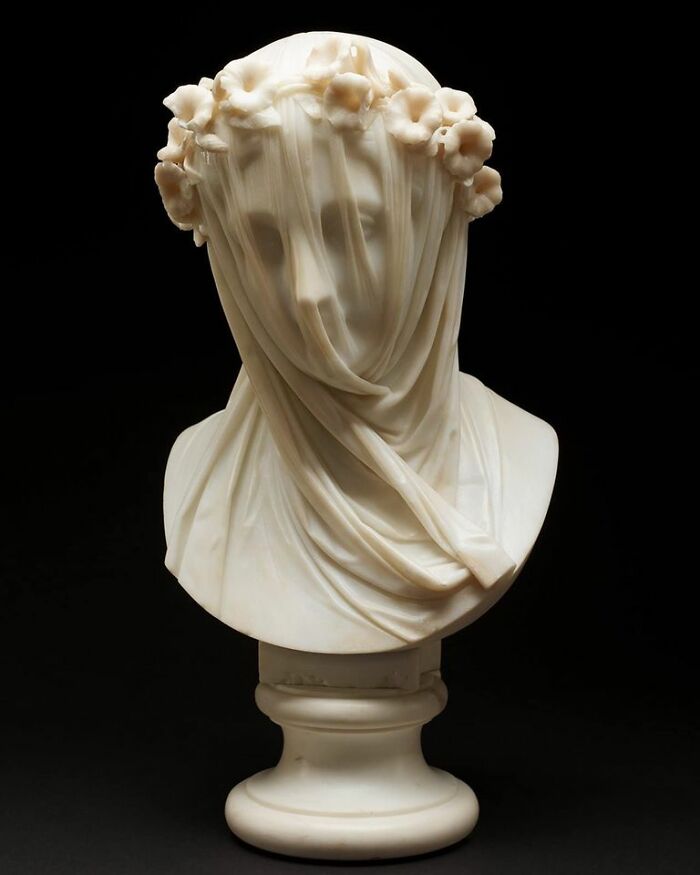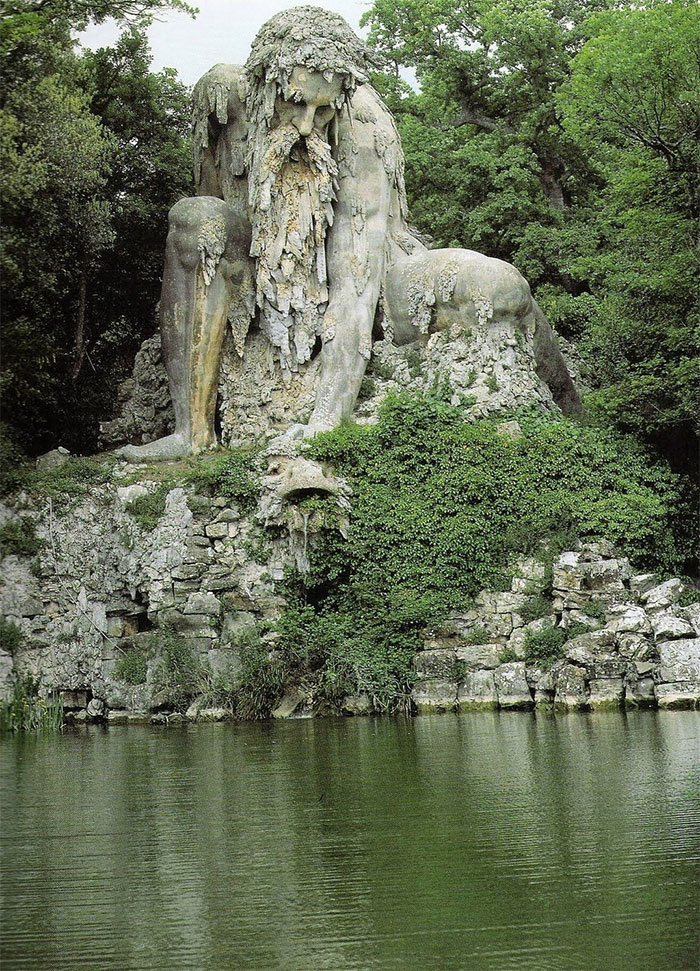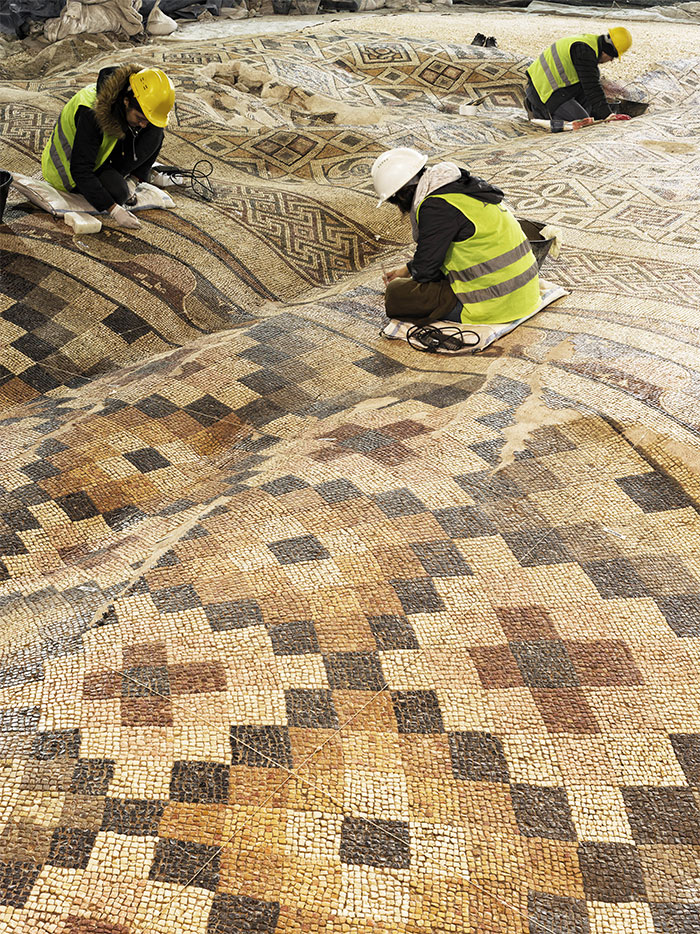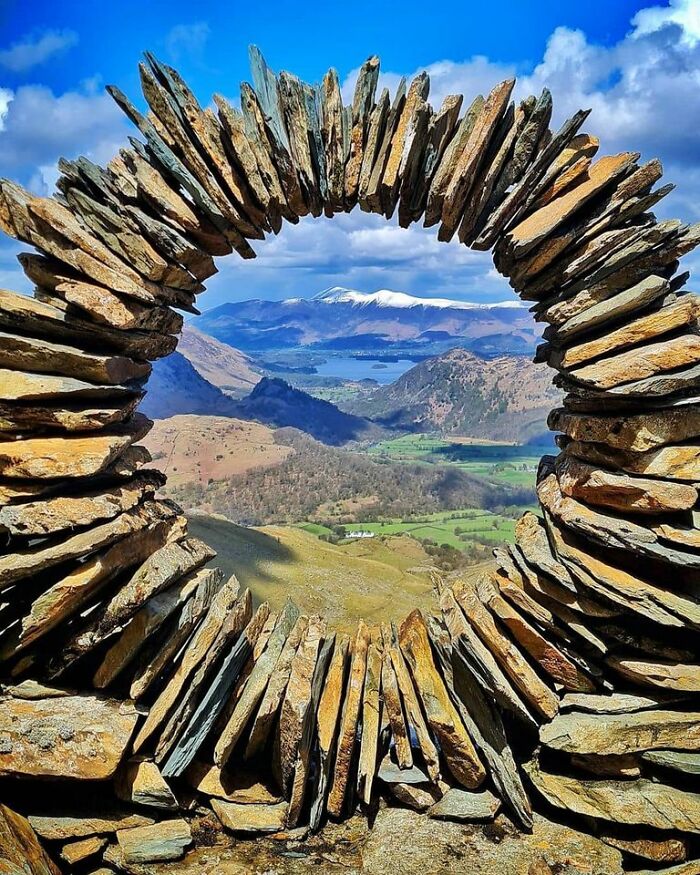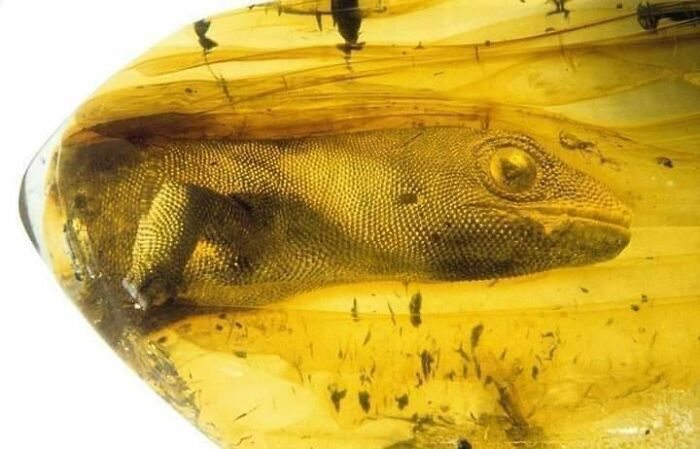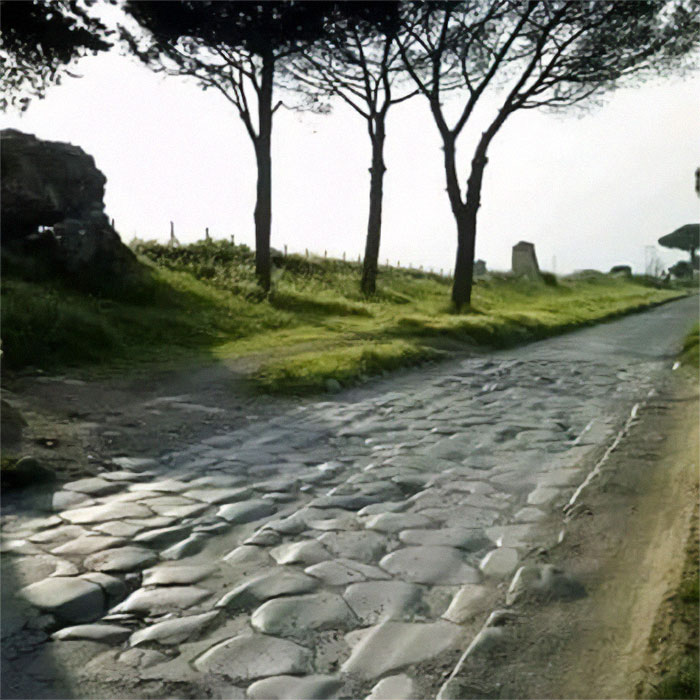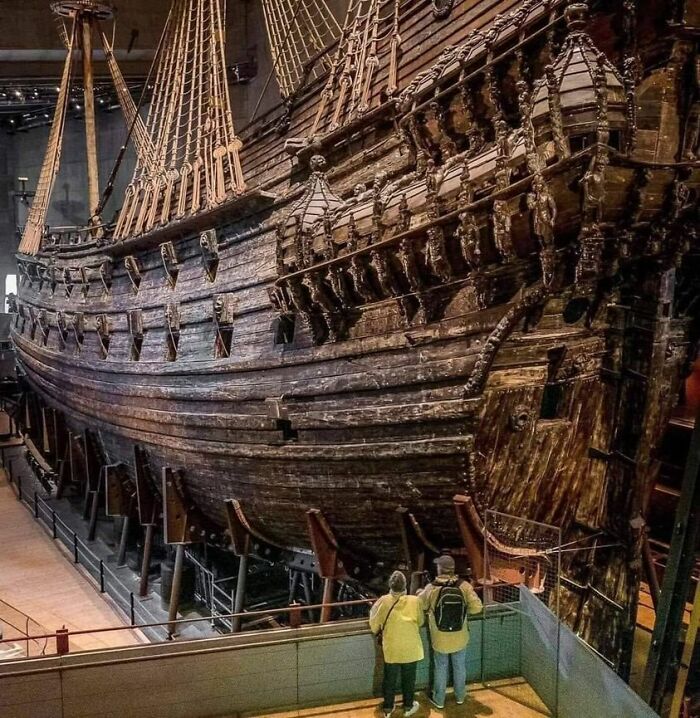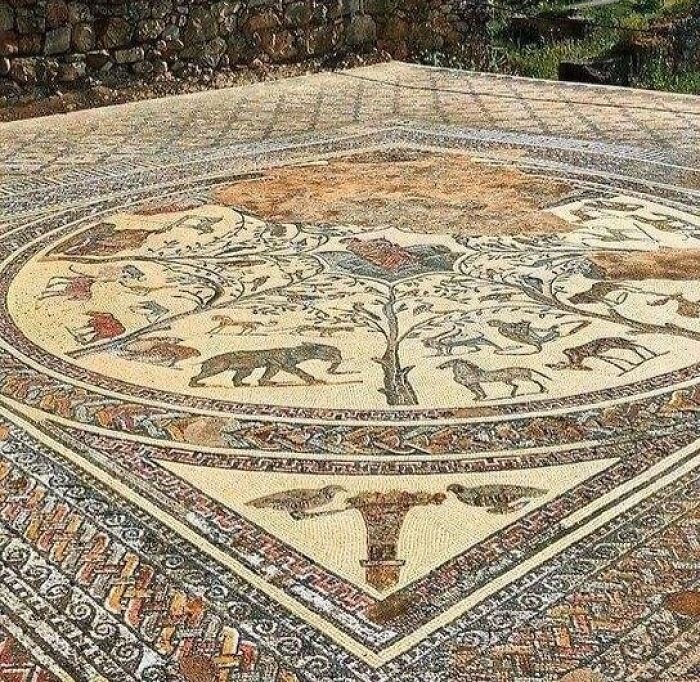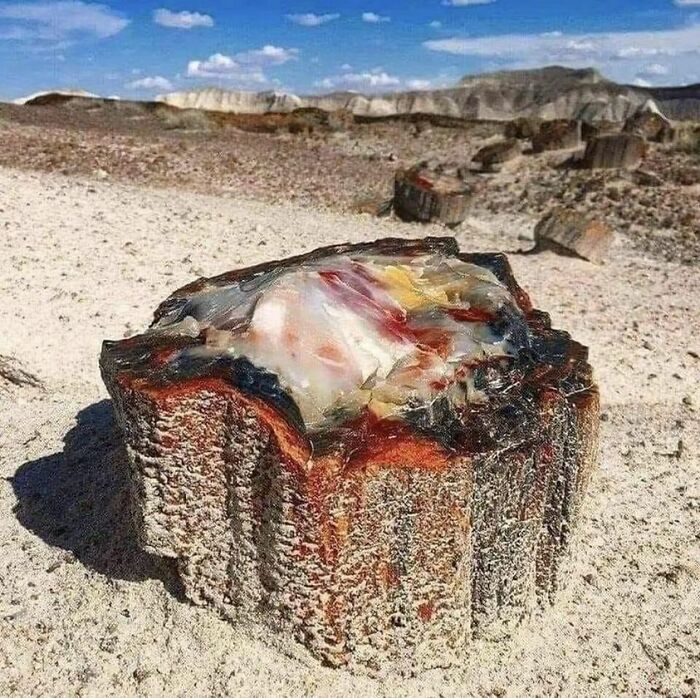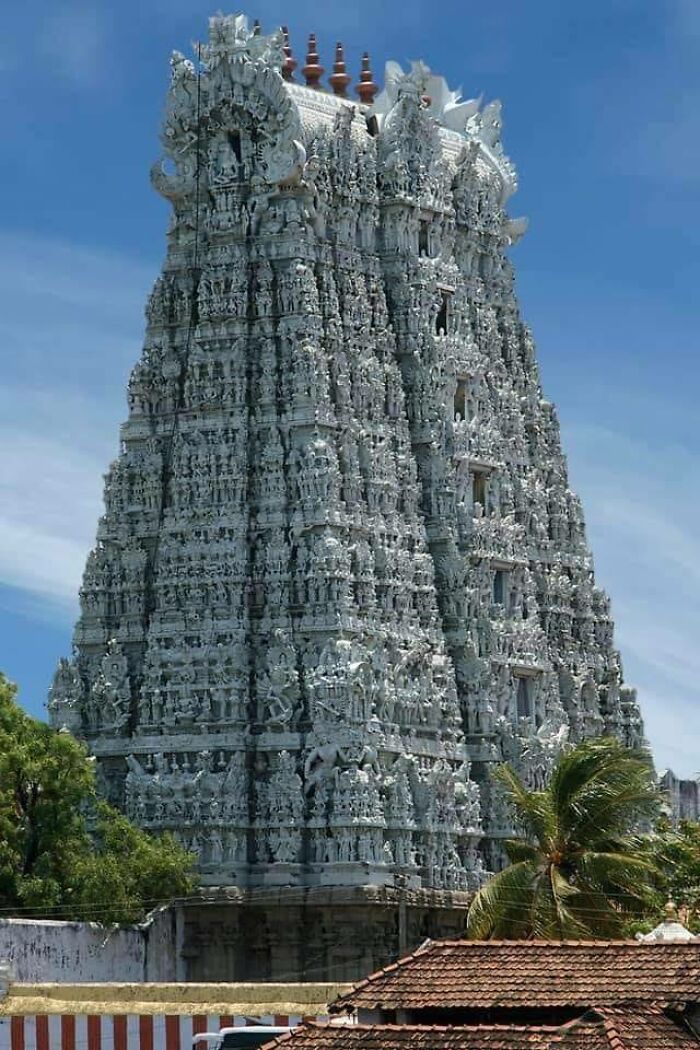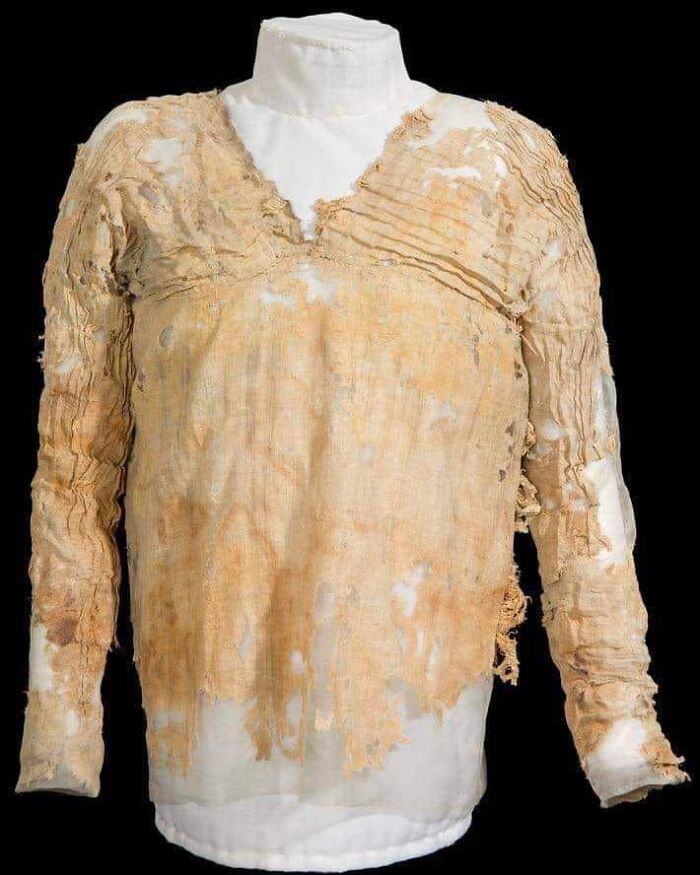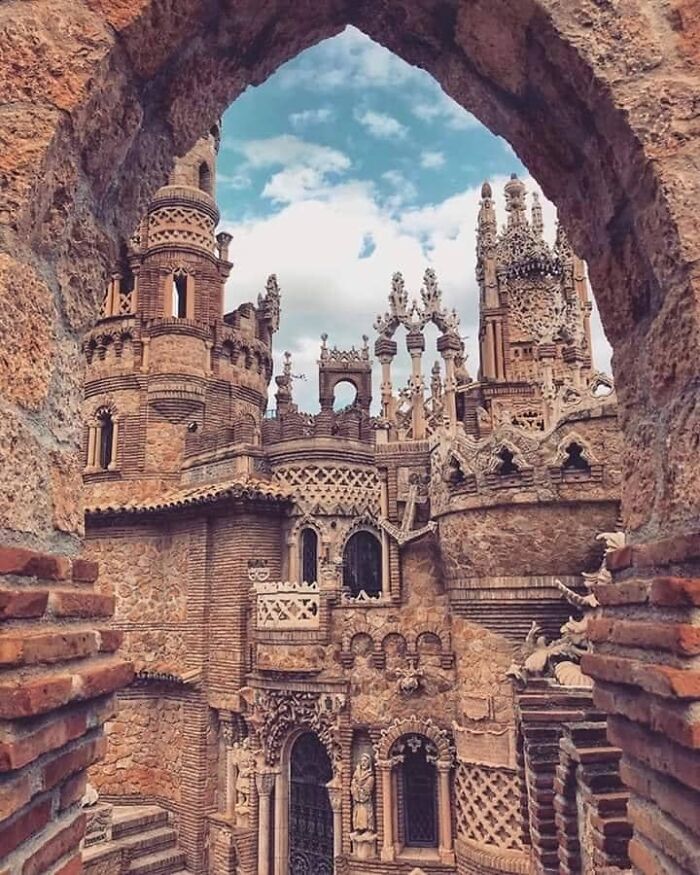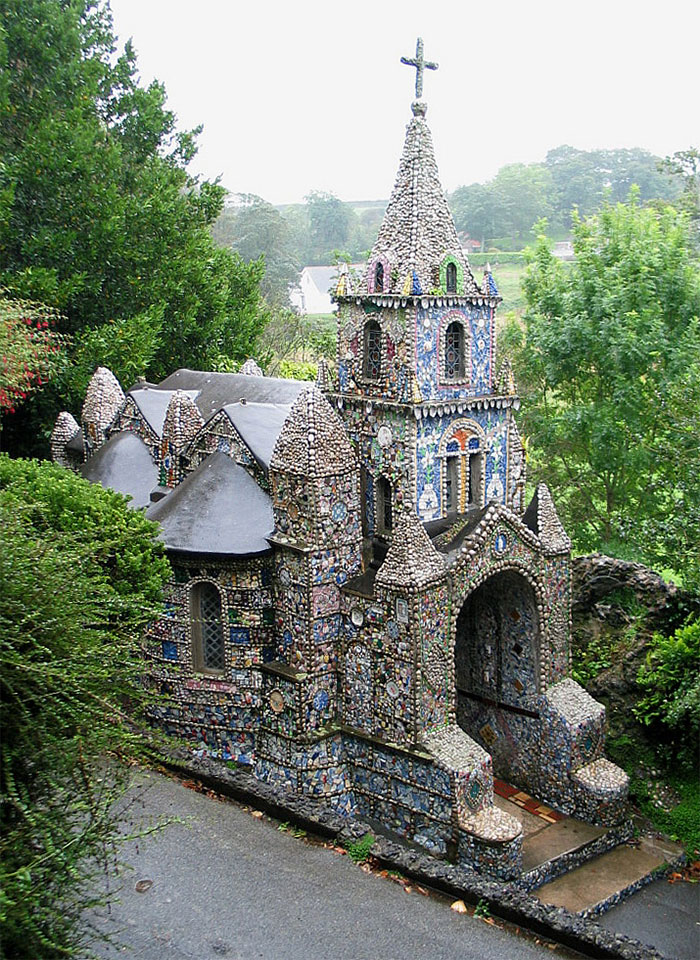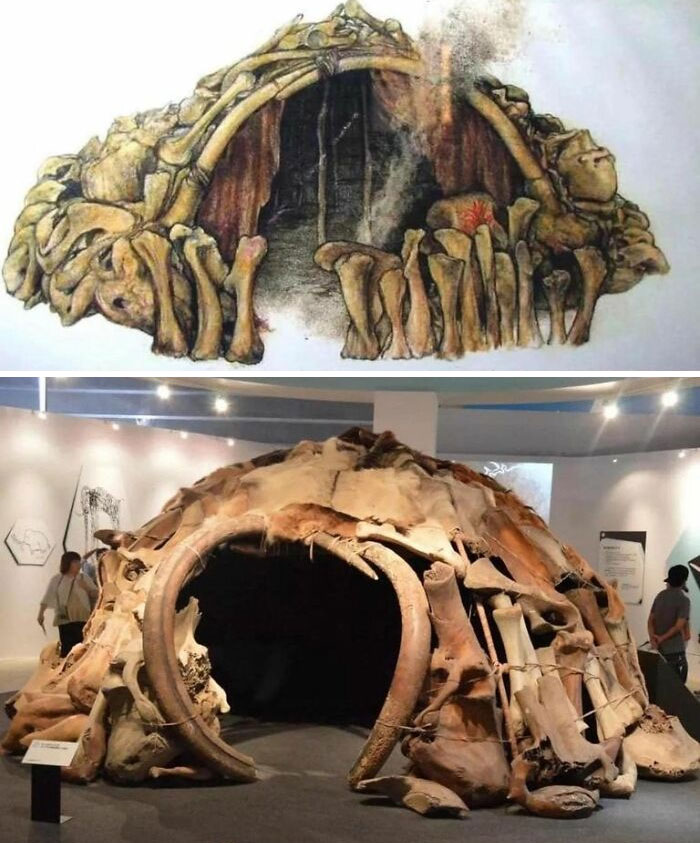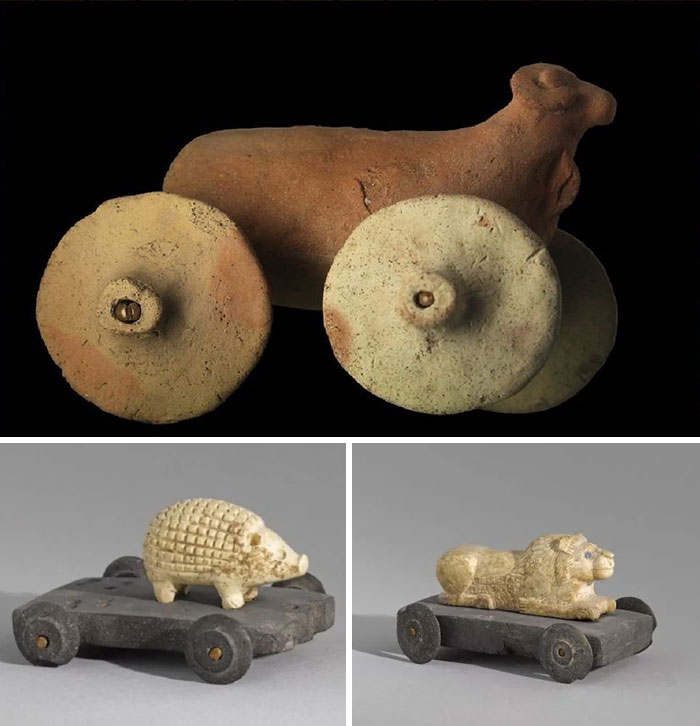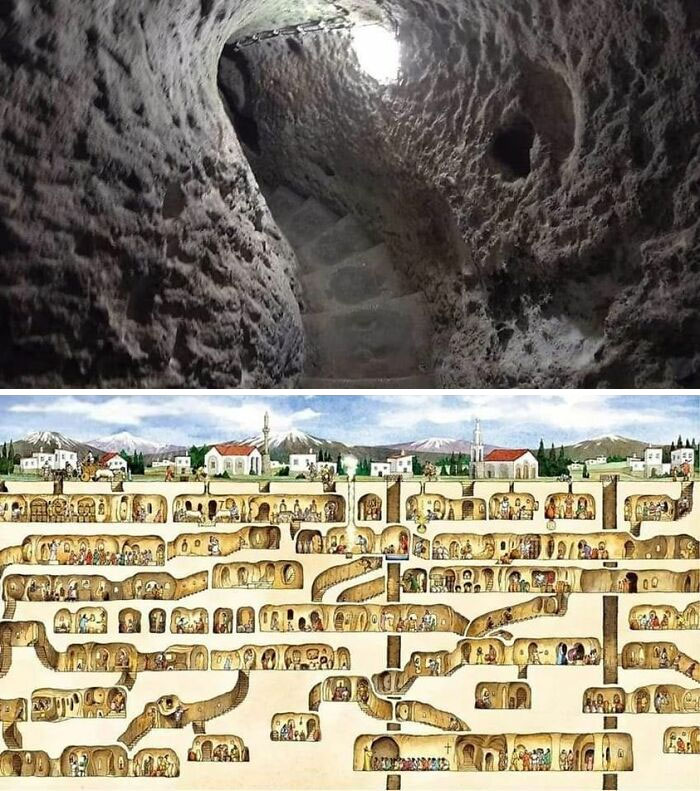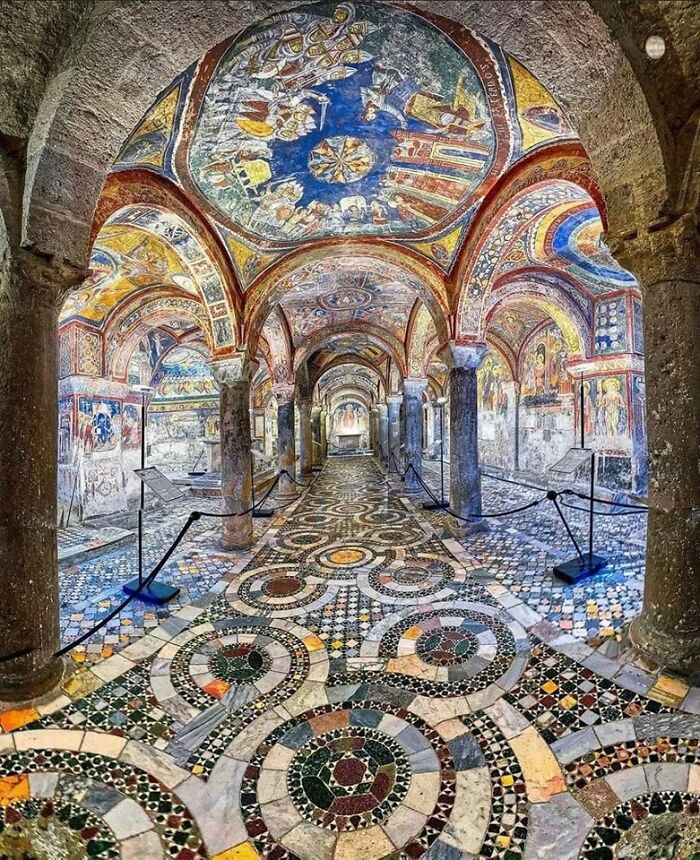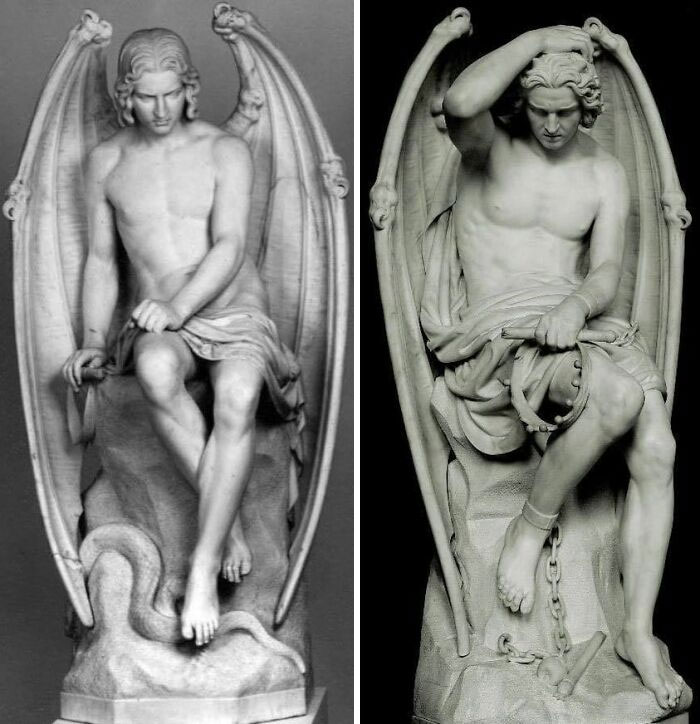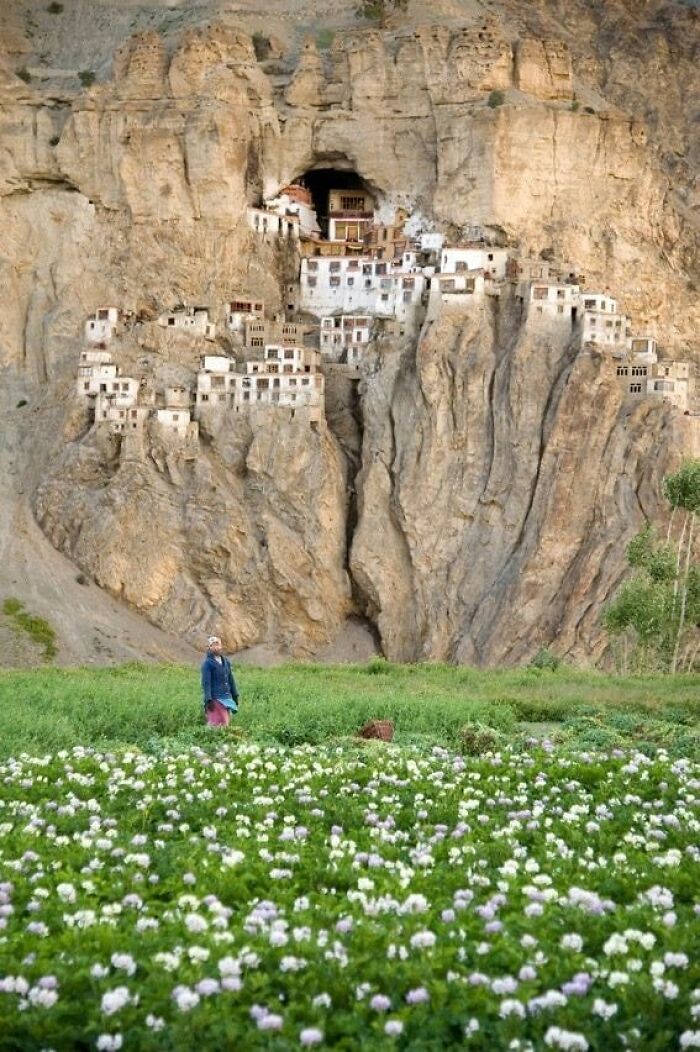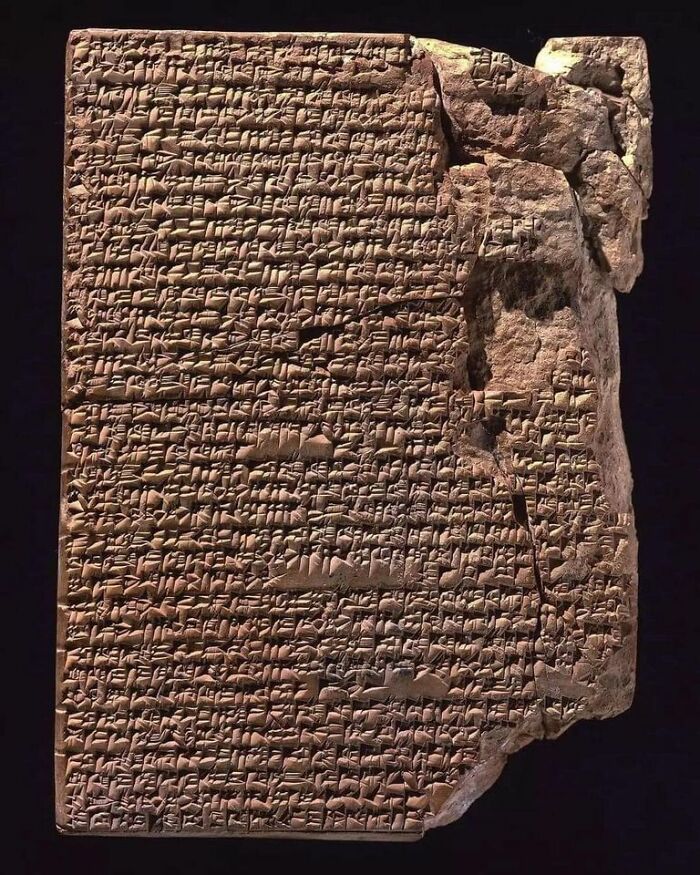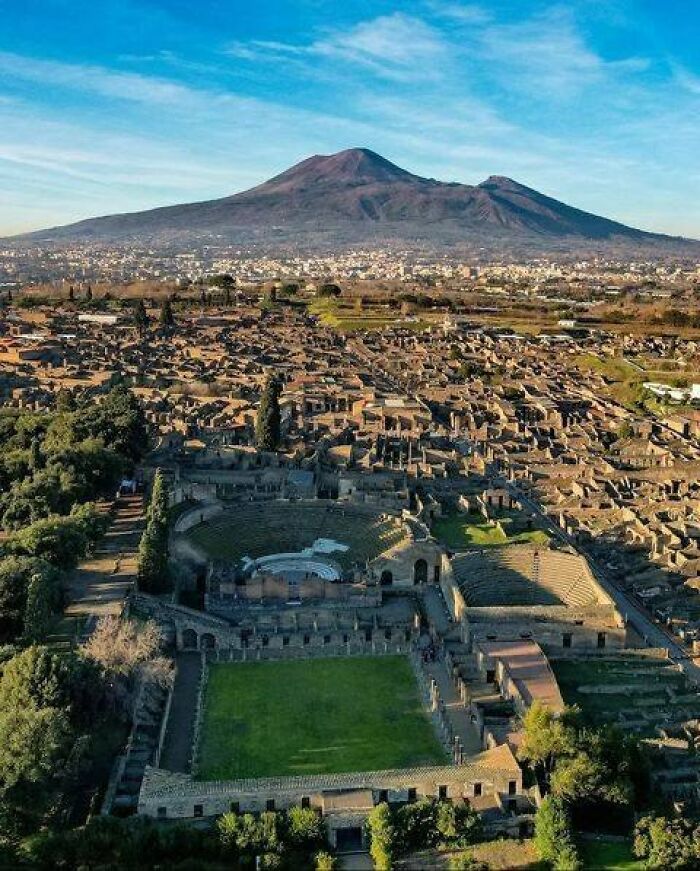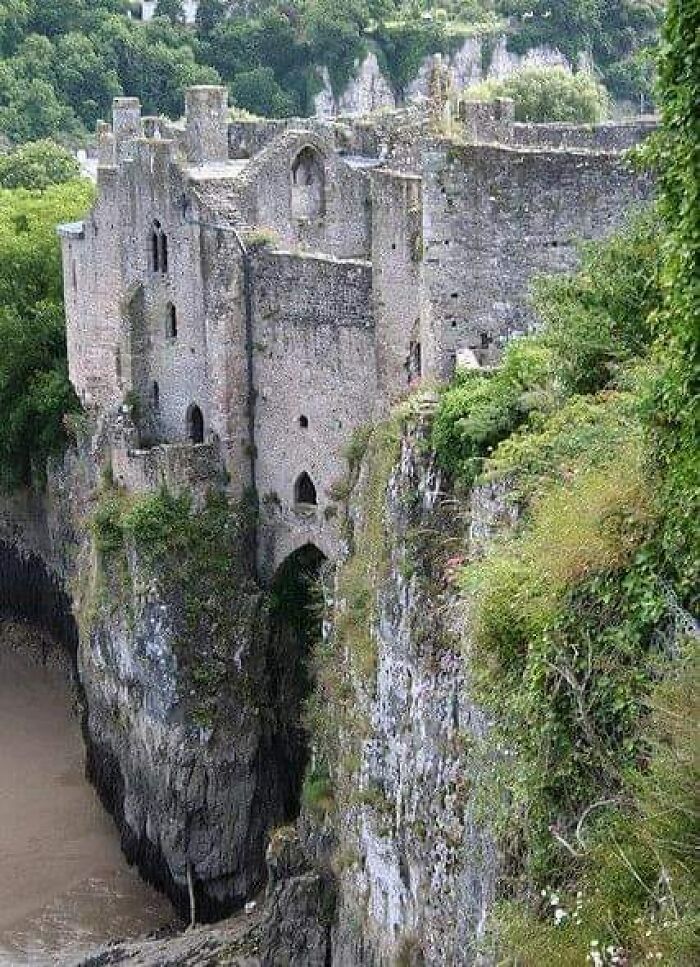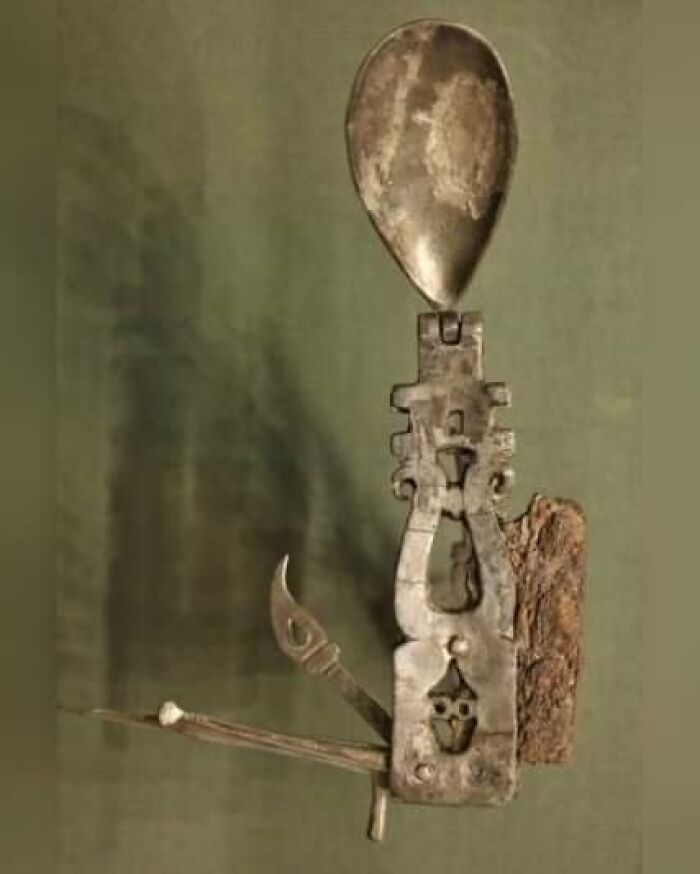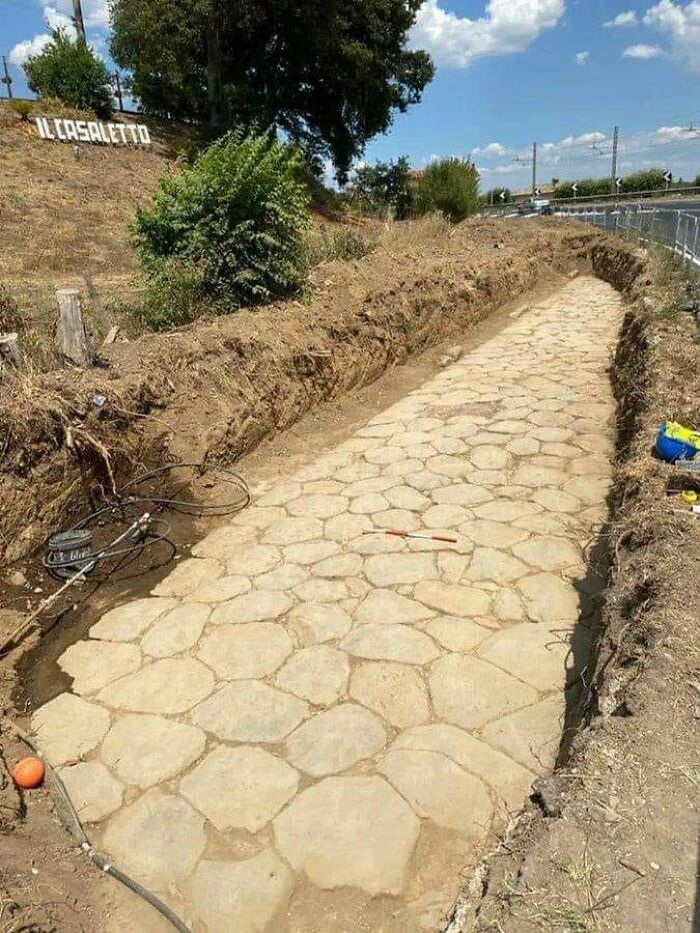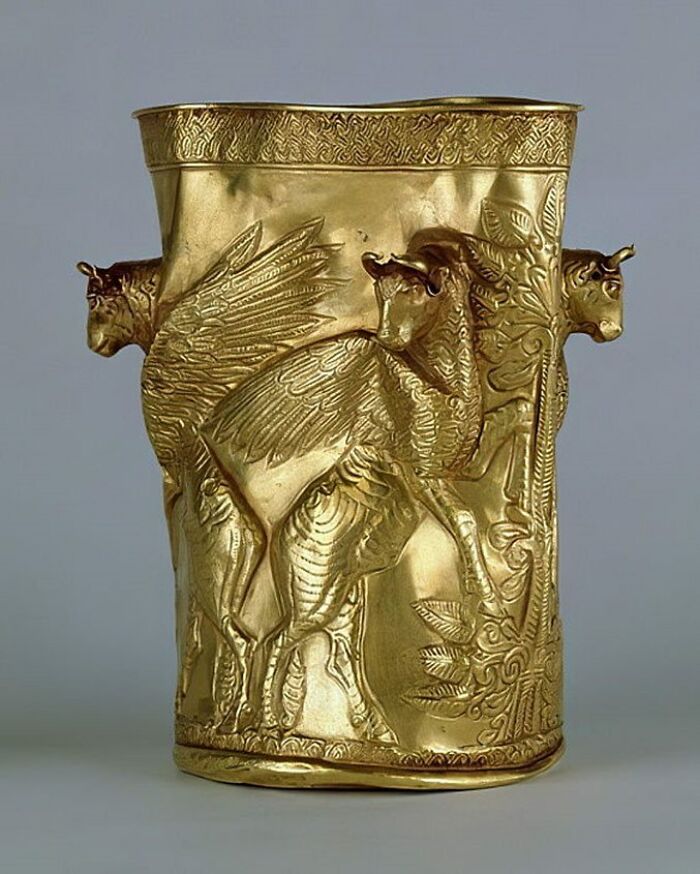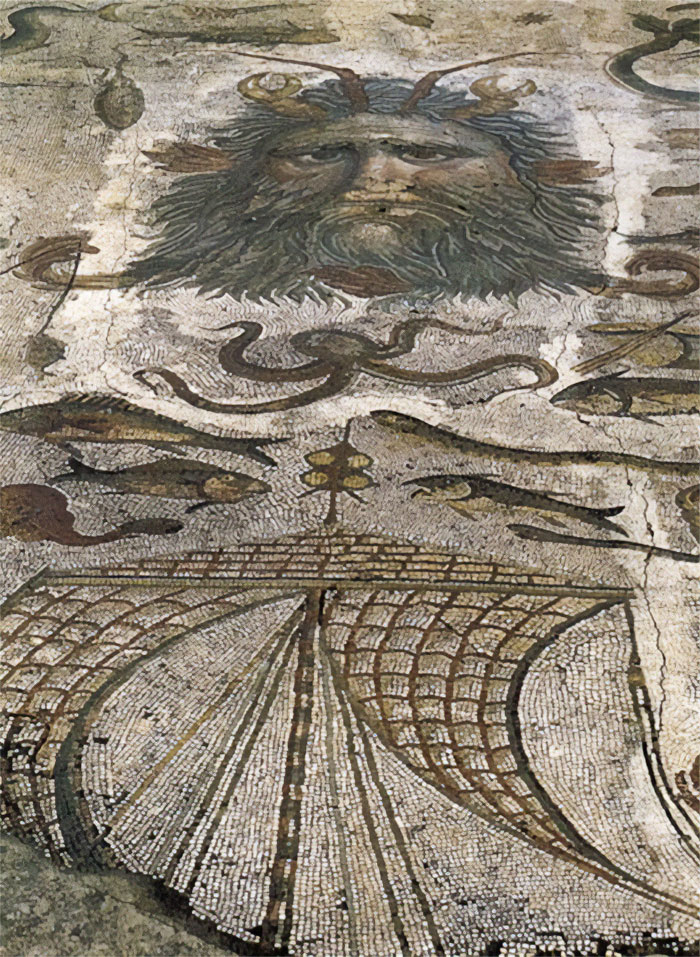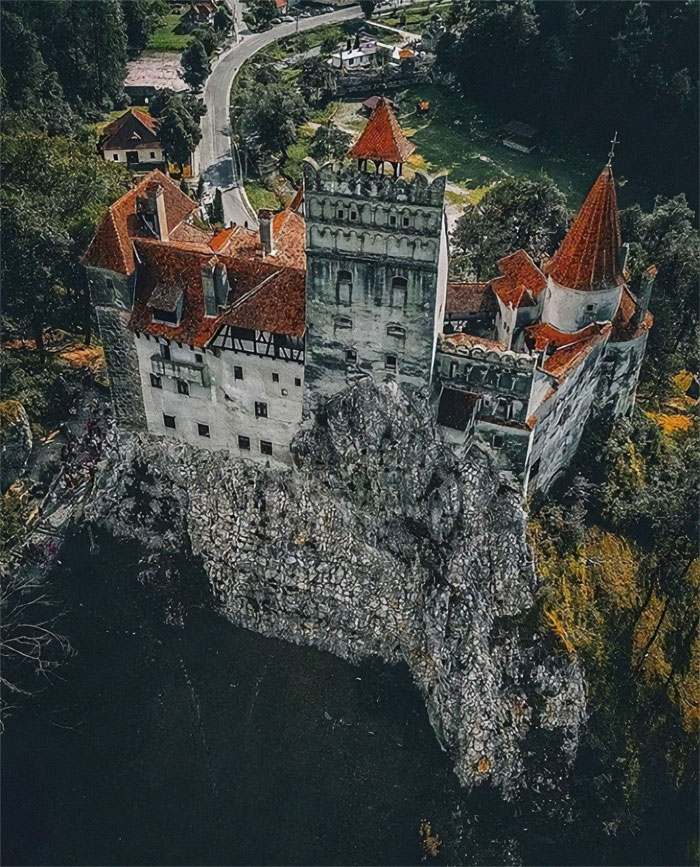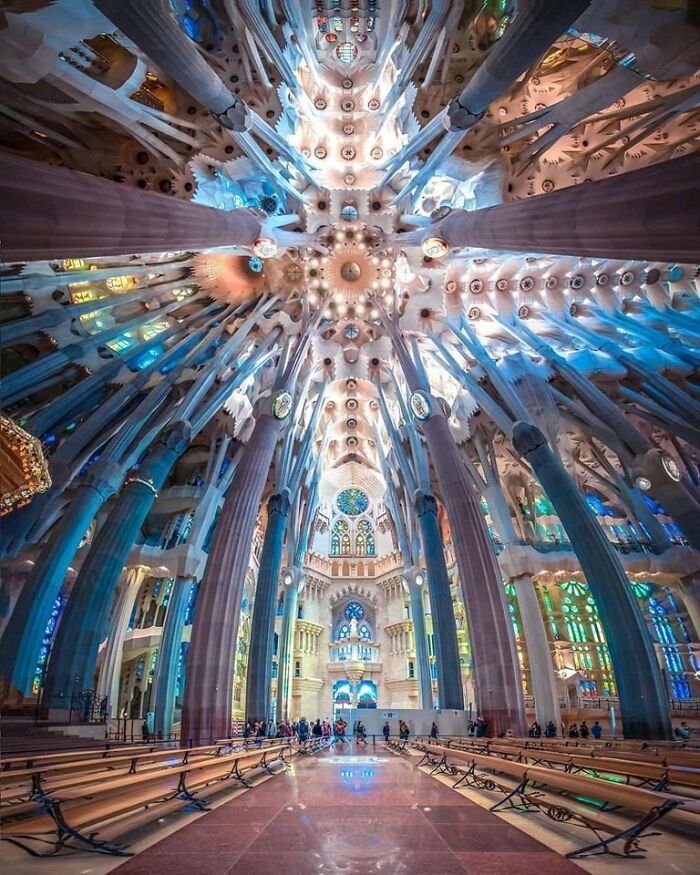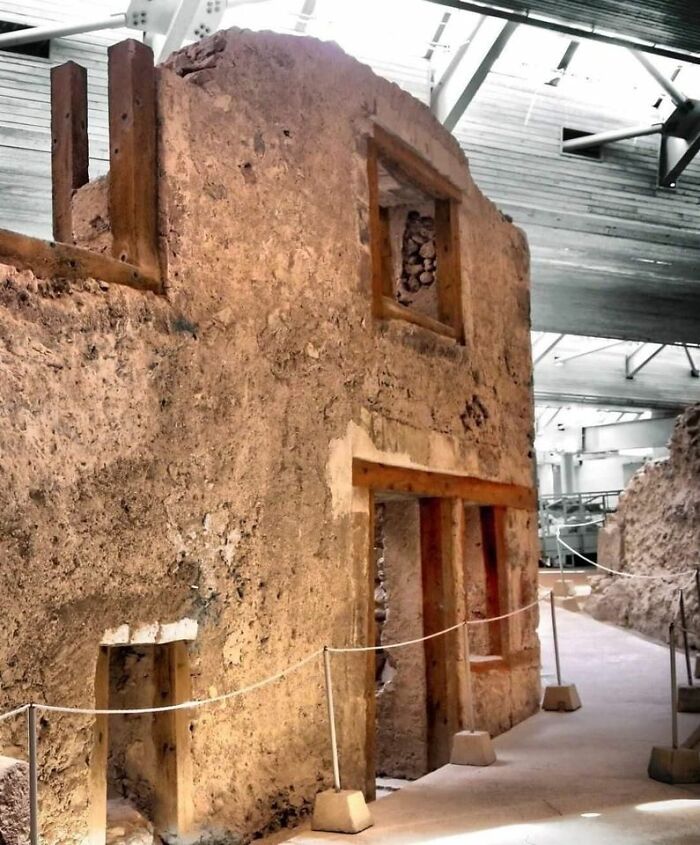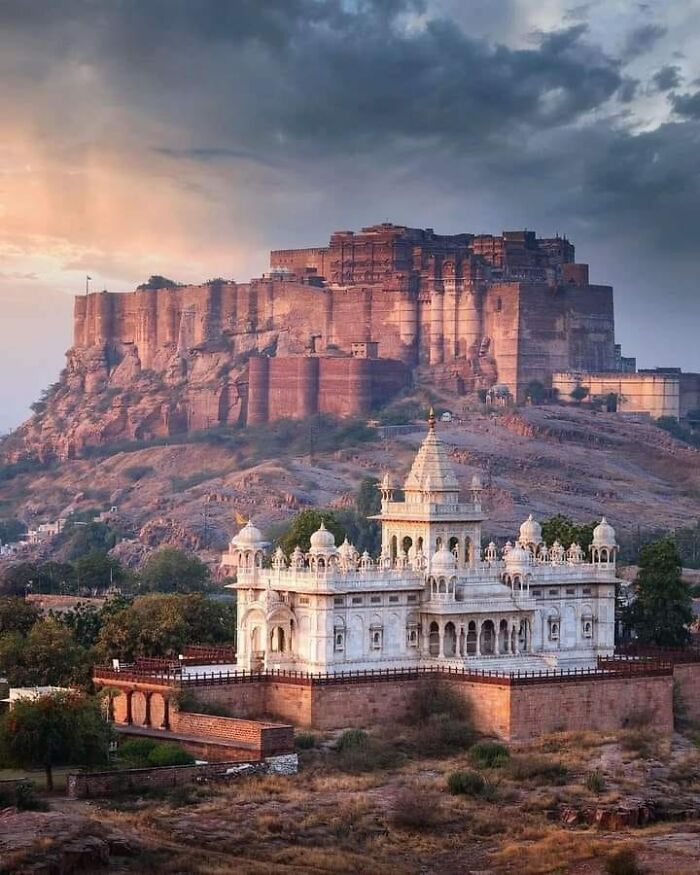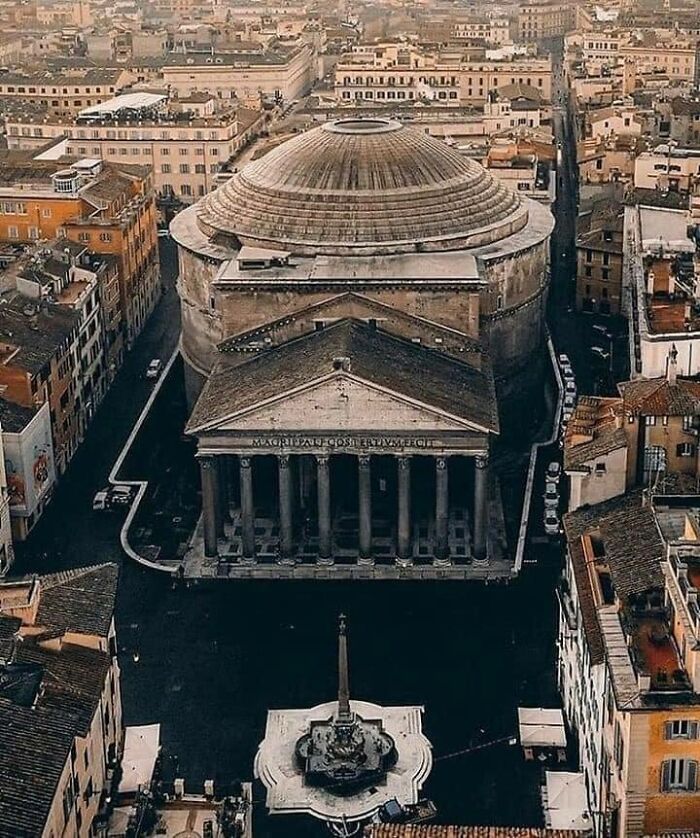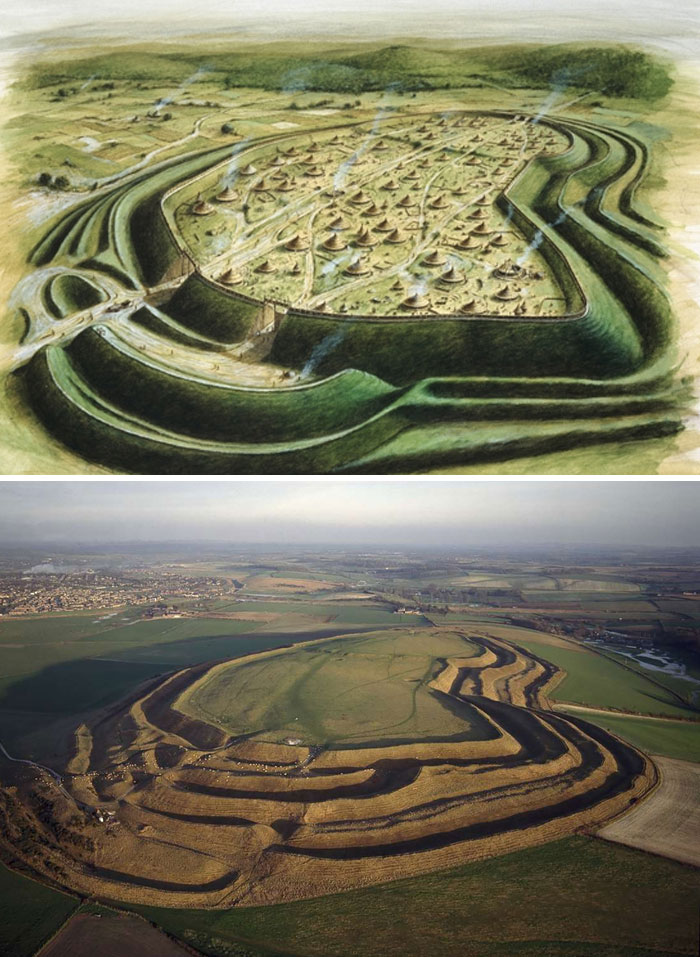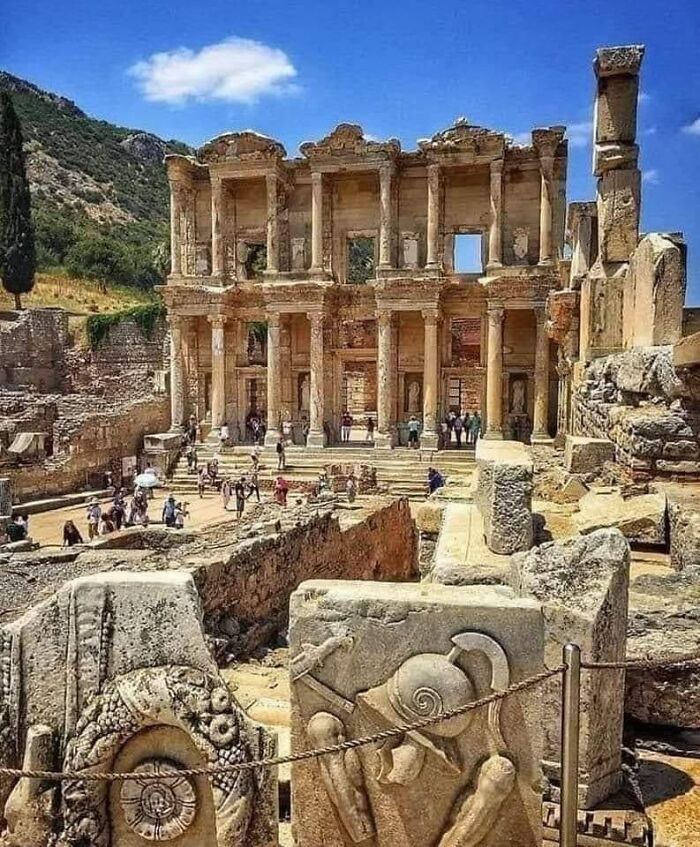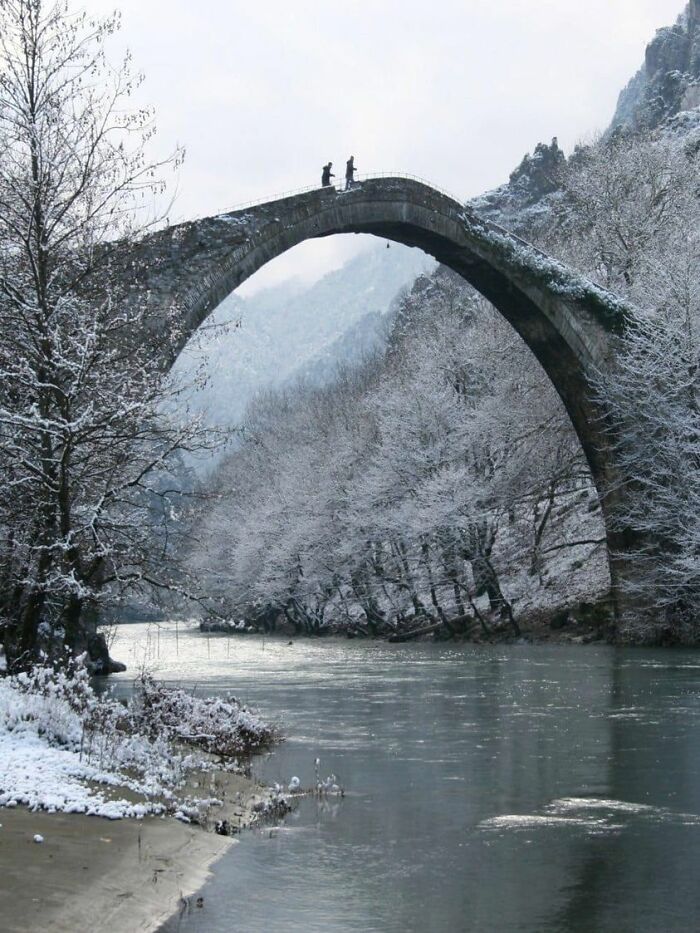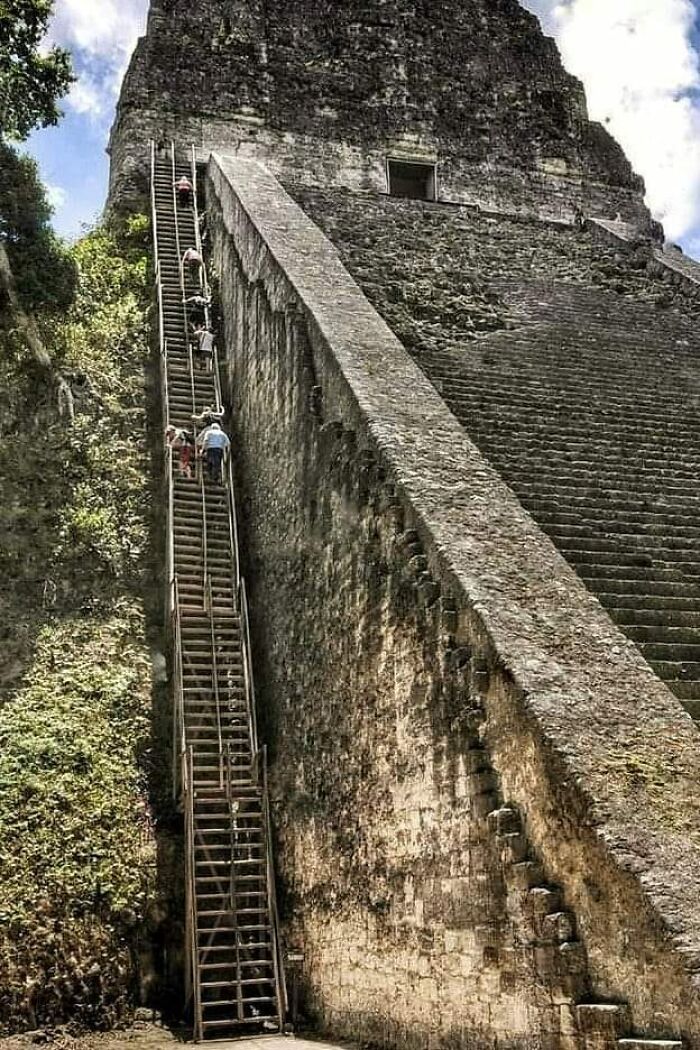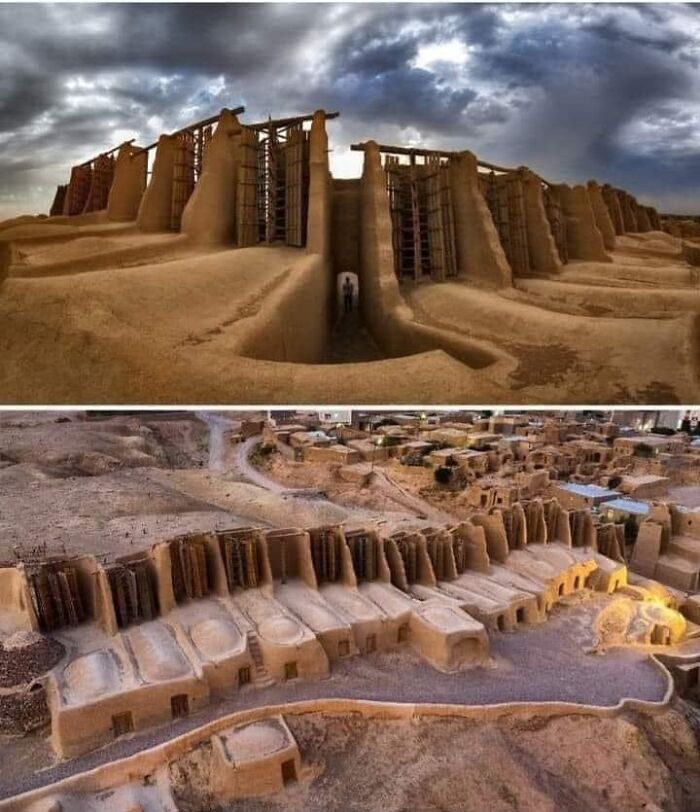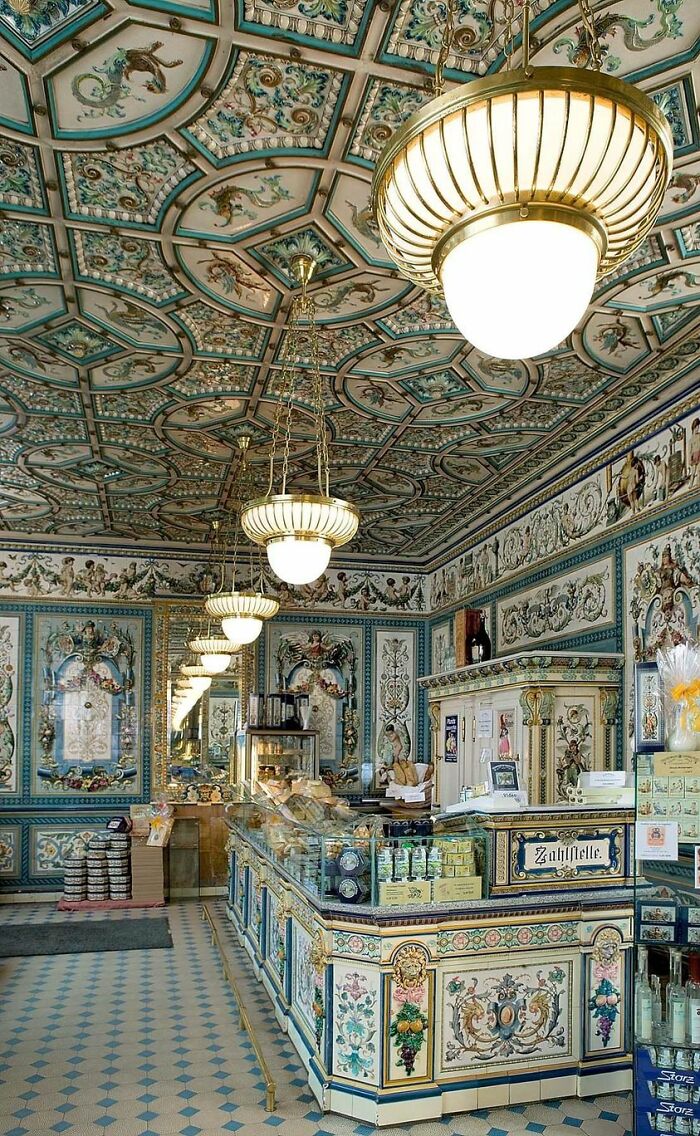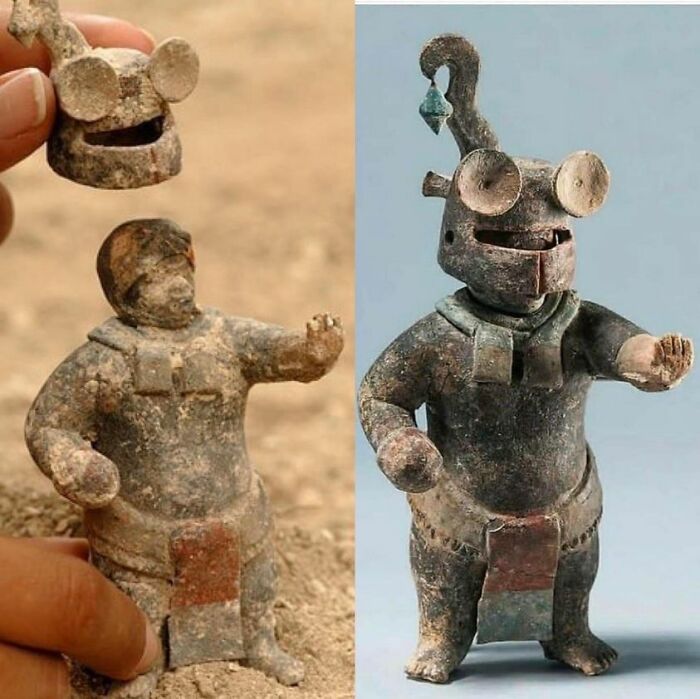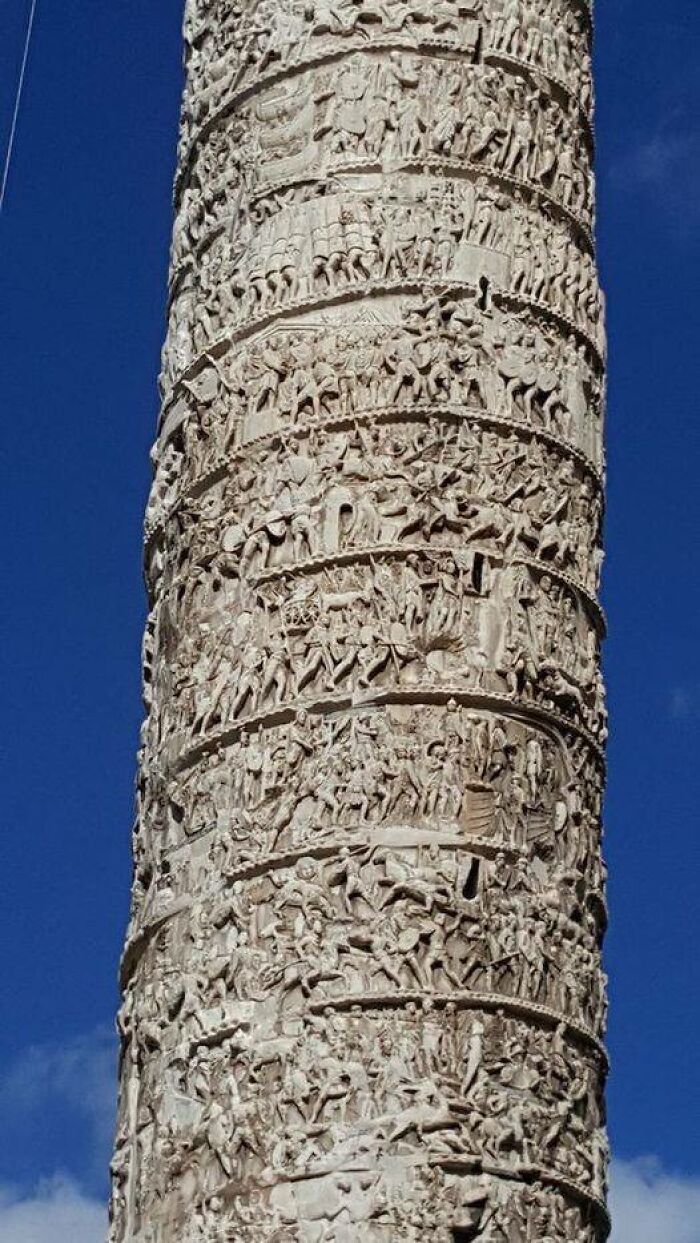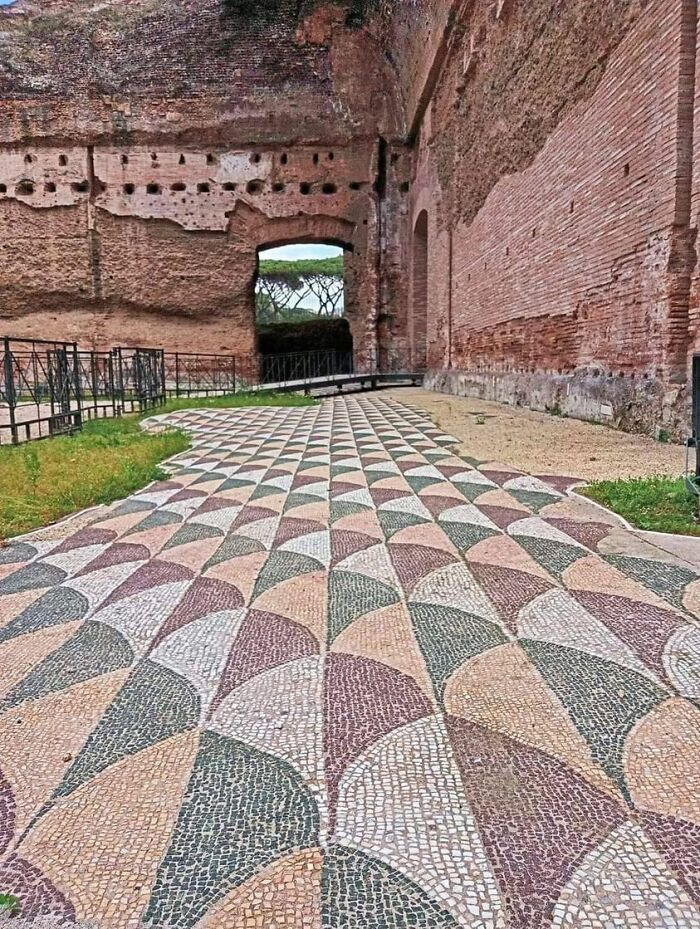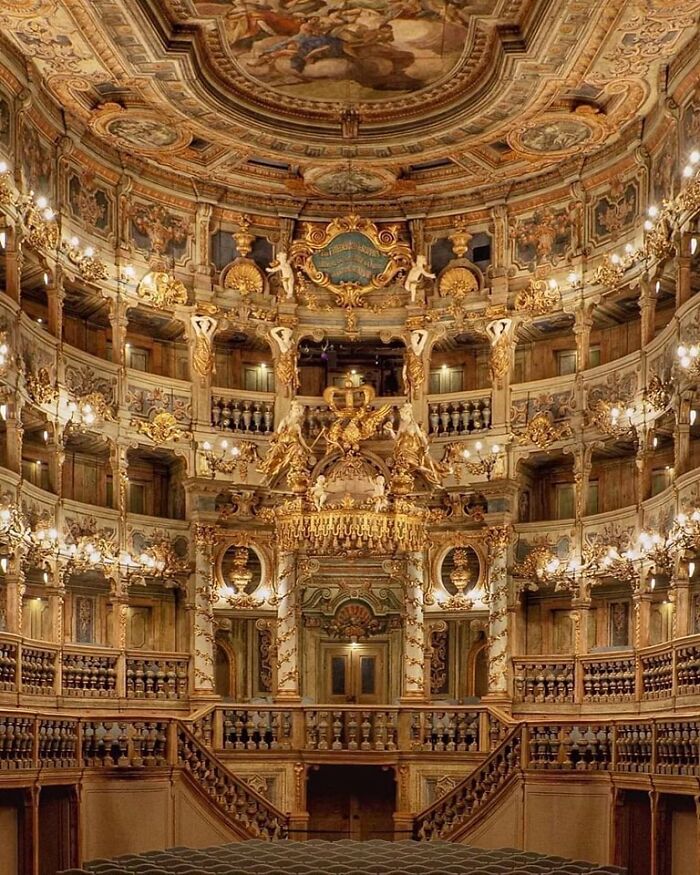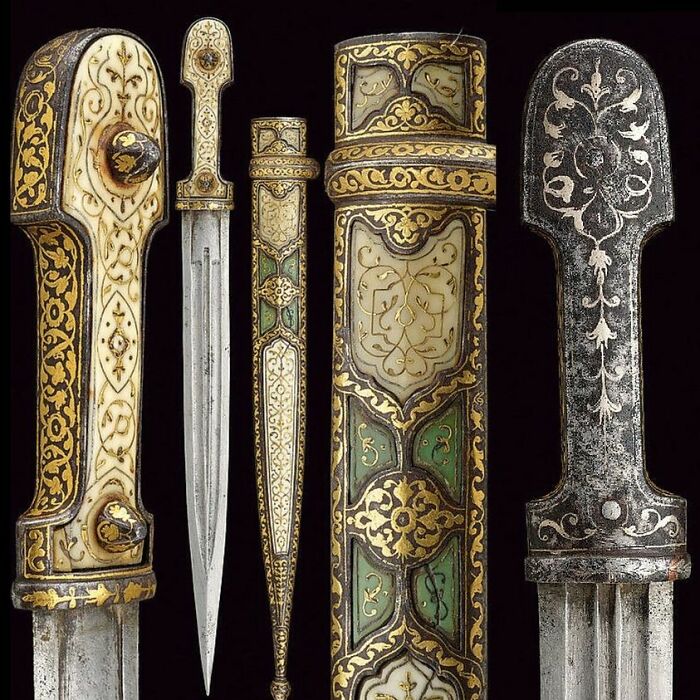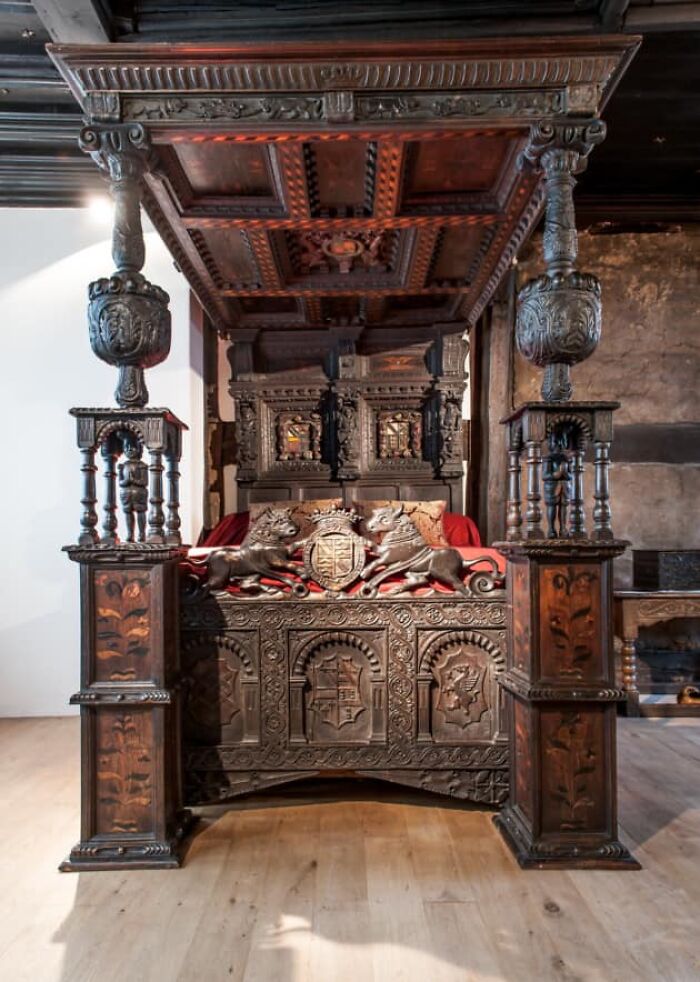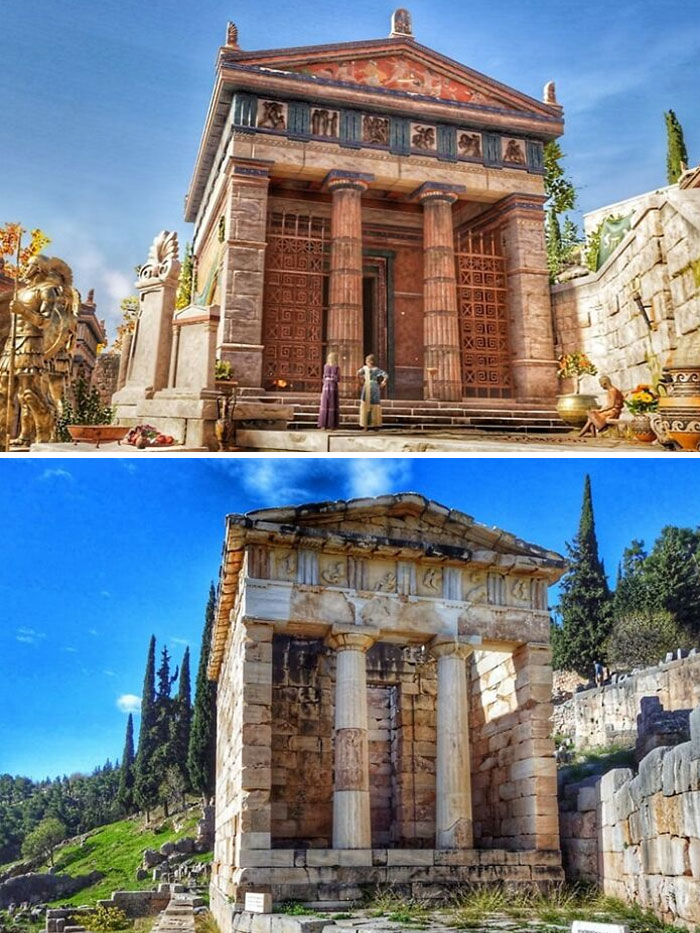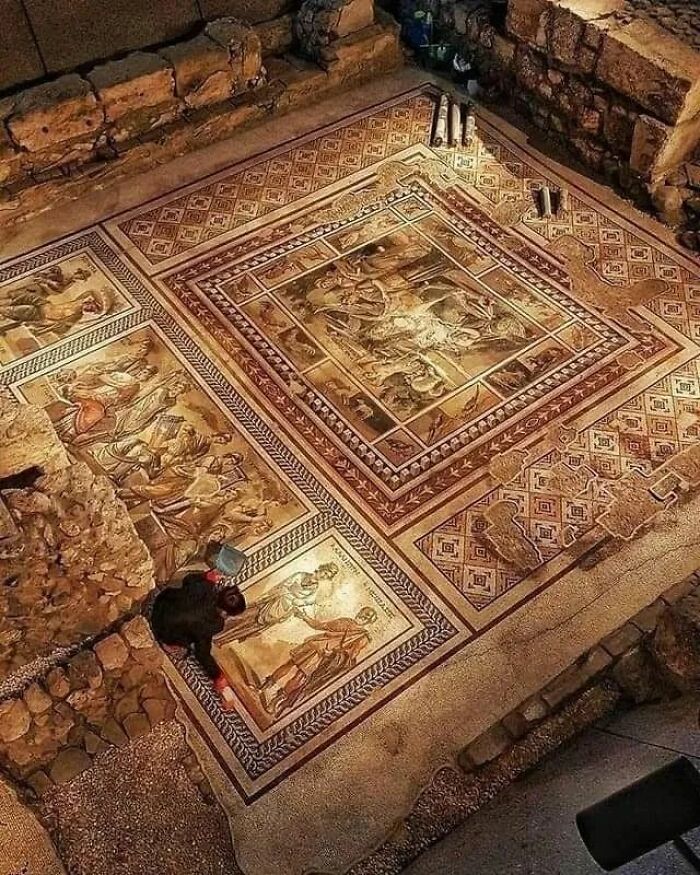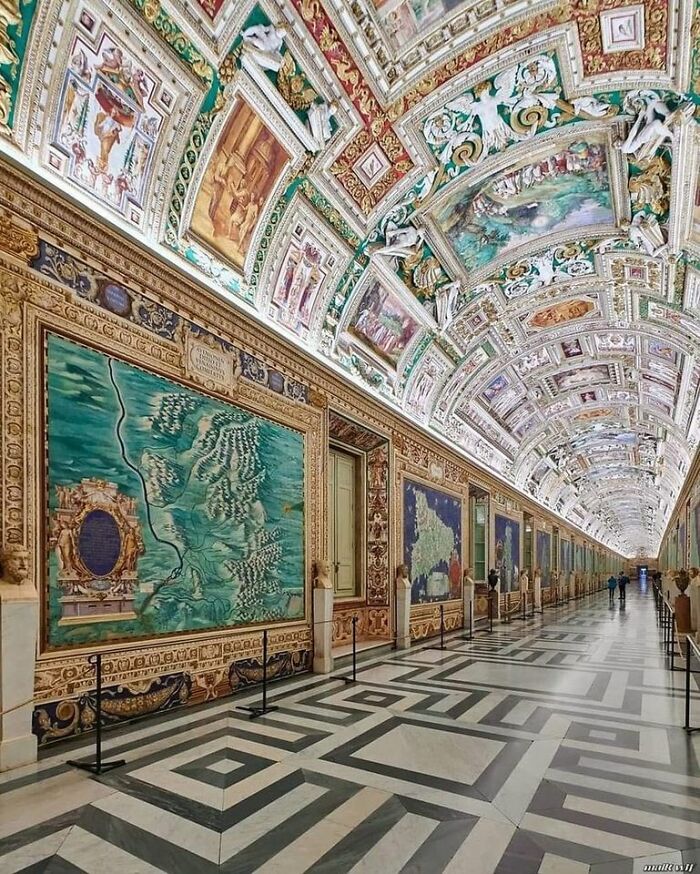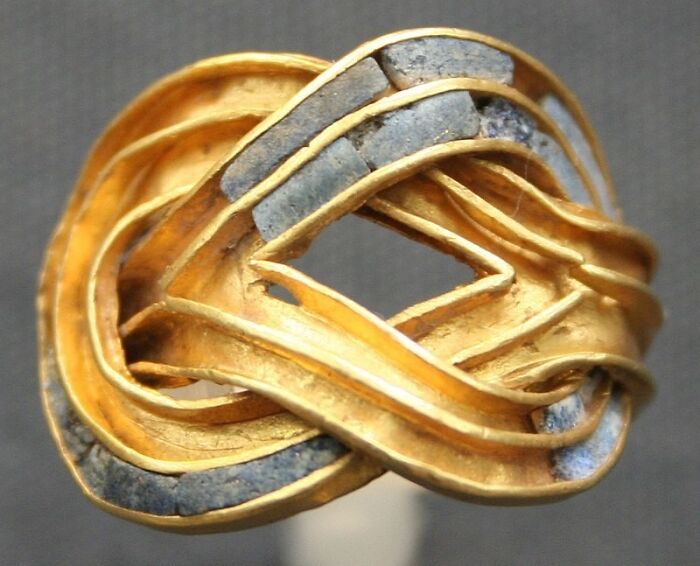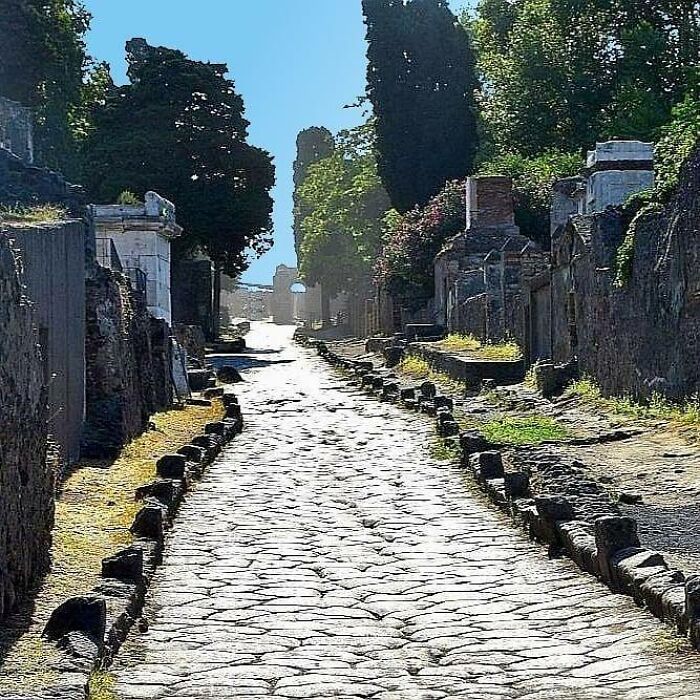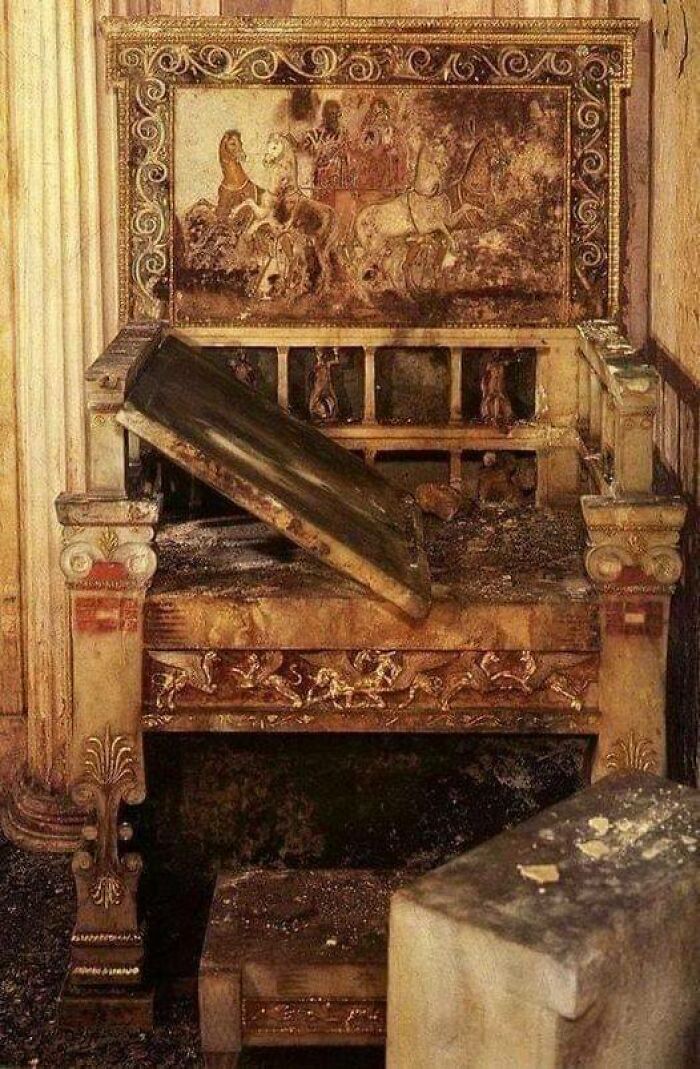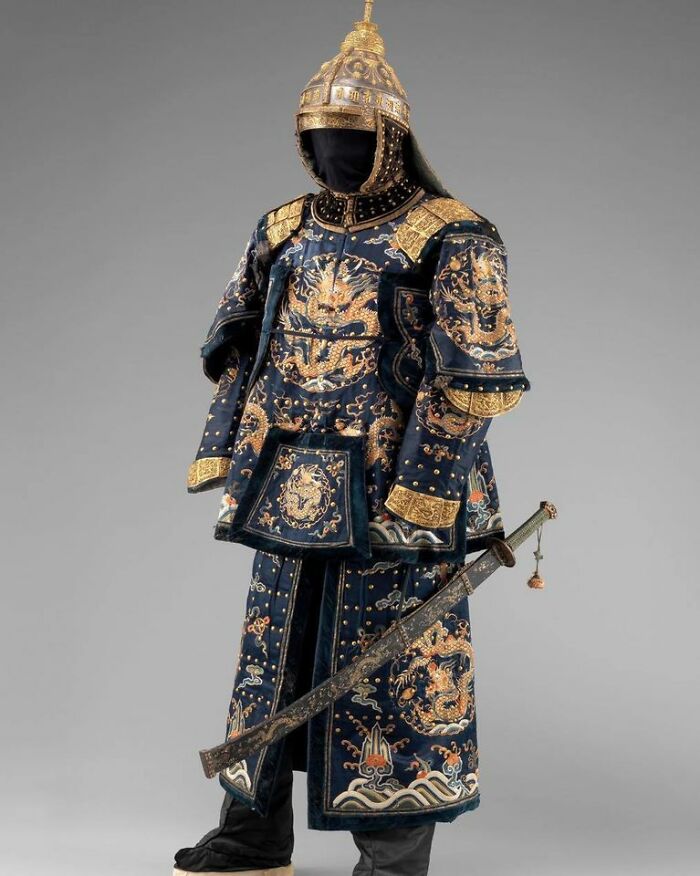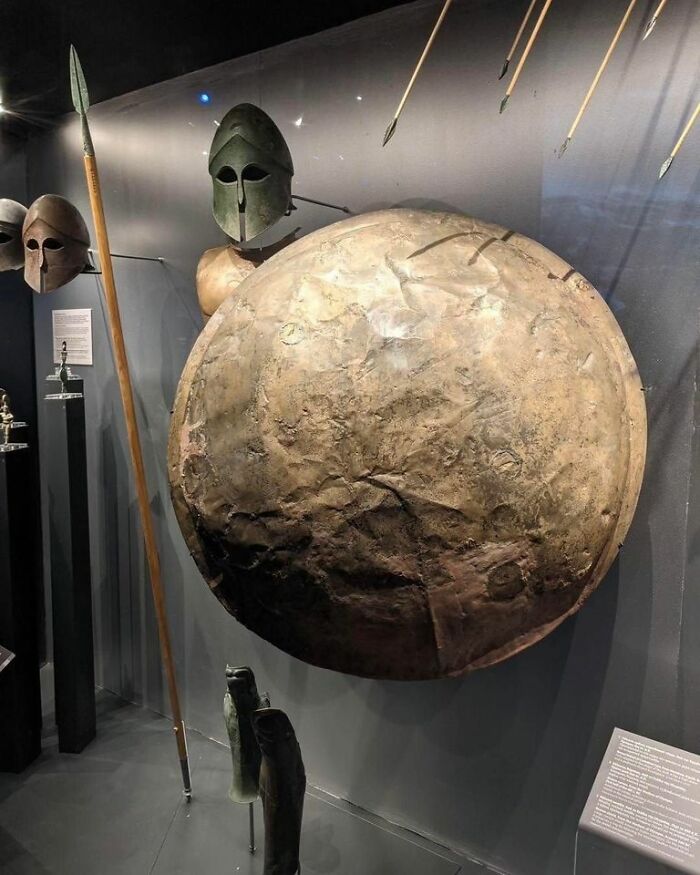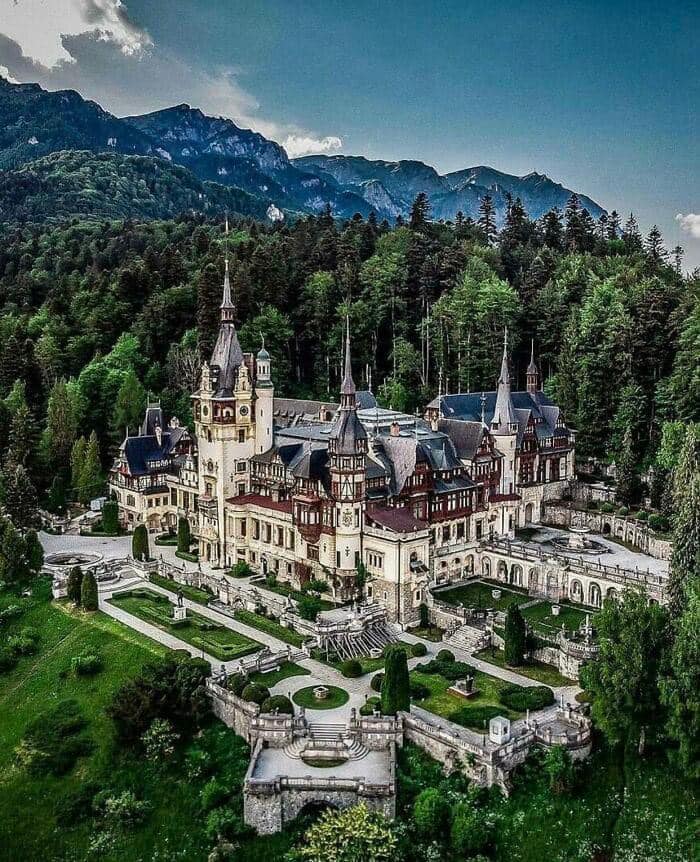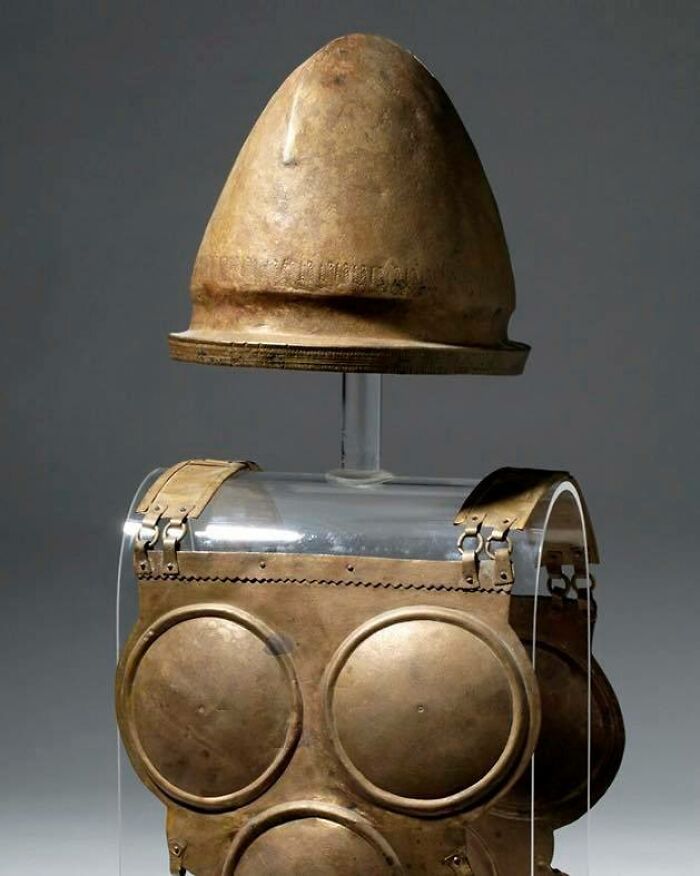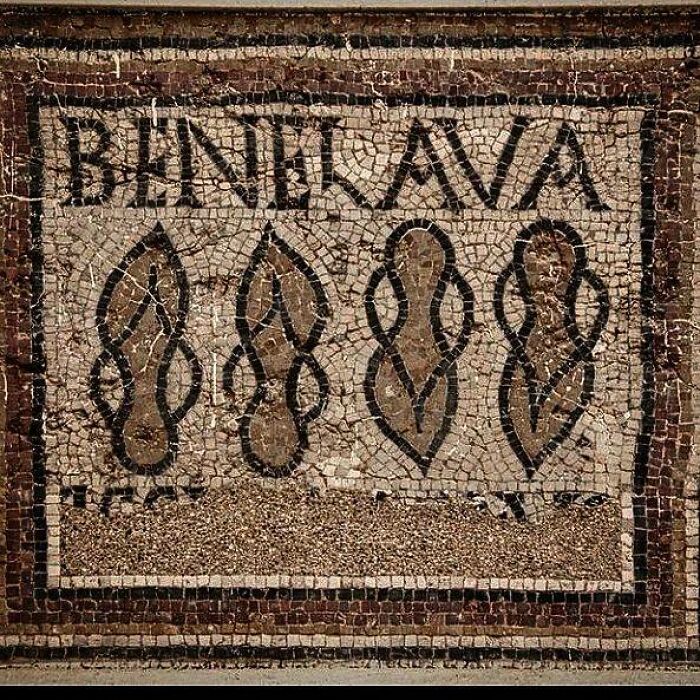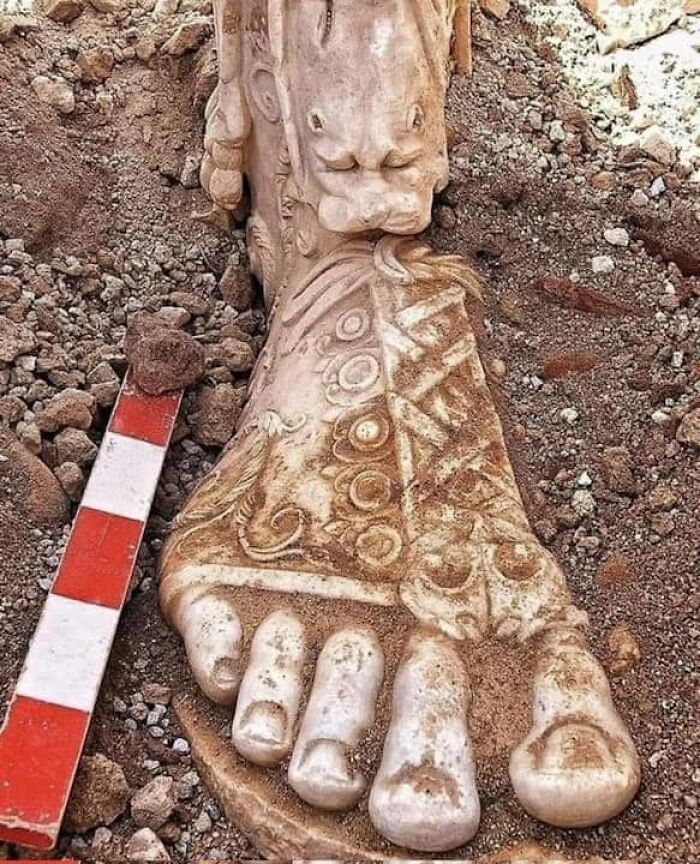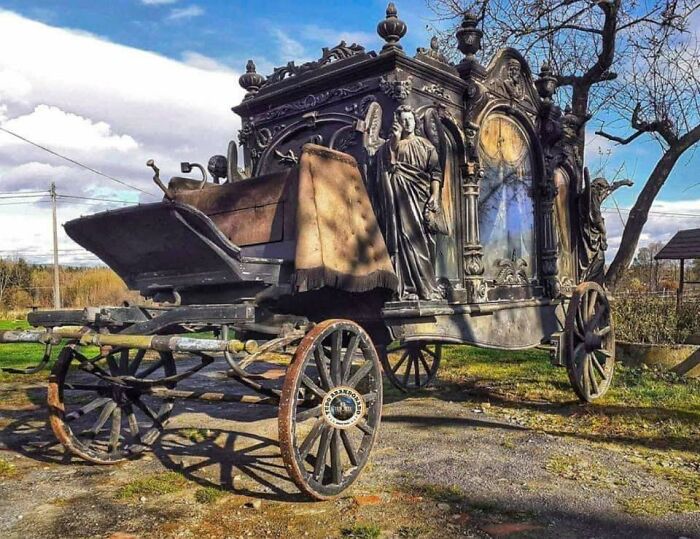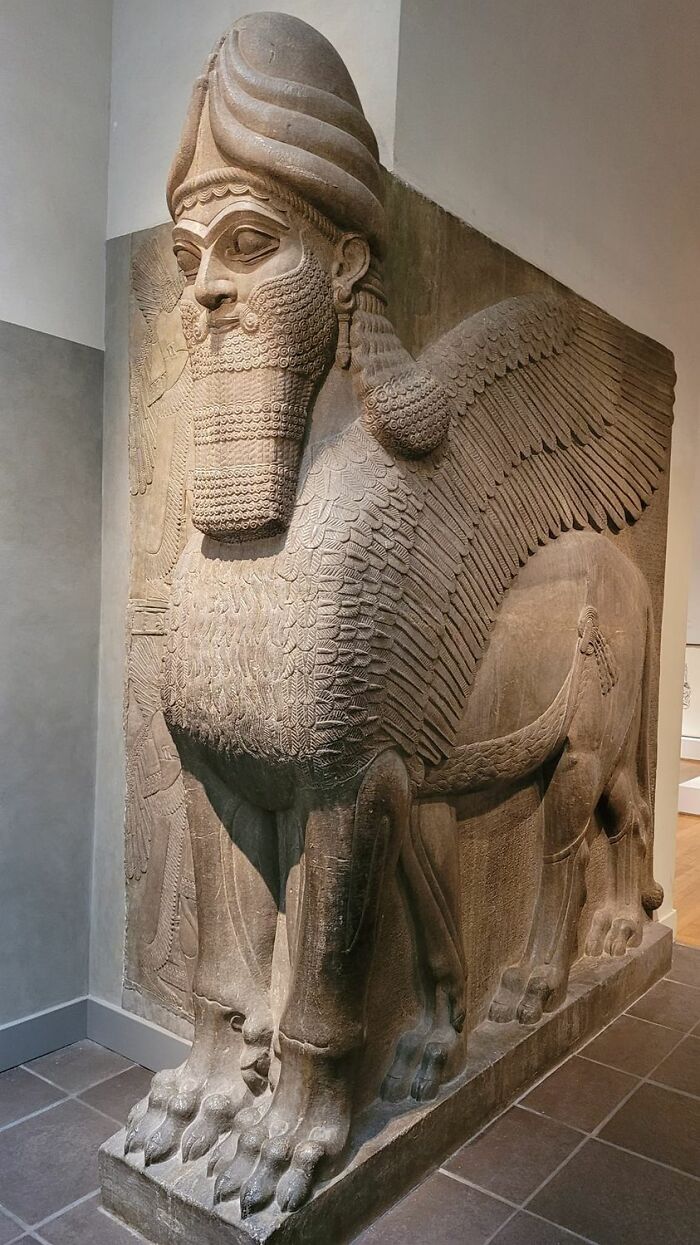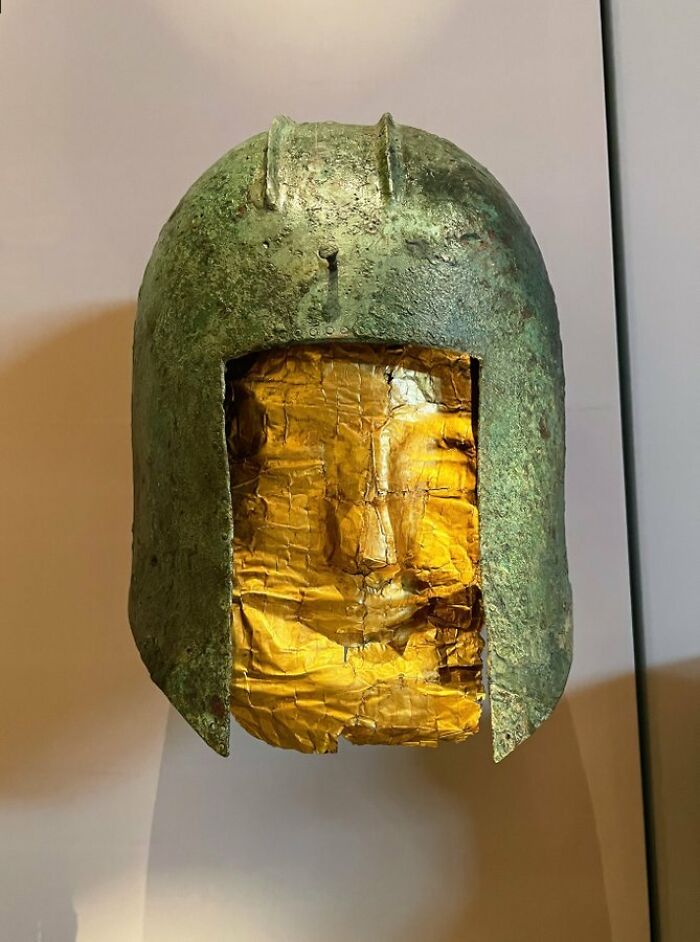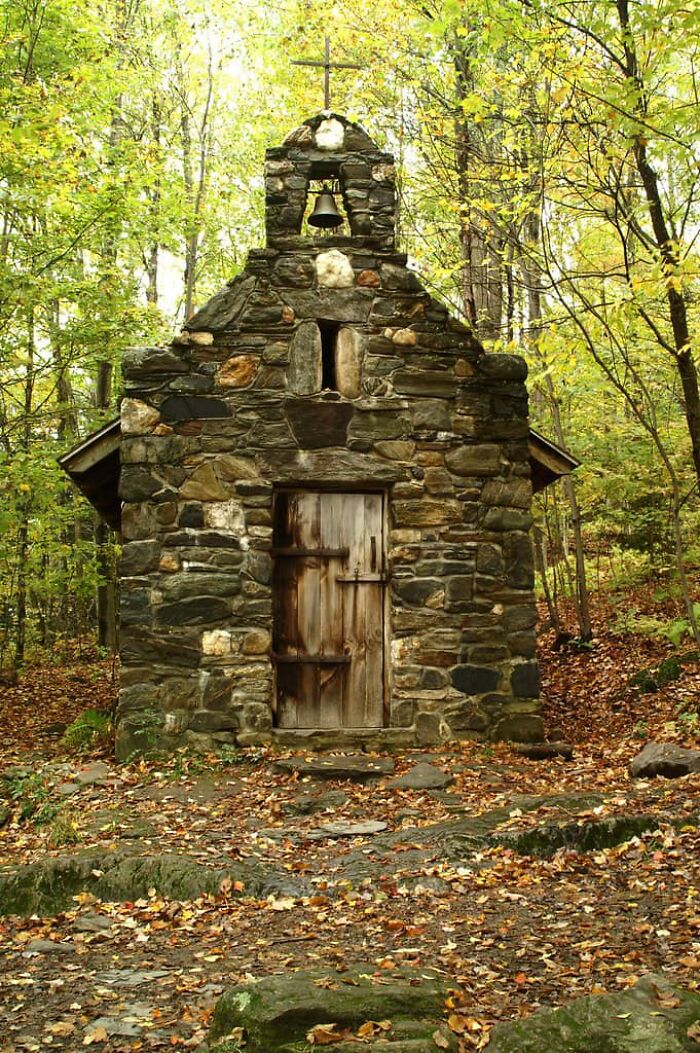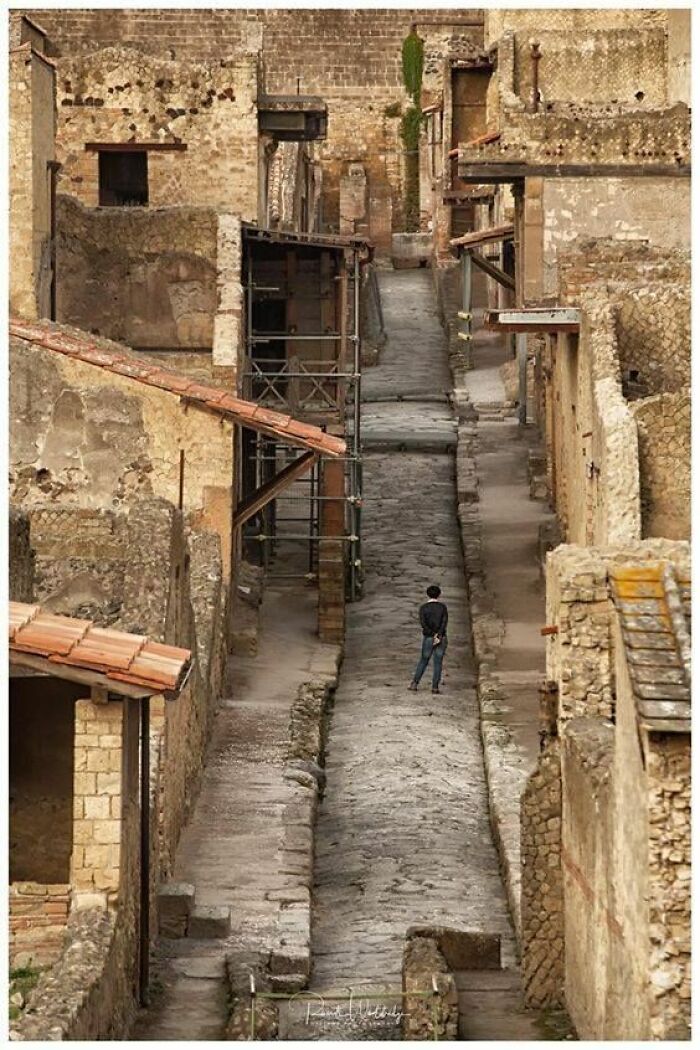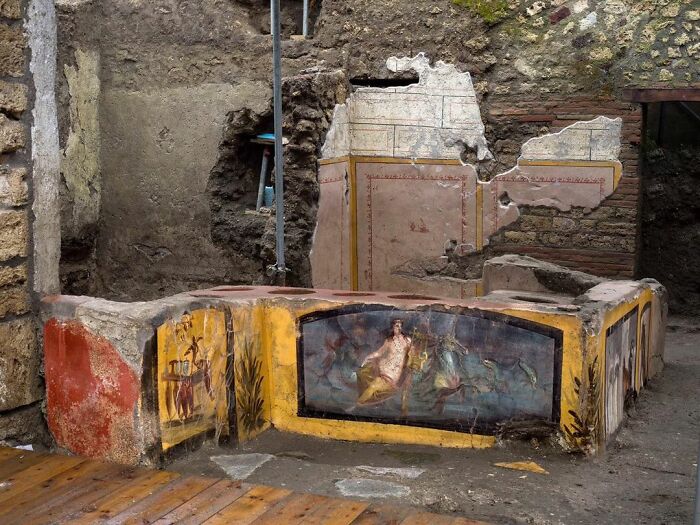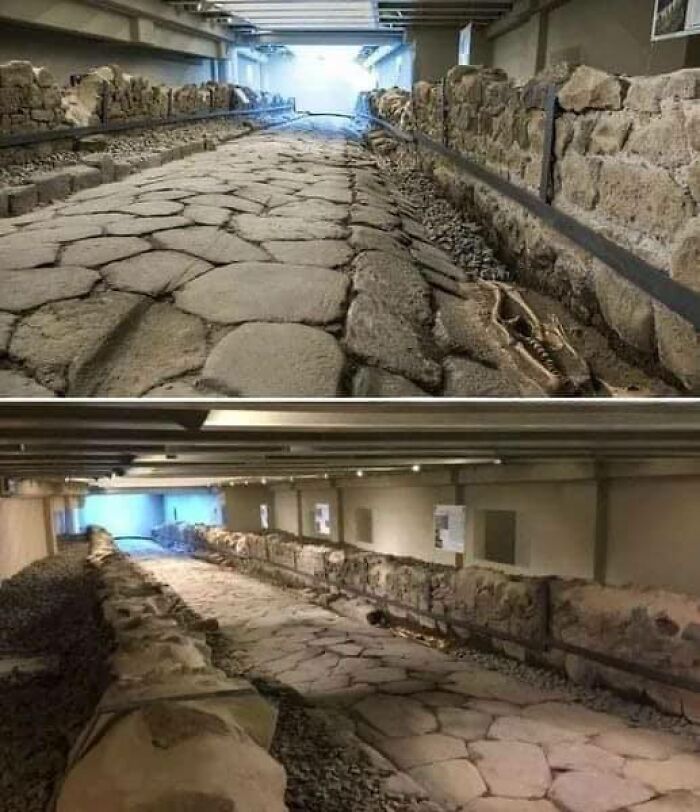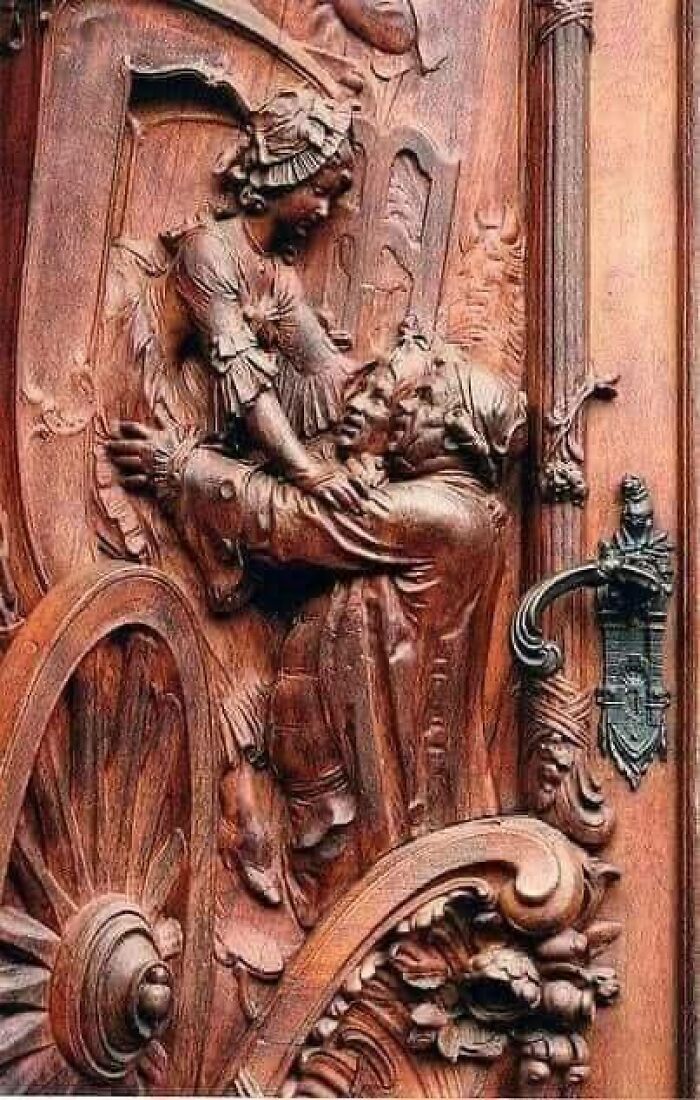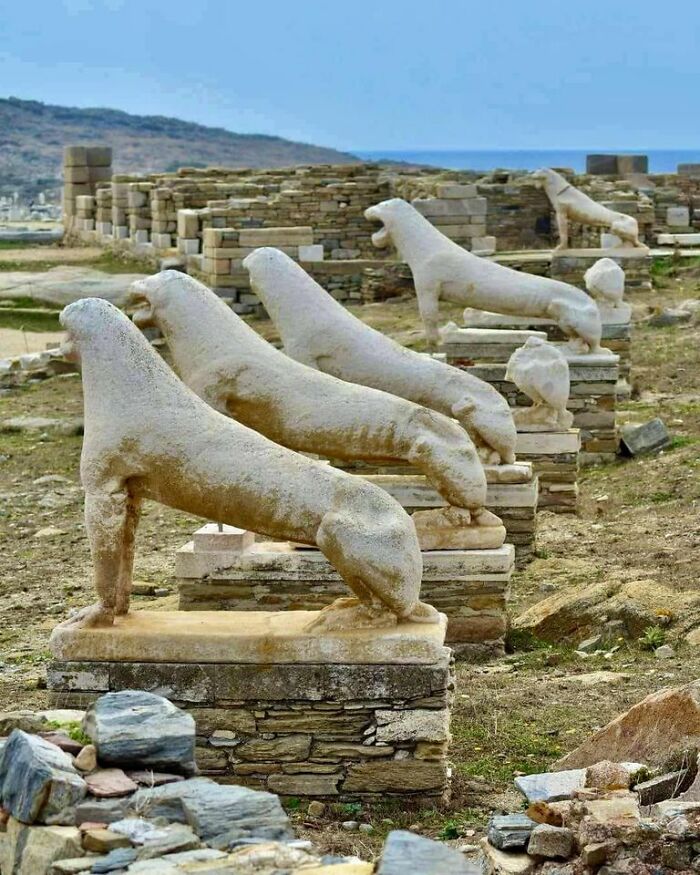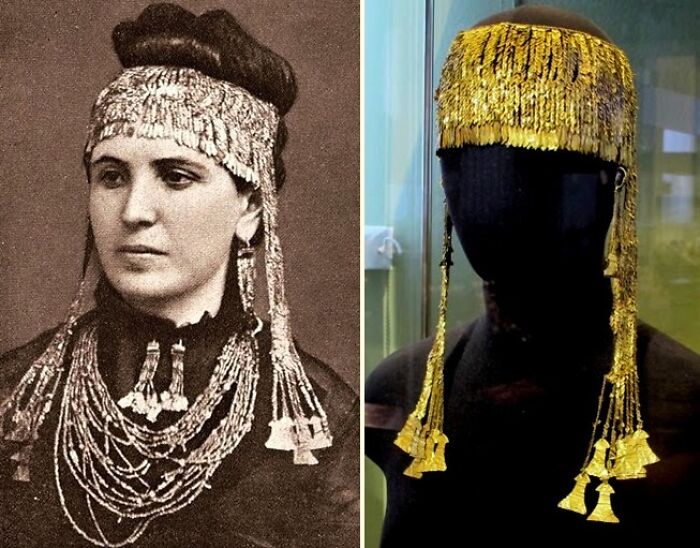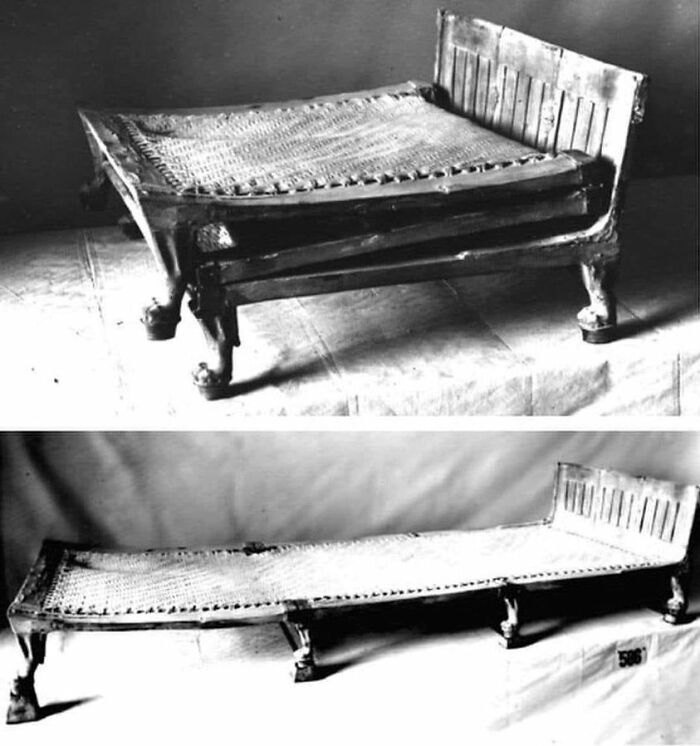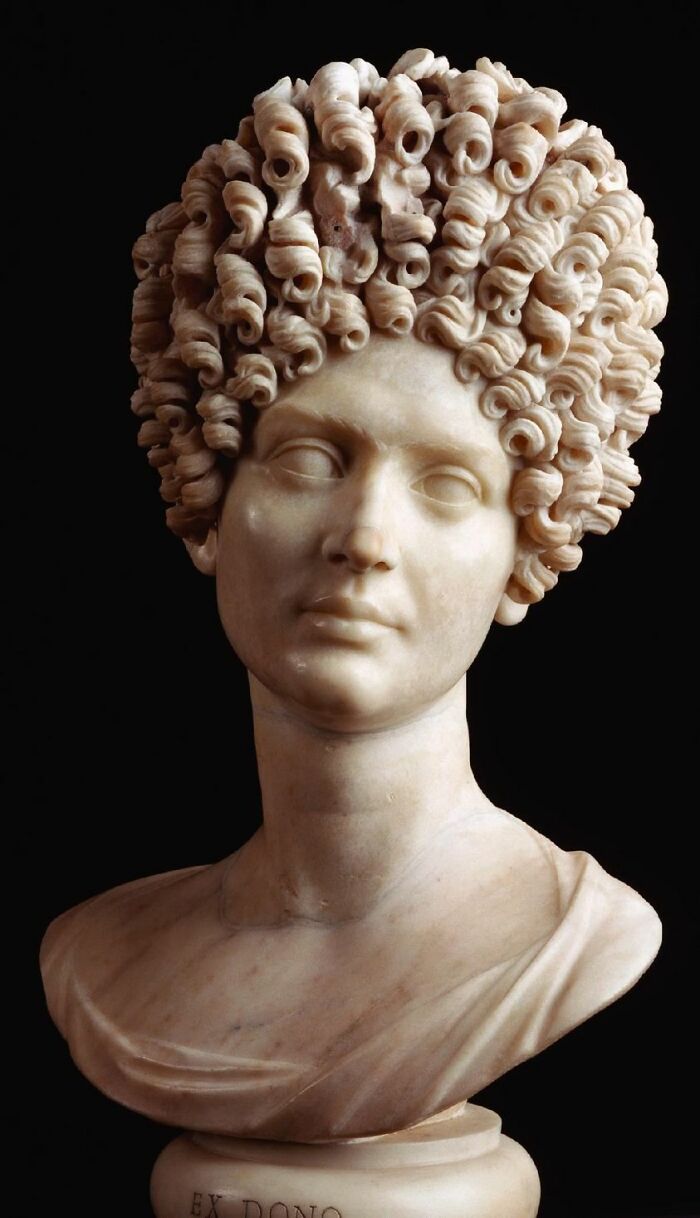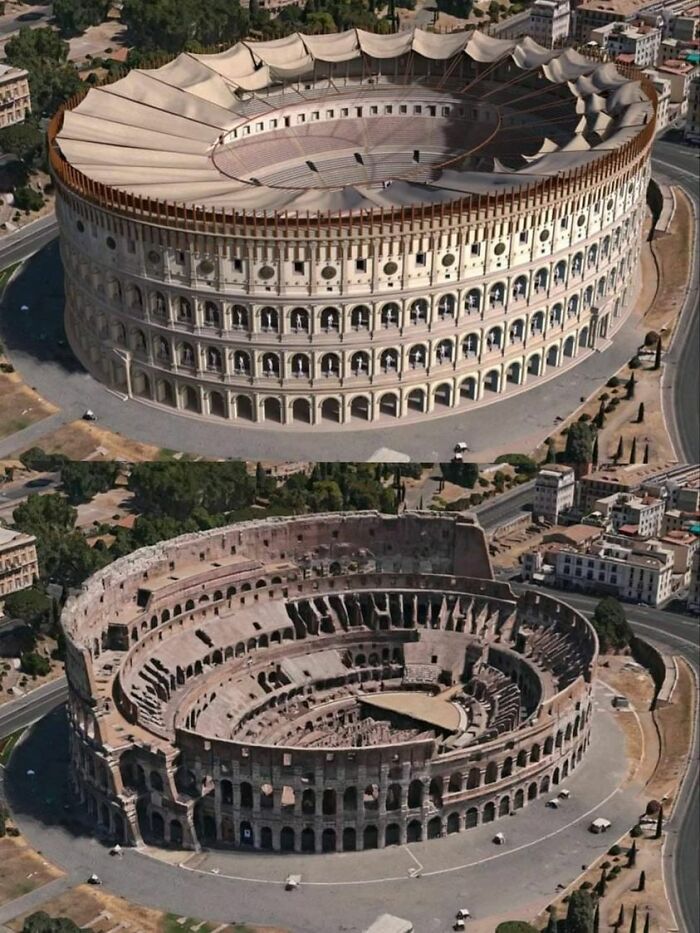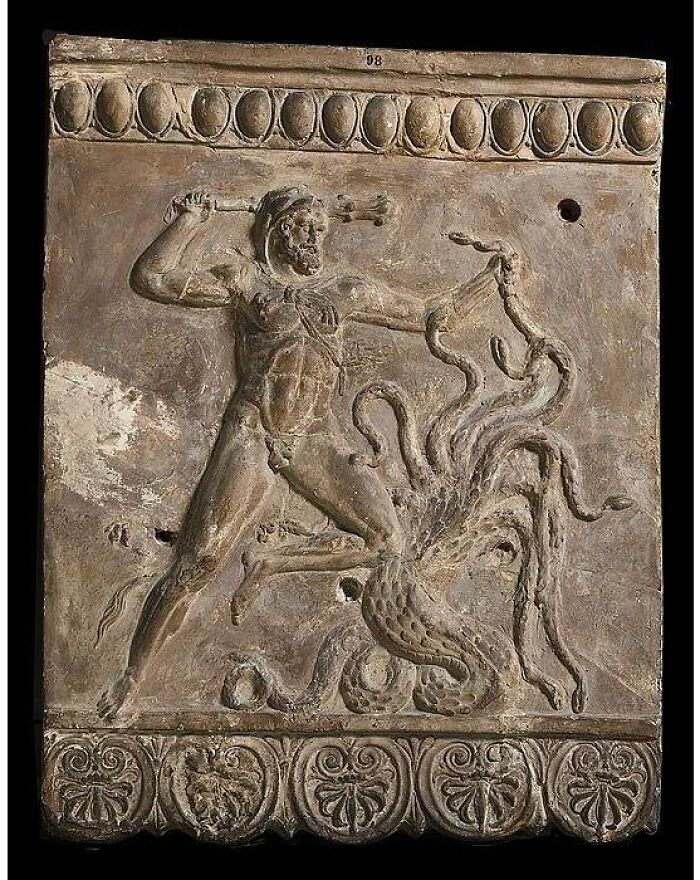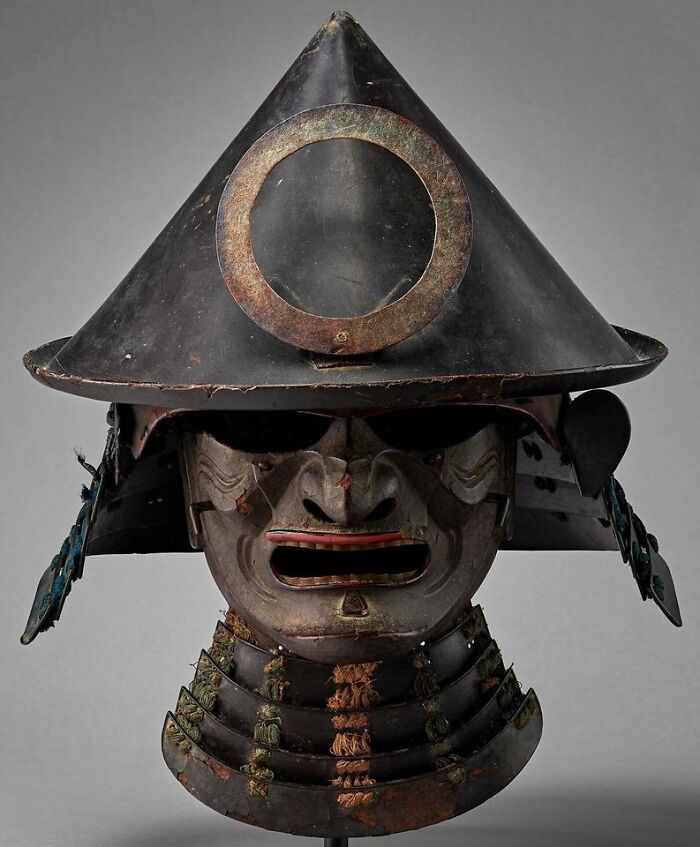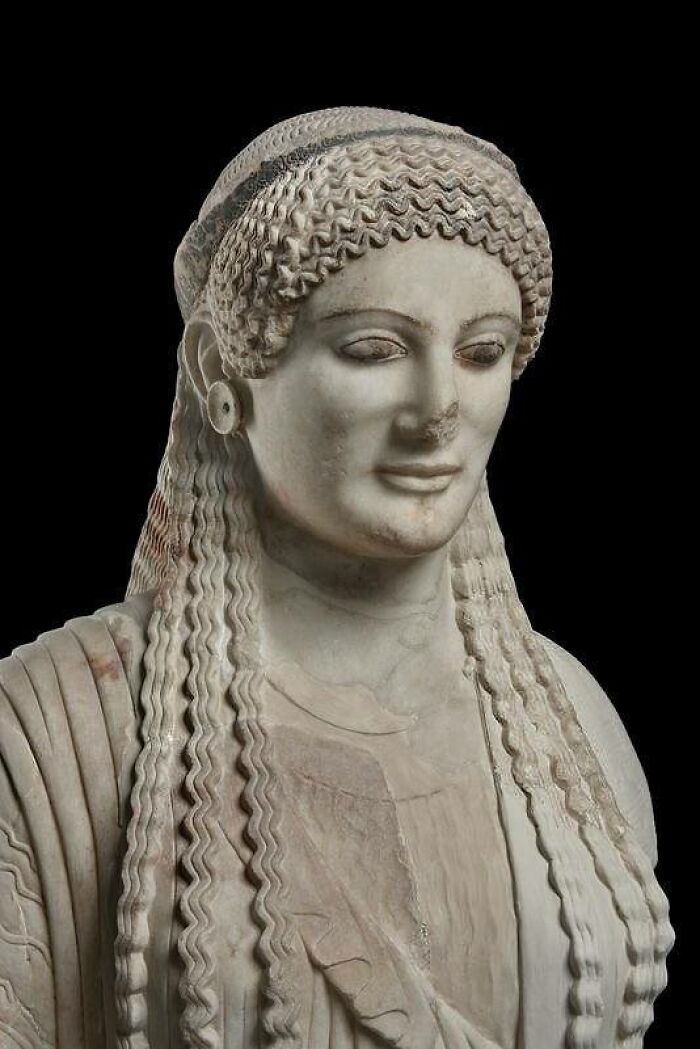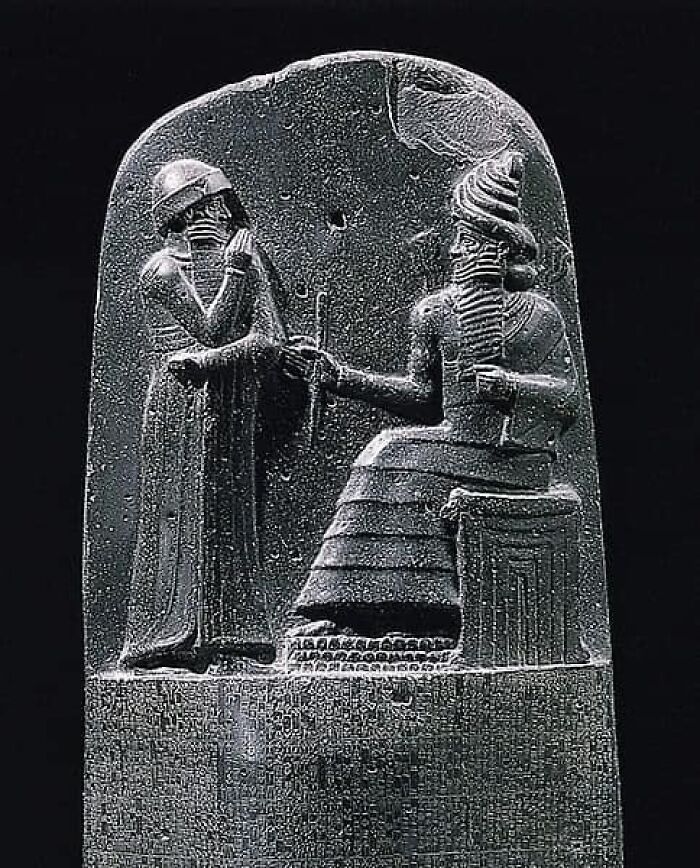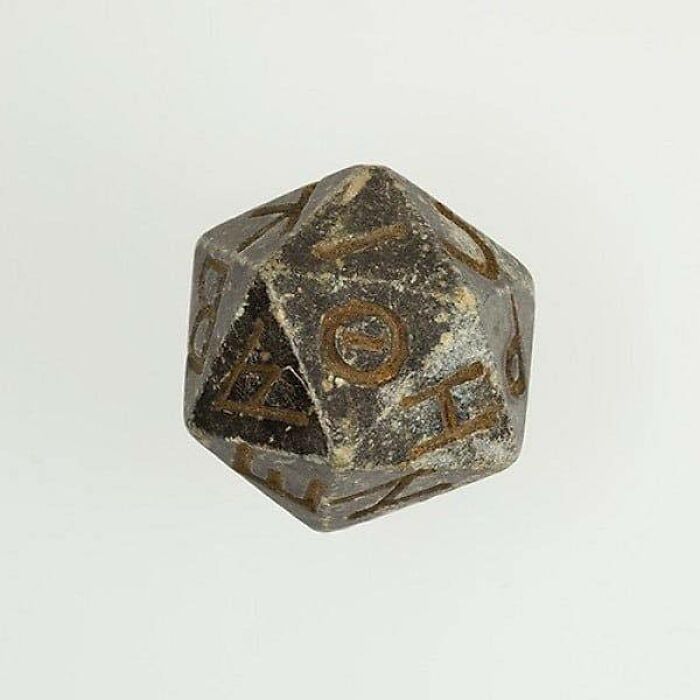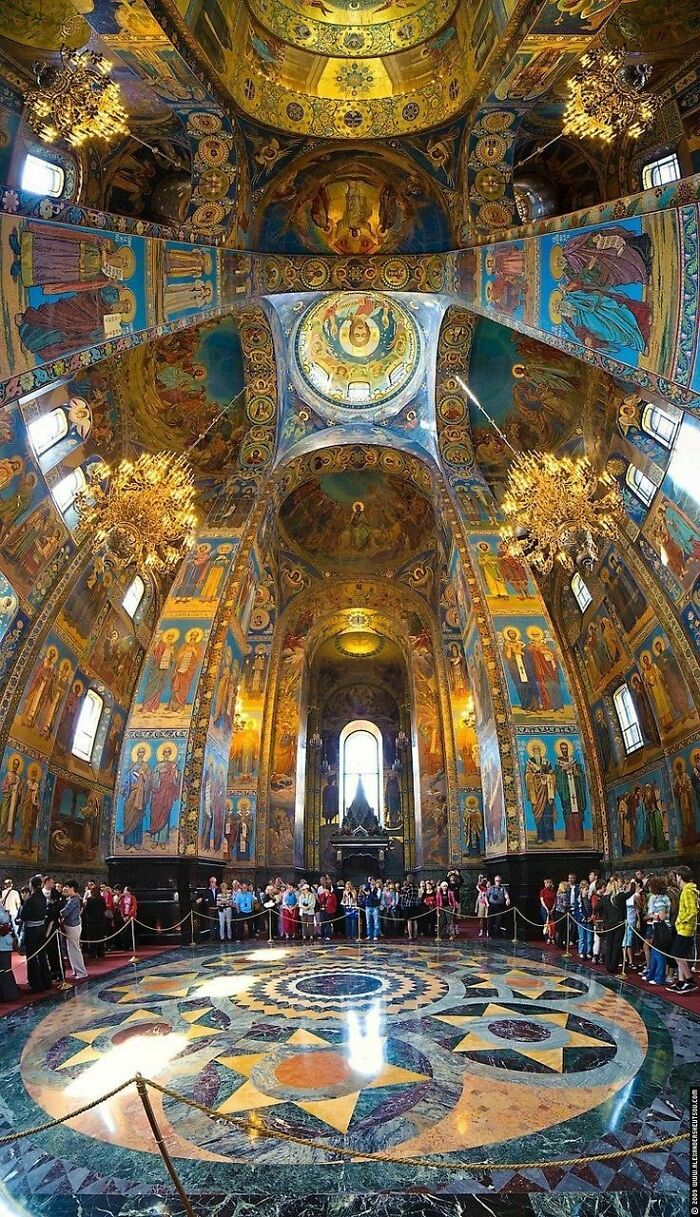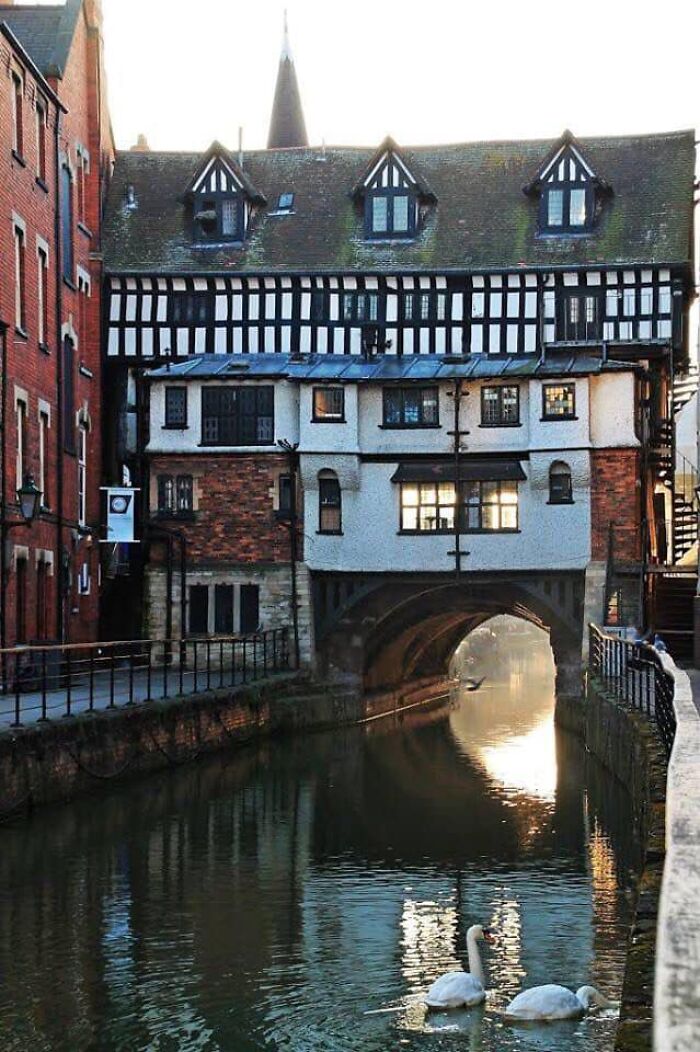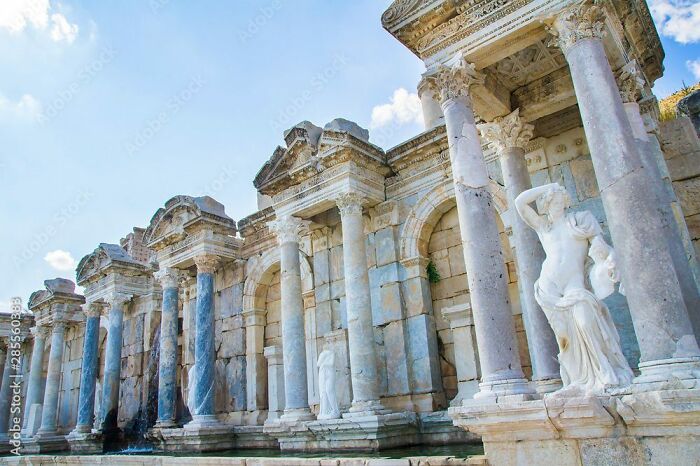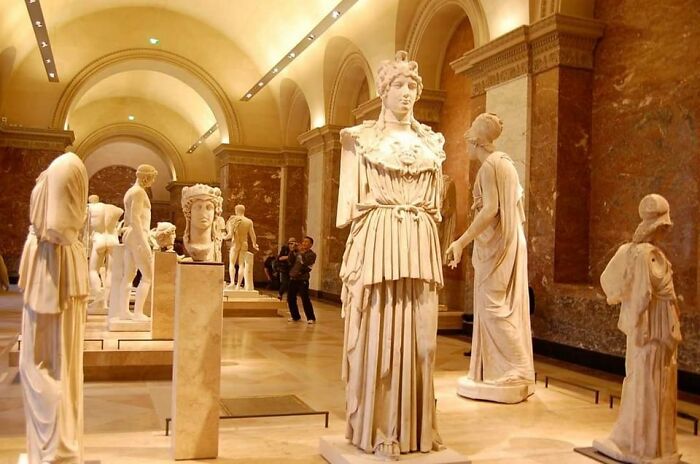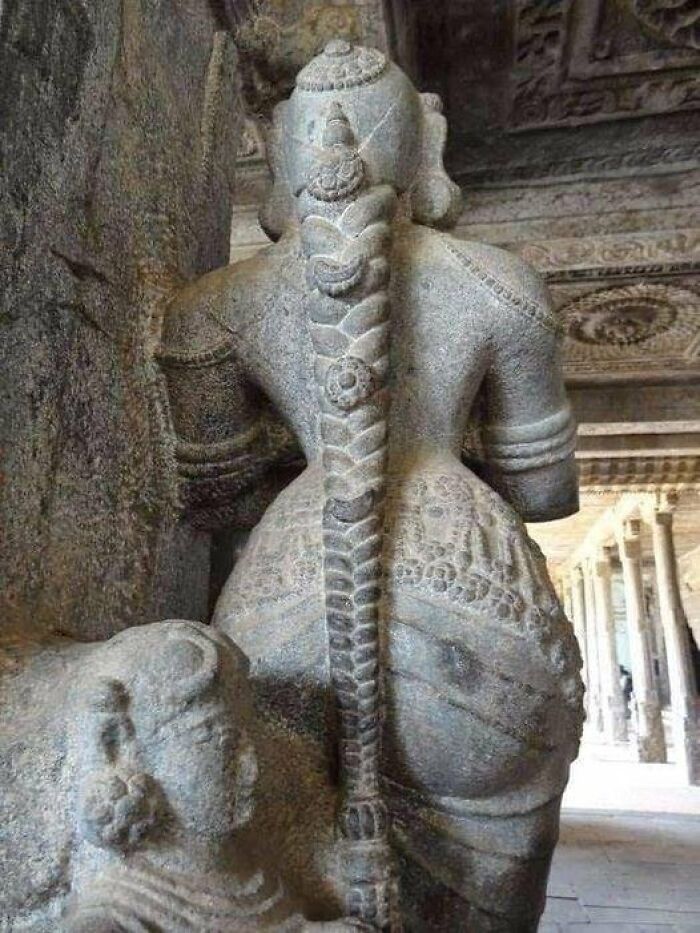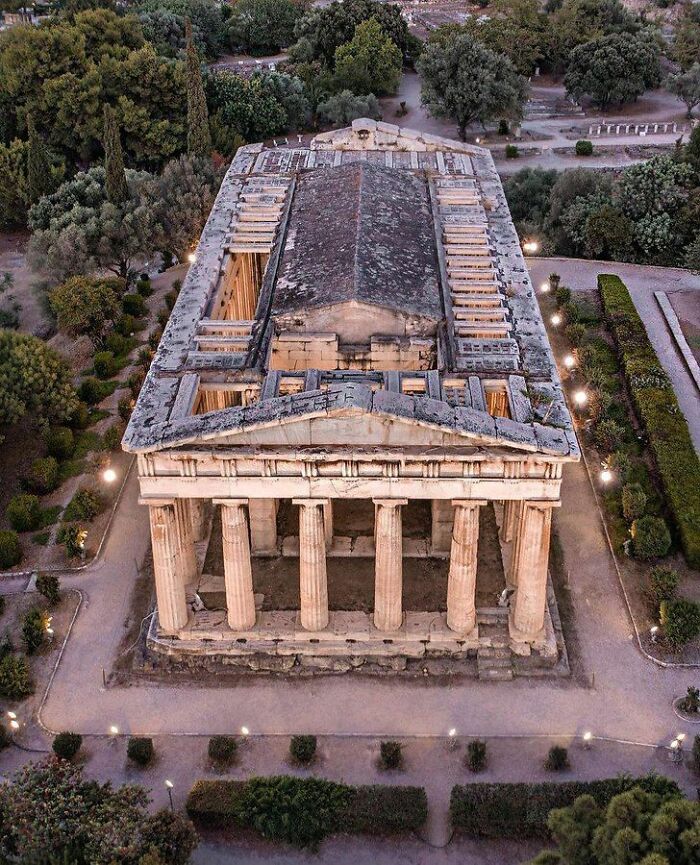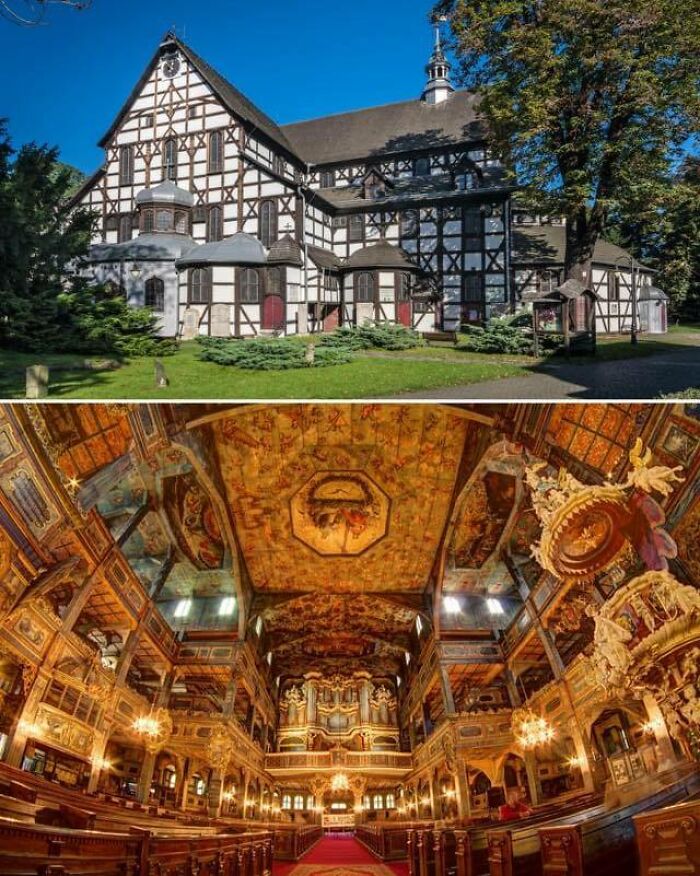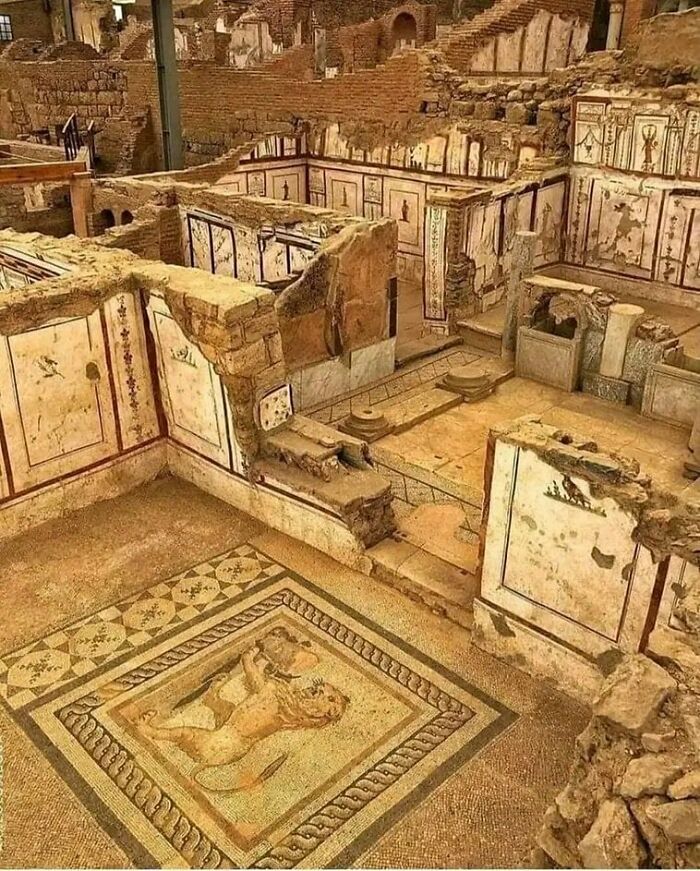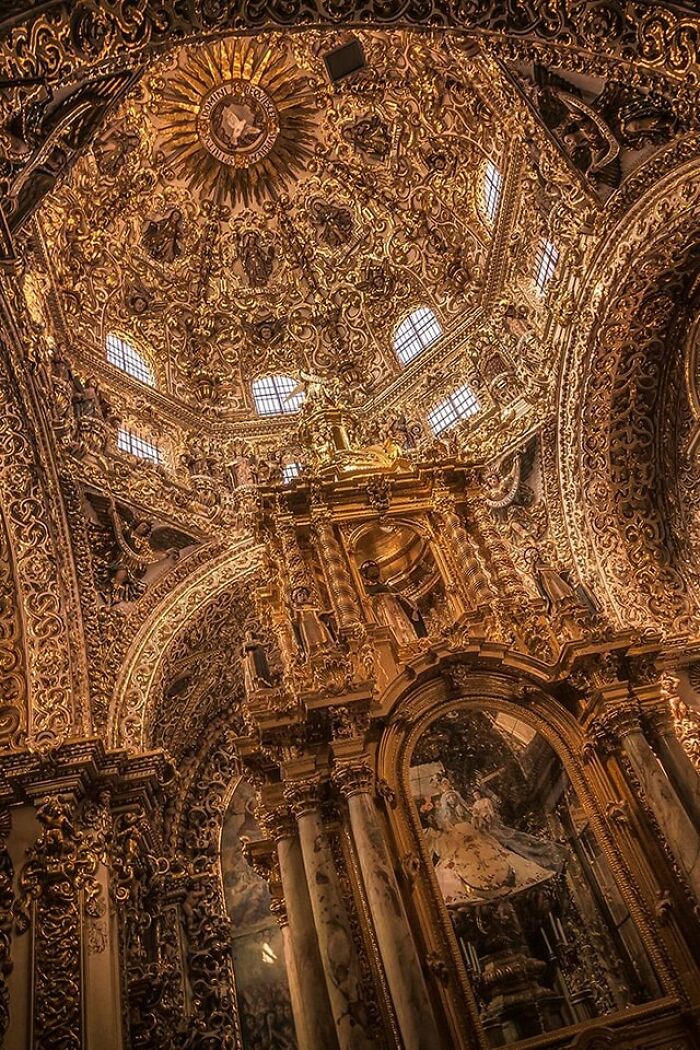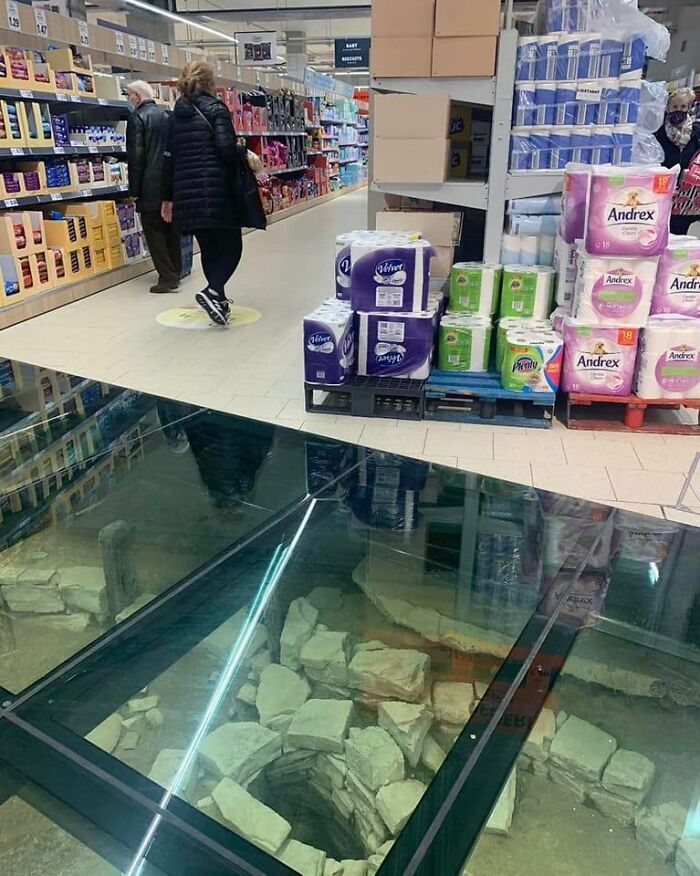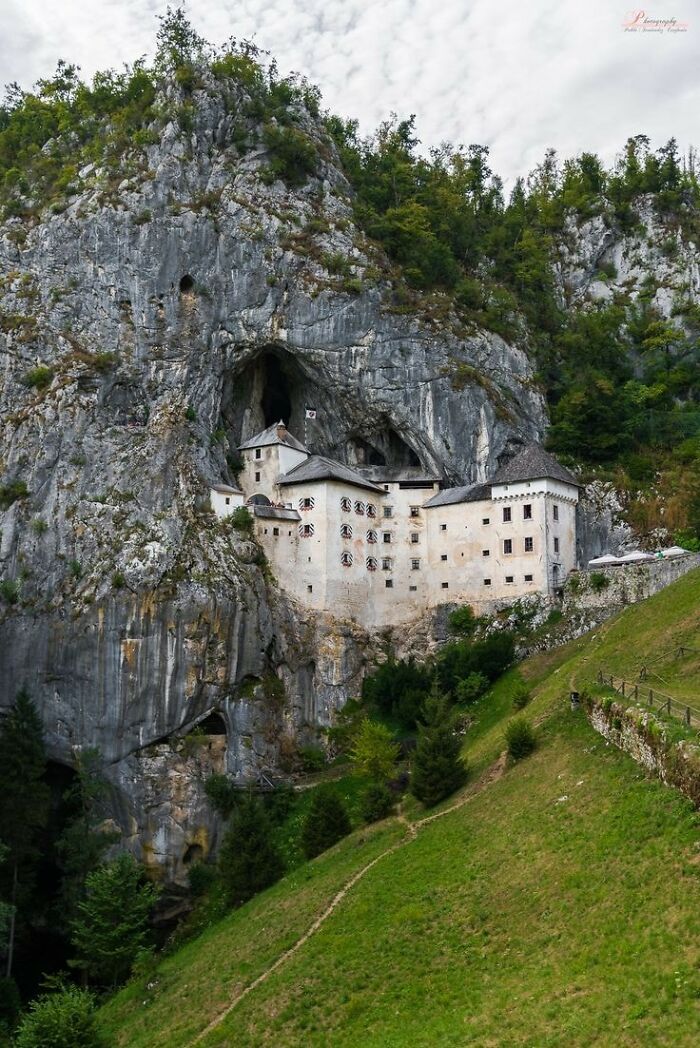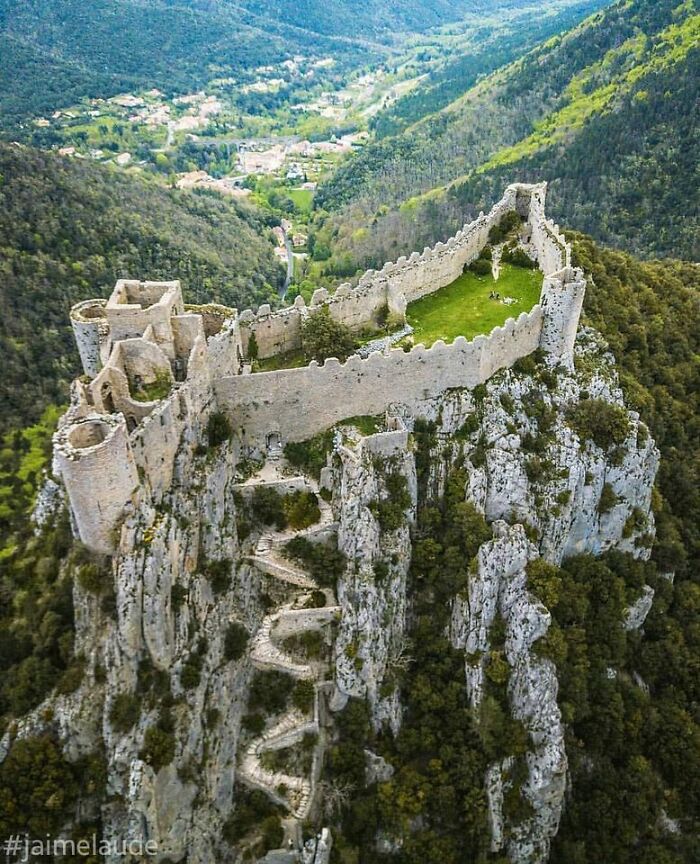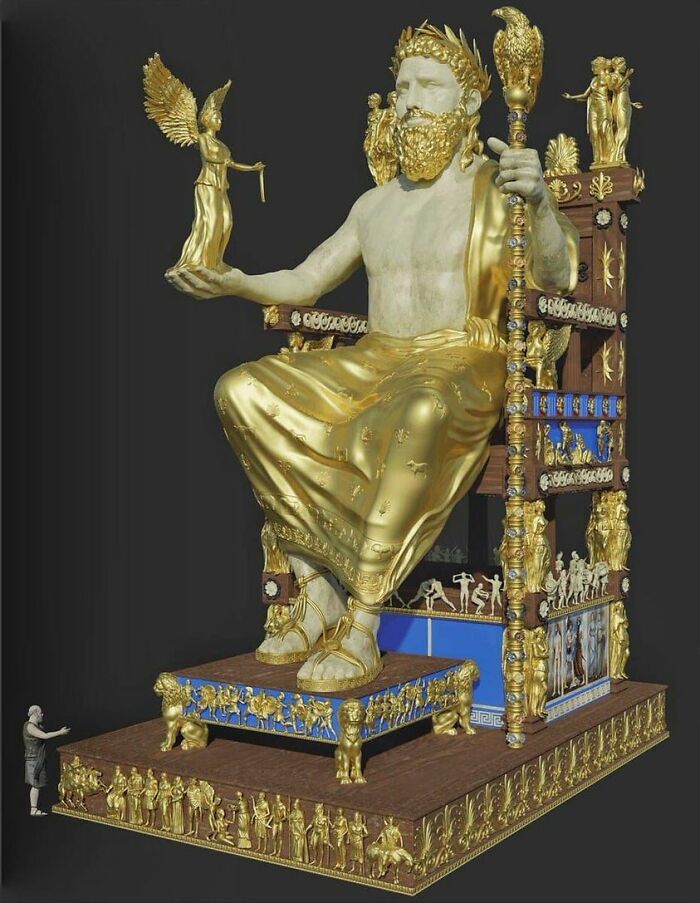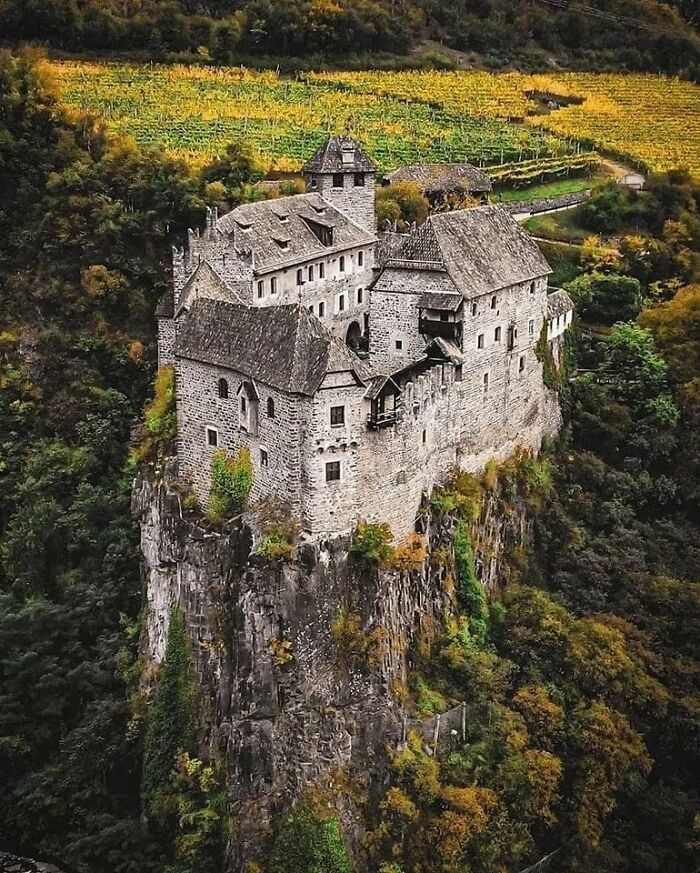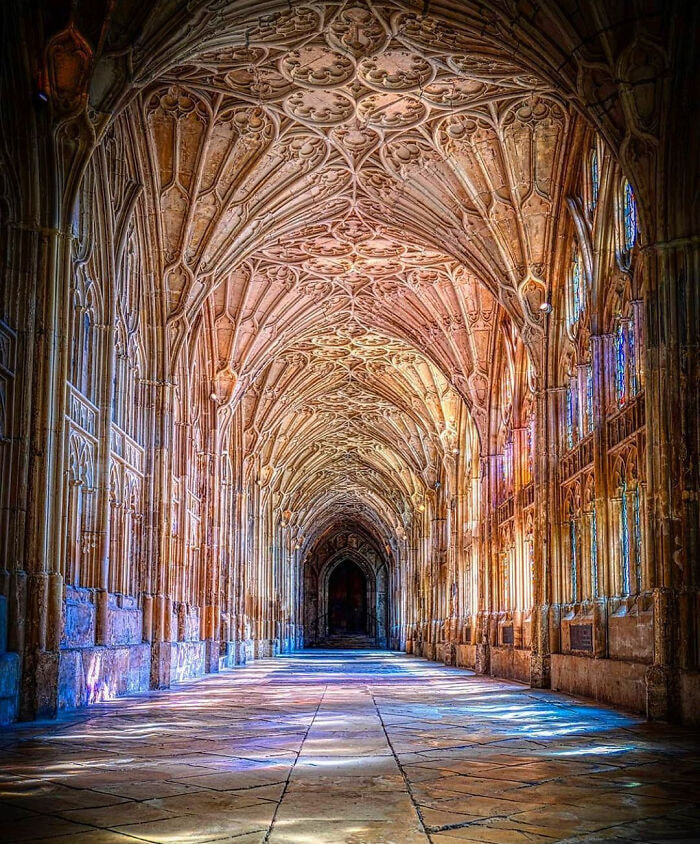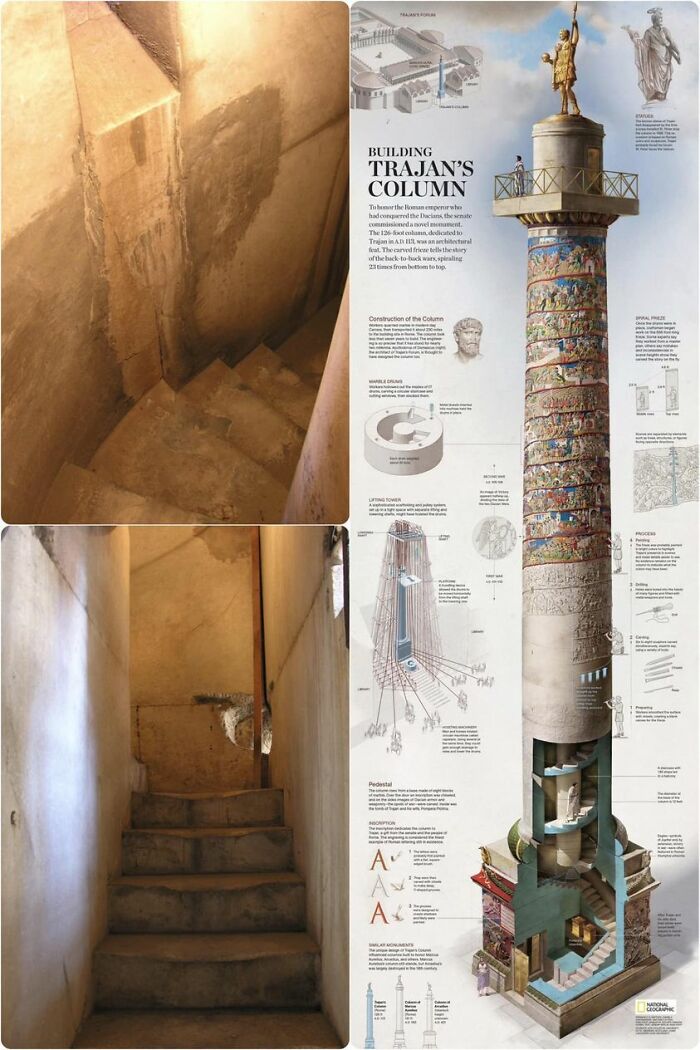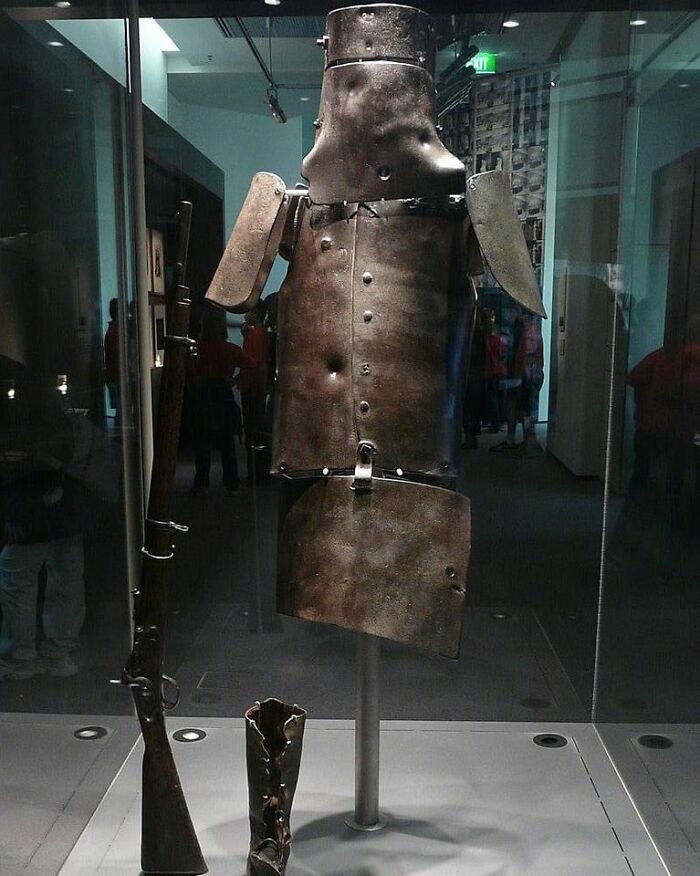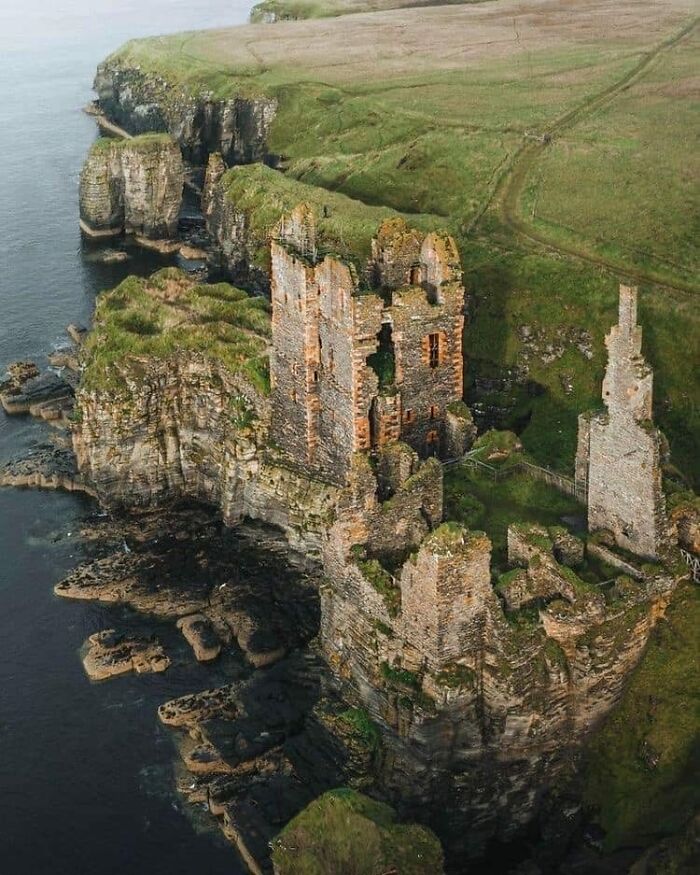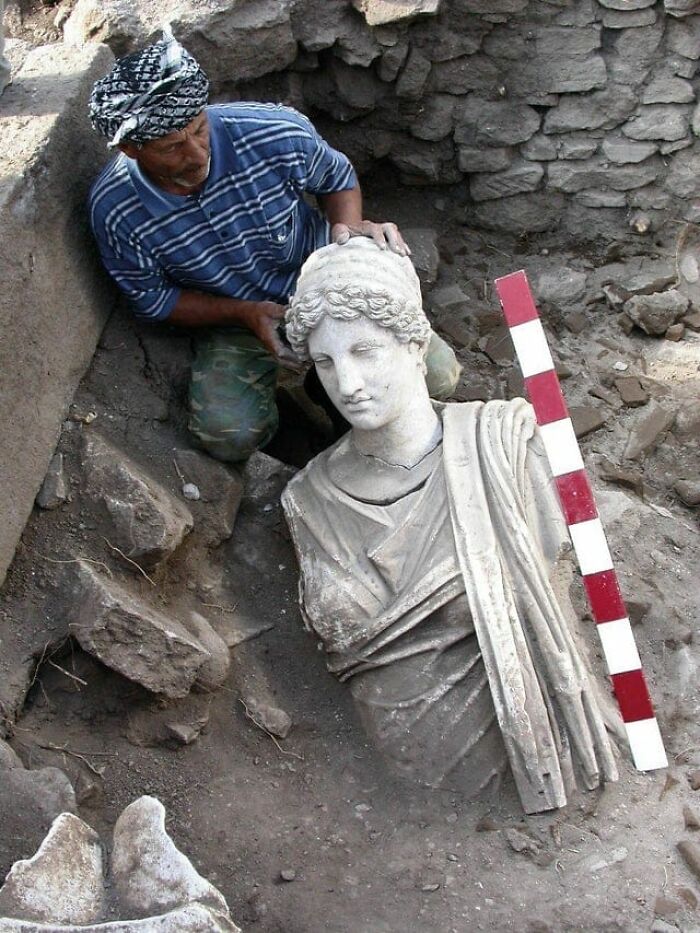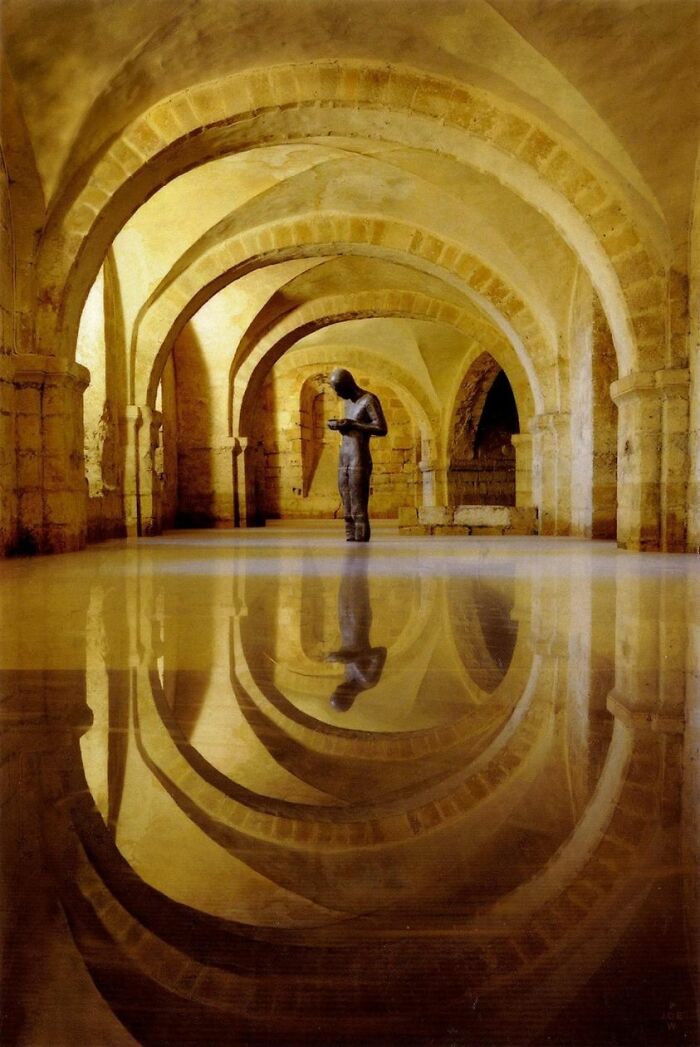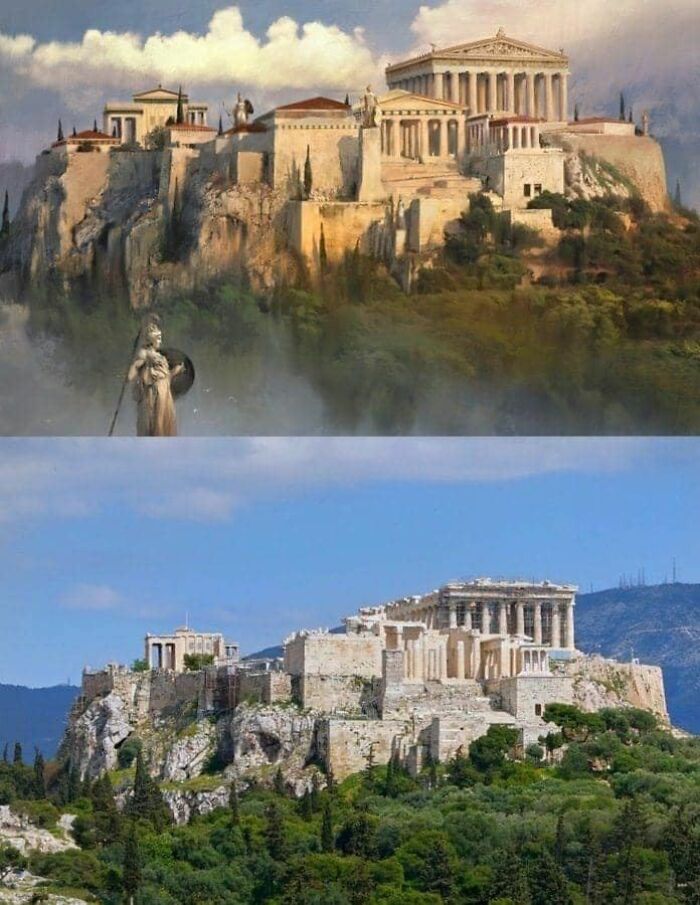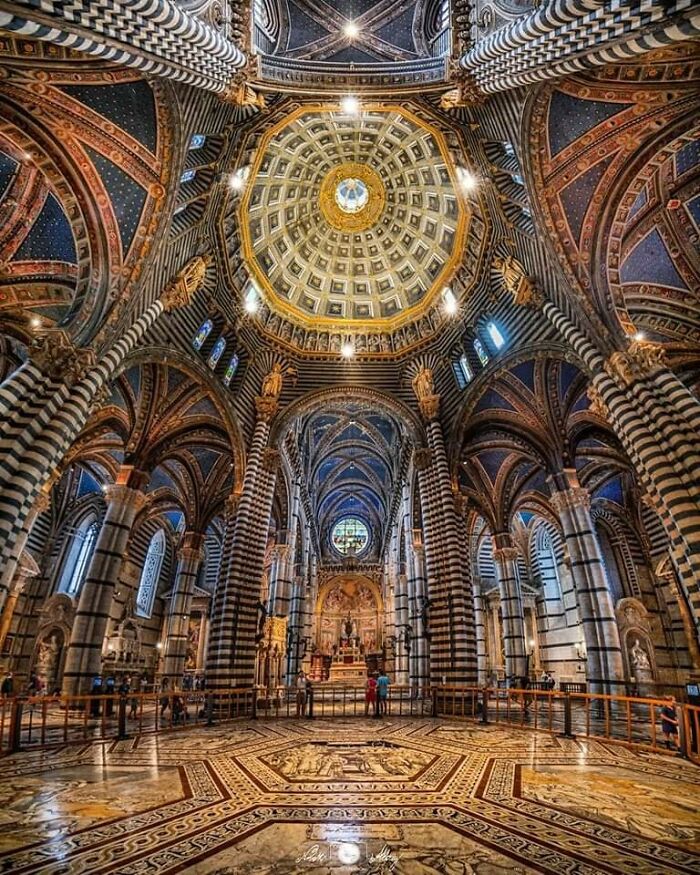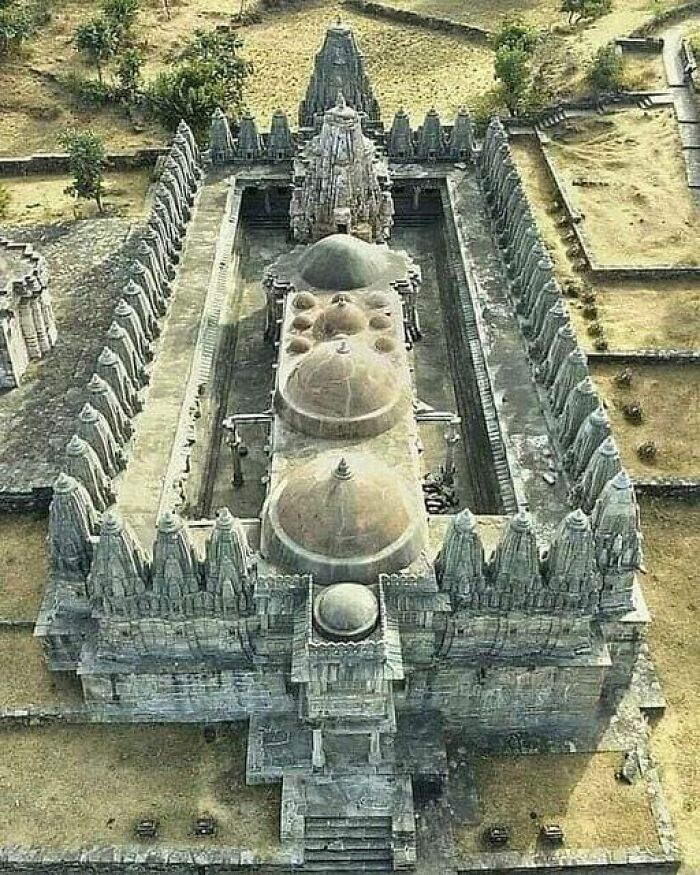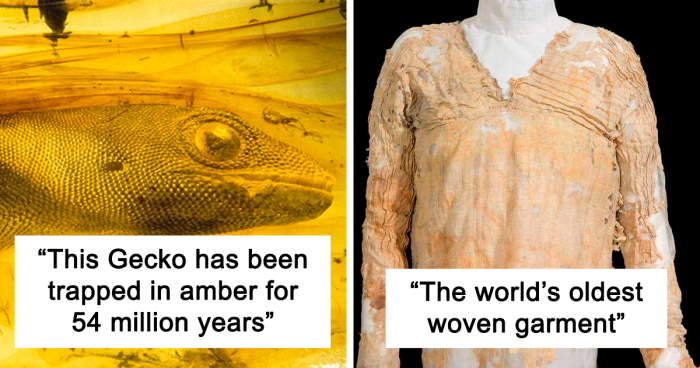
40 Fascinating Things From The Past That Survived For Future Generations To See, As Shared On This Facebook Group
Going back in time is sadly not possible; however, that doesn’t stop researchers from uncovering the secrets of the past. Each day they discover something new that shows what life was like hundreds of years ago. Unsurprisingly, there are large communities of scientists that carry out complex research to put the puzzle pieces together.
Similarly, there are groups of enthusiasts who might not be frequent visitors to the archeological sites themselves but enjoy exploring the world of antiquity, nevertheless. The Facebook group ‘Archaeology & Ancient History’ is a great example. It has nearly 80k members and stores an impressive collection of images covering everything from ancient architecture to unique archeological finds, and more. We’ve gathered some of them into the list below, which might spark your interest in the ancient world.
This post may include affiliate links.
"Veiled Lady" (Bust) By Raffaelo Monti, 1860. Marble
This masterpiece is a wonderful example of sculptor Raffaelo Monti's skill. We can’t see through stone, but through tricks of light and polish, Monti created the illusion that we can. On his Veiled Lady, the top of the head and shoulders are polished smooth, to reflect light. But where the veil falls across the face, the marble is less polished. It reflects less light, suggesting the texture of fabric. Sculptures of veiled figures peaked in popularity during the 1700s in Italy, an opportunity for sculptors to show their technical mastery over marble. About a century later, Monti and other artists revived this technically demanding tradition.
This 'Colossus' Sculpture Was Created By Italian Sculptor Giambologna In The Late 1500s As A Symbol Of Italy's Apennine Mountains
A Few Years Ago, The World’s Largest Intact Ancient Mosaic Opened To The Public In Antakya, Turkey
The sixth-century stone mosaic, spanning some 1,200 square meters and made up of geometric shapes and non-repeating figures, was probably used as a public space in its time, archaeologists believe.
The stone is distinctive due to its curved, rug-like surface, and the artifact grew curved as a result of earthquakes in 526 and 528 AD.
Despite the quakes, however, the mosaic never broke, and made it to the present day intact and unbroken.
Unearthing the piece took nine years of hard work, and other historical artifacts were brought out during the excavation.
The massive mosaic proved that the mosaics of Antakya - ancient Antioch, in the Hatay province - are the finest historical artifacts not only in Turkey, but in the entire world
A Mysterious Unknown Artist Is Believed To Have Created A Rock Formation In The Lake District Known As The Borrowdale Banksy
The carefully placed structure, believed to be made from local slate, is circular in formation and provides a perfect frame with a view overlooking the Borrowdale Valley in Cumbria, England.
1,200 Stone Sculptures With Different Facial Expressions At The Nenbutsu-Ju Buddhist Temple In Kyoto, Japan
This Gecko Has Been Trapped In Amber For 54 Million Years
There Is A Road In Rome, The Appian Way, Which Was Built In 312 Bc By Appius Claudius Caecus And It Is Still In Use Today
The Swedish Warship Vasa
It sank in 1628 CE, less than a mile into its maiden voyage and was recovered from the sea floor after 333 years almost completely intact. Now housed at Vasa Museum in Stockholm, is the world's best preserved 17th Century CE ship.
Mosaic Remains From Archaeological Site Of Volubilis, In Outskirts Of Meknes, Morocco
This Petrified Opal Tree Trunk Located In Arizona Is 225 Million Years Old
300 Years Old Carved Tibetan Skull
Believe It Or Not. There Are 100,000+ Carvings On The Gopura Of This Temple
Don’t be confused friends....
This wasn’t built by the Aliens.
But were carved by human hands through the hard work & believe towards God, our Ancestors made this impossible possible and it shows, how great & efficient they were.
Suchindram Anjaneyar Temple, Kanyakumari, Tamil Nadu
Radiocarbon Dating Of The Tarkhan Dress, Named For The Town In Egypt Where It Was Found In 1913, Determined That The Very Finely Made Linen Apparel Dates To Between 3482 And 3103 B.c., Making It The World’s Oldest Woven Garment
Looks like what the kids wear these days. Ahead of their time, those Egyptians...
The Impressive Colomares Castle, Spain
The 'Little Chapel', Which Is Located On Guernsey, Was Constructed Over Decades By Monks From France
It is adorned with hundreds and thousands of pieces of broken pottery and iridescent shells
The bijou place of worship, tucked away in Les Vauxbelets valley, 'feels magical and otherworldly'
In opposite to the explanation and from the explanation I've gathered (ARTE TV channel) it was one monk who build/created it (having Italian churches in his mind). Additionally he had to "tear" it almost down and had to do severe reconstruction work as one of the clerical priests, who decided to eventually visit, did not really fit through the door. But read for yourself on Wikipedia: https://en.m.wikipedia.org/wiki/Little_Chapel (Edit: spelling. Again. I'm sorry folks.)
In 1965, Excavations In Mezhyrich, Ukraine, Revealed The Presence Of 4 Huts, Made Up Of A Total Of 149 Mammoth Bones
These dwellings, which are about 15,000 years old, are some of the oldest shelters known to have been constructed by pre-historic man.
Over 3000 Years Old Animal Figurines Mounted On Little Carriages Are Described As Prehistoric Children Toys On Display At The Louvre Museum In Paris
The relics were unearthed in Susa, southwestern Iran, dating from Elamite Period, C.1150 BC
This Enormous Underground City That Once Housed 20,000 People Was Accidentally Discovered By A Man After Knocking Down A Wall In His Basement
When archaeologists later arrived to the site, they revealed that the city was 18 stories deep and had everything needed for underground life, including schools, chapels, and even stables.
Image credit: Nevit Dilmen/Yasir999
'siberian Unicorn’ Once Roamed Among Humans, Surviving In Eastern Europe And Western Asia Until At Least 39,000 Years Ago, Around The Same Time Of Neanderthals And Early Modern Humans
A Magnificent Roman Striped Mosaic Bowl, Dating Late 1st C. Bc/Early 1st C Ad. Made Of Preformed Rods And Canes Fused On Or In Mould
Photo: Corning Museum of Glass
The Oldest, Most Complete Bible On Earth
The Ethiopian bible, which was written on goat skin, was the world's first illustrated Christian Bible and was written around the early 5th Century CE
I am going to go out on a limb here and suggest that Ethiopia in the 5th Century CE did NOT see a lot of white dudes who looked like hippy hitchhikers from Oregon...
The Crypt Of San Magno, Anagni, Italy
Also known as the City of Popes (four popes hailed from town), Anagni is crowned by its beautiful romanesque cathedral dating back to turn of 11th and 12th centuries
Photo by: @carthe [ig]
Cemetery In Taiwan
In 1842, Joseph Geefs Carved The Angel Of Evil (Left Statue) To Be Placed In The Pulpit Of Liège Cathedral, But The Statue Was Removed Because Of Its Distracting Allure And "Unhealthy Beauty"
The cathedral then passed the commission to his older brother who made the statue on the right
The Phuktal Monastery Is Built Around A Natural Cave, Which Is Believed To Have Been Visited By Numerous Sages, Scholars, Translators, And Monks Around 2,550 Years Ago
Had to google this one as wanted to know where it is. Phuktal Monastery or Phuktal Gompa is a Buddhist monastery located in the remote Lungnak Valley in south-eastern Zanskar, in the Himalayan region of Ladakh, in Northern India. It is one of the only Buddhist monasteries in Ladakh that can still be reached only by foot
Akkadian Cuneiform Tablet (1750 Bce)
Here we see one of the earliest surviving recipes ever written in the ancient Akkadian language. The artifact is dated to be from around c. 1750 BCE., and is a well intact cuneiform tablet that shows us 25 recipes for stews, whereas 21 are meat stews and 4 are of vegetable stews, but it does not give the measurements or cooking time. The tablet's text was translated by Jean Bottéro and Teresa Lavender Fagan and is now located at Yale University.
You can actually watch someone cook this. The YouTube channel Tasting History with Max Miller has an episode where he cooks one of these stews.
Pompeii Ruins From Above
Chepstow Castle Sits Atop A Cliff Across The River Wye Which Separates England And Wales
Roman Silver 'Swiss Army Knife', 200 To 300 Ad, The Fitzwilliam Museum, Cambridge. The Piece Contains A Knife, Spoon And Fork Plus A Spike, Spatula And Small Pick
New Discovery: A Well-Preserved Section Of The Via Flaminia Was Discovered During Construction Works
The road connected Rome with central and northern Italy and was built in the second half of the 3rd century BC.
More Than 3,000 Years Ago, This Outstanding Gold Beaker, Decorated With Winged Bulls And Foliage, Was Crafted By Highly-Skilled Artisans In Iran (National Museum Of Iran, Tehran)
A Mosaic Discovered In Ancient Hadrianoupolis, Eskipazar District, Karabük Province, Turkey
Commonly Known As Dracula's Castle, Bran Castle Is Probably The Most Famous Medieval Castle In Romania
I hate to disappoint people but this was not Dracula's castle. Dracula (Vlad Tepes) was only imprisoned here for a very short period of time. I visited it in late autumn and there was a cold, foggy day - and it was kind of spooky :)) However, legends and popular beliefs about vampires are still widespread in Romania. Elder locals will tell you about vampires (called "strigoi" or "moroi"), how to spot them, how to protect from them, or how villages were relocated several decades ago because of the damage that vampires did.
Inside La Sagrada Familia, Barcelona
These Are The Remains Of A Prehistoric House From The Bronze Age Settlement Of Akrotiri In Santorini
The Bronze Age settlement of Akrotiri was one of the most important Minoan urban centres and ports in the Aegean Sea when it was covered by volcanic ash in the 17th century BC.
In prehistory it was a well connected Minoan port town, with connections to mainland Greece and as far afield as Egypt and Syria.
As the town was covered in ash following a volcanic eruption on the island, preservation of the settlement is exceptional, making this one of the most significant archaeological sites in Greece
Mehrangarh Fort
Mehrangarh located in Jodhpur Rajasthan is one of the largest forts in India. Built in around 1459 by Rao Jodha the fort is situated 410 feet above the city and is enclosed by imposing thick walls. Inside its boundaries there are several palaces known for their intricate carvings and expansive courtyards.
Also known as (The Cursed Fort) This is one of the largest Fort in the world and probably the strongest. Its located near Jodhpur and is situated 410 feet above the city. This fort has been part of several battles but enemies could never conquer this mighty fort.
Location : Jodhpur, Rajasthan
The Roman Pantheon
Then vs. Now : Maiden Castle; Largest Hill Fortress In England
Built in 600 BC, and greatly expanded in 450 BC, fortress sits atop a large hill 914m long. In Iron Age, hundreds of people lived there
Really it was just a lot of digging and throwing the earth on huge piles. But a lot of work nevertheless
Old City Of Efes, İzmir, Turkey
I saw it 2 years ago and it is beautiful and amasing how people had heated floor, bathhouses and shared toilets xD
Wreck Of The Ten Sail Is A Historic Shipwreck Event That Occurred Off The East End Of Grand Cayman On 8 February 1794
It's a FAKE image! The shipwreck event was real but after 230 years and numerous hurricanes that have torn through in that times it would NOT look like that. And btw- the highest hills in the Caymans are about 60-65m (200 ft) tall.
A Number Of Old Stone Bridges Span The Rivers Near The Town Of Konitsa In Northwestern Greece
Not far from the Albanian border, but none can match the simple beauty of the "Konitsa Bridge"; a single span pedestrian bridge that crosses the Aoos River.
The Epirus Region of Greece is known for its rugged beauty, its mountain ridges, and alpine flora and fauna. It’s also famous for the stone arch bridges that cross the region’s rivers, connecting a network of historic towns and villages.
Arguably the most charming of these bridges is the Konitsa Bridge (sometimes called the Aoos Bridge), which spans the Aoos River just to the south of Konitsa. Completed in 1870, it was the work of the architect and engineer Ziogas Frontzos from Pyrsogianni, a small village some 20 miles north of Konitsa.
Despite his provincial education—he learned much of his craft in the quarry near his village—Frontzos nonetheless impressed the Turkish engineers who had previously tried and failed to build a bridge over the Aoos. When the Turks asked him where he had studied, he proudly told them he had studied at the University of Pyrsogianni, in the “quarry outside the village where young craftsmen were taught the secrets of this art.”
The elegant single-arched bridge is 66 feet (20 m) high and 115 feet (35 m) in length, which could quite well make it the largest single arch bridge in the Balkans. It’s narrow, however, just wide enough for pedestrians, livestock, and carts to pass from one side to the other.
It’s also not the kind of bridge you’d want to stumble across in an inebriated state. The low walls at either side don’t offer much of a barrier between pedestrians and the river below. Because of this, a bell still hangs under the arch to warn passersby of strong winds, which could make the crossing dangerous.
The fact that this pretty bridge still stands at all is no mean feat. The Turkish Army tried unsuccessfully to burn it down in 1918 and later attempts to blow it up during the Greco-Italian war and the civil war that followed also proved fruitless. Ziogas Frontzos would surely be proud that his picturesque arch, a seemingly fragile and fairytale-like construction, managed to survive these various threats.
Source: The Hiking Experience
A Magnificent Mayan Pyramid In Tikal National Park,the Ancient Mayan City In Guatemala
Even After 1000 Years, The Ancient Persian Vertical-Axis Windmills Are Still Operational Today
Pfunds Molkerei In Dresden, Germany
This little store in Dresden is the “World’s Most Beautiful Milk Shop,” an official title bestowed upon it by the Guinness Book of World Records. That claim might be hard to verify, but there can’t be many contenders rivaling the sumptuousness of Pfunds Molkerei.
The milk shop was opened in 1880 by Paul Gustav Leander Pfund, and was fortunate to survive the heavy bombing during World War II that destroyed most of the city. Little has changed inside the shop since then, although much has changed outside, namely the inventions of refrigeration and pasteurization that have made milk easier to keep at home.
But today Dresdenites aren’t just walking into this splendid dairy shop for a tall glass of milk. Now, they come for the atmosphere. The entire interior is decorated with hand-painted Villeroy & Boch ceramic tiles. The shop is covered floor to ceiling with dancing angels, chubby babies, cows, and woodland creatures. It’s all accented in gold and blue, and lit by chandeliers, which might delude some into thinking this is a luxury jewelry shop, rather than one selling milk.
The wares inside haven’t changed much either. Pfunds Molkerei still sells milk and boasts one of the country’s finest cheese selections (though they were forced to limit it to a mere three state-sanctioned brands during the socialist years of East Germany). The cafe upstairs sells dairy-based delicacies, like tortellini with spinach and grated feta or pork in pepper cream sauce. The shop also offers chocolates, milk soaps, and cream-based liquors, though it can be hard to reach them through the hordes of German milk-lovers.
1,500-Year-Old Ceramic Maya Figurine With Removable Helmet, From El Perú-Waka', Petén, Guatemala
The Column Of Marcus Aurelius
The Column of Marcus Aurelius is a Roman victory column that commemorates the military campaigns and triumphs of Emperor Marcus Aurelius. It stands at the center of Piazza Colonna in Rome and is almost 100 feet tall. The column features a spiral relief depicting the military campaigns of Marcus Aurelius against the Germanic tribes along the Danube River. It is considered to be one of the best examples of Roman art and architecture and is a popular tourist attraction in Rome.
Victorian Radiator With A Built-In Bread Warmer
Roman Mosaic Floor From Caracalla's Baths (Terme Di Caracalla) In Rome, Italy
Baths were likely built between 212-217 CE, during reigns of emperors Septimius Severus and Caracalla. They were in operation until 530s CE, and then fell into disuse and ruin.
The Margravial Opera House Is A UNESCO World Heritage Site Located In The Town Of Bayreuth, Germany. It Was Built In The Mid-18th Century
A Magnificent Baroque Library In Strahov Monastery, Which Was Founded As Early As The 12th Century It Ranks Among The Oldest Monasteries In Czech Republic
Very Cool Caucasian Dagger, Circa 1900!!!
Devil’s Tower In Wyoming, USA Is A One-Of-A-Kind Natural Phenomenon With A Unique Story
Its stark towering presence, formation, and character are incredibly intriguing and mysterious. Devils Tower is a mass of rock nestled among the Black Hills near the town of Sundance. It rises 1,267 feet in the air above the Belle Fourche River, grasslands, and ponderosa pine forests. It was established by Theodore Roosevelt in 1906 as our first national monument.
The history of Devils Tower has baffled Native Americans and early explorers for many years. According to Native Americans, seven little girls were playing in the forest when giant bears started chasing them. The girls ran and jumped on a boulder and started praying. The rock began to grow up toward the sky, putting quite a bit of distance between the girls and the bears. It's said that the cracks and columns on Devils Tower came from the bears' claws as they tried to climb the tower.
Devils Tower is a popular destination for classic rock climbers. Some of the rock columns feature cracks up to 400 feet long.
Why is Devils Tower important? Even today, many Native Americans still consider Devils Tower a sacred site. To respect the tribes' cultural traditions and rituals still performed there, the monument is off limits to climbers during the month of June. These sun dances, vision quests, and prayer offerings are all significant parts of Devils Tower history.
Geologists determined that Devils Tower in WY was actually formed as a result of a volcano. The cooling magma created the delineated columns. The tower is unique because of its size and the type of rock, phonolite. The columns that make up Devils Tower are some of the tallest and widest found in these types of formations.
A Wedding Bed, Believed To Be The Oldest In Britain, Dating To The 1570s, And Lost For Centuries, Turned Up At Auction By Bonhams Of London In 2014 Following A Mysterious Journey Over 400 Years
The Elizabeth I oak four-poster belonged to the Radclyffe family of Salford and graced the Star Bed Chamber at Ordsall Hall, Salford in the late 16th century. It is the only surviving piece of furniture from the Hall. Made as the wedding bed for Sir John Radclyffe and Lady Anne Asshawe it has had a colourful past and even more colourful recent history.
John was born in Manchester in 1536, the second son of William Radclyffe and Margaret Trafford. He was a Knight of the Shire and famed for the strength of his Catholic faith, even in the Protestant age of Elizabeth I.
Mistress Anne Asshawe was born near Chorley, in the same year as Edward VI was crowned (1548). She was a woman of immense wealth as the sole heir to her father Thomas’ fortune. She was a Lady of the Court of Elizabeth I and married Sir John aged 25. They had six children and lived and slept happily together for 17 years before John’s death in 1590.
The Radclyffes of Ordsall Hall were one of the most influential families in England. They served a number of Plantagenet and Tudor kings and queens in civil and foreign wars. Many were knights and later Justices of the Peace and local MPs. A direct ancestor of Sir John in the 1300s is credited by some as inviting Flemish weavers over to Salford and thus starting the textile industry which was to make the North of England wealthy and economically active.
Like all noble families at the time, the Radclyffes recognised that they could not exist in isolation and married into other noble dynasties as a way of securing their futures and their fortunes. These stories of intermarriage and dynastic security are played out in the bold carvings depicted on the bed. Carvings that relate directly to the Radclyffe coat of arms and intriguingly also carry the Royal Arms used by Henry VIII, Edward VI and Mary I.
The bed disappeared somewhere around 1650 when the Hall passed from family ownership. It turned up in the 1930’s at the house of a Whalley Range recluse. All of his possessions, including the bed, were sold off to cover death duties, purchased by a Mrs Robinson of Monyash, Derbyshire.
The bed lay in pieces in farm outbuildings until it was put back together and bought in 1968 by Dr Chris Douglas who was a collector of medieval and Tudor furniture. When the bed went under the hammer, Ordsall Hall raised funds to bid for the bed and to ‘bring it home’. They managed to raise four times the suggested guide price. However at bid they came up against a wealthy businessman who wanted to acquire the bed for his young daughter as the perfect Princess bed.
Determined to make sure that the bed was not lost again from Salford, Ordsall curator Caroline Storr had one last try and made an emotional plea to the new owners. Relating the history of the bed and the story of the Radclyffe family worked and the new owners agreed to let the bed come back to its original home.
I would not let my kid near that Princess or not. Too ornate and with quite a history to just be used in a bedroom
The Cypriot Terracotta Army Consisting Of 2000 Seats, From The Sanctuary Of The Occupied Village Of Agia Irini
This archaeological treasure was discovered by a Swedish expedition that classified these figurines in the Cypriot-Archaic era and is a huge archaeological find and historical theme, as the collection of thousands of figurines in a place of worship is nowhere in the world except the buried soldiers in the Mausoleum of the First Chinese Emperor. In the treasure of Cyprus, 2,000 clay statues with mainly male figures and cattle were placed as votive offerings in a semicircle around the altar of the sanctuary. The male figures wore war clothing but were unarmed. The multitude of statuettes, the many chariots drawn by four horses manned by drivers and warriors in full armor, a few bronze statuettes, as well as a large number of life-size statues arranged in wide semicircles around a stone enclosure cultural value. About two-thirds of the unique archaeological finds were transported to Sweden in 1931 and are now the core of the Cypriot collections of the Stockholm Medelhavsmuseet. About 12,000 of the 18,000 mobile finds were packed in 771 wooden containers and transported by rail from Nicosia to Famagusta, and from there by ship to Sweden. Sweden also has all the diagnostic shells. At the moment, the 1,500 figurines are in Sweden, while the rest 500 figurines that remain in Nicosia are one of the most impressive exhibits in the Archaeological Museum of the island's capital.
And I can't even get my dolls and action figures to stay standing long enough for photos
The Athenian Treasury At Delphi, Greece Ca. 5th Century Bc "Then And Now" With Only Light Color Additions. Wikimedia Cc-By-Sa-1.0
I'm not sure I'd say, "...with ONLY light, color additions..." (punctuation added for clarity?). I'm looking at other statutes and ornamentation on the top of the structure as well as other details. The, "what it might have looked like" is beautiful to be sure. My opinion though.
The World's Largest Ancient Mosaic Was Uncovered In Antakya, Türkiye
It covers 9,000 square feet (836 m2) and was made in the late Roman period, 4th Century AD
My Favorite Room In The Whole Castle! Hall Of Mirrors, Versailles, France
Gallery Of Geographic Maps. Built (1580-1585)
One of the most beautiful and evocative parts of the Vatican Museums is certainly the long corridor of 120 meters in length and six in width that leads to the Sistine Chapel adorned with geographical maps.
Minoan Gold Ring With Lapis Lazuli Inlays, 1850-1550 Bce
Photo by Einsamer Schütze
Pompeii. Street Of The Tombs
Throne Of Queen Eyridice, Grandmother Of Alexander The Great. Throne Was Discovered In 1987, Inside The Double-Chambered Tomb Of Aigai (Vergina) In Macedonia, Greece, 340 Bc
Armor Of An Officer Of The Imperial Palace Guard, China 18th Century
Wow! It looks so regal. I’m imagining a lot of ‘em standing guard (or whatever they did) and looking imposing and majestic! (And terrifying! I’d do whatever they told me to do!)
"Then We Will Fight In The Shade" - Actual Arrowheads From The Battle Of Thermopylae And Greek Shield
Peles Castle, Romania
Etruscan Bronze Helmet And Chest Armor, 500-450 Bc
From Etruria, Northern Italy. A rare bronze Negau type helmet, breast and backplate ensemble, unusual for their preserved golden finish (as these were found in a river in superb condition).
Ratto Di Proserpina Is A Large Sculptural Group Of Marble In The Baroque Style Created By Gian Lorenzo Bernini Between 1621 And 1622
Bernini was only twenty-three years old when he made this exceptional artwork. It depicts the Abduction of Proserpina, where Proserpina is captured and taken to the underworld by the god Pluto. The sculpture's fine details are extraordinary. You can see this masterpiece, among many others, in Rome's Galleria Borghese.
A Floor Mosaic Found At The Entrance Of A Roman Bath In The Timgad Antique City In Algeria With The Writing "Bene Lava" ("Good Wishes") It Dates Back To The 1st And 2nd Centuries Ce
Foot Of A Marble Sculpture Of Marcus Aurelius Unearthed In Southern Turkey. Emperor Aurelius Was Not Only A Military Leader But Also A Scholar Known For His Intellectual Pursuits
What's that red and white stick for? Can we not have a proper banana for scale?
Antiquity From The Victorian Era Found In Dresden, 1800
An Assyrian Lamassu, Discovered In The Ruins Of The Ancient City Of Nimrud
Located in the palace of the great Assyrian king Ahurnasirpal II, it's construction is dated to the 9th century BCE. Picture taken during my May 2021 visit to the Metropolitan Museum of Art in New York City.
Helmet And Gold Burial Mask Of A Macedonian Warrior, C.520 Bc
The gold sheet was pressed against the dead man's face and still retains the imprint of his features. From Sindos, Tomb 115. Thessaloniki Archaeological Museum.
Von Trapp Stone Chapel In Vermont
Built by the second oldest Von Trapp son, Werner, this lovely stone structure can be found uphill from the Trapp Family Lodge. Before shipping out to fight in World War II he promised himself that he would build a chapel on the grounds of the lodge should he return safely. Thankfully, he did come back unharmed and thus built the chapel between 1945-1948. It was built in honor of the WWII soldiers
The Ruins Of Herculaneum. Similar, But Better Preserved Than Pompeii
2000 Year Old Ancient Fast Food Shop In Pompeii, Were Highly Decorated And Cheap
The 2000-Year-Old Roman Road With 3 Skeletons Beneath A McDonald's Restaurant In Rome, Italy
Carved Door In Florence - Italy
Terrace Of The Lions
Location: Delos, Greece
Constructed: 600 BCE
The Terrace of the Lions on the island of Delos is one of the most famous ancient sculptures in the world. It is a Greek island and archaeological site near Mykonos in the Cyclades archipelago of the Aegean Sea. The island of Delos is recognized as the birthplace of the god Apollo and his sister Artemis, and was an important religious centre in ancient Greece. The first intact lion was discovered in 1905, and all lion statues are kept in the exact condition in which they were found.
Today it is one of the most important archaeological, mythological and historical sites in Greece. The Lion Terrace is a series of 12 stone lions with their mouths open as if roaring, all facing east. Some of the statues have deteriorated over the years due to climate change. It is believed to have been built by the people of Naxos in honor of the god Apollo. Therefore, the remaining statues were transferred to the Archaeological Museum of Delos in 1999, so that no other statues would be damaged or destroyed.
Treasures Of Troy - Sophia Schliemann Wearing The "Jewels Of Helen" Excavated By Her Husband, Heinrich Schliemann, In Hisarlik, Turkey. (Photograph Taken Ca. 1874)
A Three-Fold Bed Found In Tutankhamun’s Tomb In The Valley Of The Kings, Luxor, Egypt
It’s believed to be the first of its kind, and highly sophisticated for its time. The bed folded up into a Z-shape, making it compact and easy to transport.
Hmmm, the first Futon. It looks as uncomfortable as the ones that are made today.
What The Pyramid Of Khafre Looked Like 4,500 Years Ago Compared To Today
The pyramids of Giza were originally covered with highly polished white limestones, with the capstones at the peak being covered in gold.
Fonseca Bust, Marble Portrait Bust Of A Flavian Woman - Late First Or Early Second Century Ce , Capitoline Museums
Then vs. Now : Colosseum, Also Called Flavian Amphitheatre, Giant Amphitheatre Built In Rome Under Flavian Emperors
Construction of Colosseum was begun sometime between 70-72 CE during reign of Vespasian
Interesting factoid, the name Colosseum is from colossal as previously on this site there used to be a very large statue of Nero.
Campana Relief With Hercules Fighting The Lernean Hydra. Period: Roman. Date: 50 Bc.-Ad. 50. Medium: Fired Clay
Conical Helmet With Iron Mask. Japan, 17th Century
Okay, this is easily one of the scariest things I've ever seen...
Statue Of A Kore (Kore 684), From The Acropolis Of Athens
Archaic period, 490-480 BC
Credit: ©New Acropolis Museum, Athens
The Upper Part Of The Stela Of Hammurabis' Code Of Laws
20 Sided Die - Egypt 200 Bc
Bull Of Falaris
Thanks to Lucian, the 2nd century AD satirist, we know quite a bit about the torture machine known as "the brass bull of Perilaus" or "the bull of Phalaris".
The sculptor Perilaos between 570-560 BC.
he made to the order of the tyrant Phalaris, a brass bull that could fit an entire man inside. When they lit a fire under the bull, the one inside was roasted alive and his voices were heard, through a special mechanism, like the bellowing of the bull.
When he first presented his invention to the tyrant of Acragantas of Sicily, he ordered Perilaus to be put inside the bull and made his first victim.
It was a fitting end for the inventor of such a diabolical machine
The Church Of The Savior On Spilled Blood Is One Of The Most Colorful And Ornate Landmarks In All Of Europe. Inside, Colorful Mosaics, Italian Marble And Precious Stones Decorate The Walls And Ceilings
This Medieval Stone Arch Bridge, One Of The Oldest In England, Crosses The River Witham In The Historic City Of Lincoln
The "High Bridge" was built in 1160, while the current timber-framed structures built into the bridge deck date to around 1550.
Bridges with buildings on them used to be common in England, of which the most famous was the old London Bridge. There are currently only three such structures left, and this bridge in Lincoln is the oldest. (The others are Pulteney Bridge in Bath, Somerset, and Frome Bridge, also in Somerset.)
The High Bridge originally housed a chapel, which in the medieval era was even more common than bridges with secular buildings on them. But the chapel was torn down in 1762. The bridge now supports a short row of Tudor-era timbered buildings occupied by a café and a shop selling traditional English baked goods.
At one time, a large stone obelisk was built on the bridge to house an outlet of the town’s water supply. This was removed in the 1930s due to fears about how its weight would affect the old bridge.
The bridge’s arch forms a narrow and crooked opening dubbed the “Glory Hole” by the boaters who pass underneath. The “hole” is the only way to get through from the River Witham to the ancient harbor of Brayford Pool. The harbor connects to the Fossdyke Canal, which was built by the Romans in the second century (and restored by King Henry I in 1121) to link the town of Lincoln to the River Trent.
Tell me that's the Glory Hole! There's a tiny passage between buildings that runs from the river up onto the high street. And yes, it is actually called the Glory Hole! I think it might be a bit further along from that bit, though... 🤔
The Enchanting Ancient City Of Rome Sagalassos - Arkeonews
Ancient Greek Statues In The Louvre Museum In Paris, France
Look At The Long Locks Of Hair Perfectly Chiseled On Stone..on A Magnificent Statue Which Is More Than 1000 Years Old !!
Sri Bhuvaraha Swamy Temple,
Cuddalore, Tami Nadu, BHARAT (India)
The Temple Of Hephaestus (5th C. Bc) At The Ancient Agora Of Athens
Credit: ©d.tzankatian
Fun fact, an Agora was a large open air market in ancient Greece and it's the root of the English word "agoraphobia" - an irrational fear of wide open spaces.
The Holy Trinity Church Of Peace In Świdnica, Poland, Is The Largest Wooden Baroque Temple In Europe (44 M Long And 30.5 M Wide)
The church was built under the agreements of the Treaty of Westphalia signed in 1648, which ended the Thirty Years' War. Constructed without single metal nail.
Terrace Houses In Ephesus
The Church Of Santo Domingo In Puebla, Mexico, Is A Rather Ordinary Looking Cathedral, But Inside, A Wonder Awaits
The Capilla del Rosario is a chapel within the church featuring ornate sculptures, oil paintings, and-perhaps most stunning of all-walls, domes, arches and moldings adorned in 23-carat gold leaf
An 11th Century Viking Well Under A Local Shop In Dublin
Predjama Castle - Mysterious Castle In Guinness Book
Predjama Castle was built in the middle of a rocky cliff 120 meters or 400 meters high 800 years ago. The castle is partially built in a natural cave and is connected to the cave system.
The Ruins Of Château De Puilaurens Are Located In The Languedoc-Roussillon Region Of France, In The Pyrenees Mountains
The castle was built in the 13th century by the Kings of Aragon as a strategic stronghold to protect the region from the Kingdom of France during the Crusades
The Monumental Statue Of Zeus At Olympia In Greece Was One Of The Seven Wonders Of The Ancient World
Created in the 430s BCE under the supervision of the master Greek sculptor Phidias, the huge ivory and gold statue was bigger even than that of Athena in the Parthenon. Worshipped by pilgrims from across the Mediterranean, the statue inspired countless imitations and defined the standard representation of Zeus in Greek and Roman art in sculpture, on coins, pottery, and gemstones. Lost in later Roman times following its removal to Constantinople, Phidias' masterpiece captivated the ancient world for 1,000 years and was the must-see sight for anyone who attended the ancient Olympic Games.
The statue of mighty Zeus was over 12.4 m (41 ft) high and represented the god seated on a throne. It was bigger even than Phidias' Athena Parthenos in Athens. The Zeus statue, like Athena, was chryselephantine, that is a combination of gold and ivory over a wooden core, with the god's skin (face, torso, arms and legs) being in ivory and his beard, robes, and staff rendered in brilliant gold, applied in hammered sheets. Fine details were picked out using a wide variety of materials: silver, copper, glass (for the decorative lilies of the god's robes), ebony, enamel, paint, and jewels. The clay moulds discovered in Phidias' workshop for a similar statue suggest that it was first erected there in pieces - the size of the workshop is exactly the same dimensions as the inner cella of the temple - and then reassembled at its final destination. The wooden core could not have been fully sculpted or the moulds would have been unnecessary to shape the outer gold pieces.
Zeus' throne - made using ivory, ebony, and gold, and encrusted with glass and gems - was embellished with relief sculpture depicting a wide range of figures from Greek mythology, many of which were considered the offspring of Zeus. There are the Graces (Charites), the Seasons (Horae), various Nikes, sphinxes, Amazons, and the children of Niobe. The screens between the legs of the throne were painted by Phidias' brother Panaenus (Panainos) and depicted the Labours of Hercules, Achilles with Penthesilea, Hippodamia with Sterope, Salamis, and scenes of Greece. The god rested his feet upon a footstool which was decorated with a battle scene involving Theseus fighting Amazons (Amazonomachy).
Just to clarify, a CGI picture is not an archaeological wonder. Sigh.
𝙍𝙪𝙣𝙠𝙚𝙡𝙨𝙩𝙚𝙞𝙣 𝘾𝙖𝙨𝙩𝙡𝙚, 𝙄𝙩𝙖𝙡𝙮, 𝙙𝙖𝙩𝙚𝙨 𝙗𝙖𝙘𝙠 𝙩𝙤 𝙩𝙝𝙚 13𝙩𝙝 𝙘𝙚𝙣𝙩𝙪𝙧𝙮
De Haar Castle Is The Biggest And Most Luxurious Castle In The Netherlands. It Is One Of The Top European Historic Houses. This Castle Was First Built In 1391 And Rebuilt In 1892
In 1663, The Partial Fossilised Skeleton Of A Woolly Rhinoceros Was Discovered In Germany. This Is The “Magdeburg Unicorn”, One Of The Worst Fossil Reconstructions In Human History
The Spiral Staircase Is A Design That Is Such A Common And Well-Loved Feature Of Modern Buildings That Many People Do Not Realise That They Have Such A Long And Rich Heritage
In fact, the history of the spiral staircase stretches back thousands of years.
The oldest spiral staircase that is still standing today can be found in Rome. This is at Trajan’s Column which was built in 113 AD. A total of 185 steps took people from ground level up inside the 35 metre column. At the top of this there was a platform from which visitors could enjoy a sweeping panoramic view of Rome. Around this time, spiral staircases began to find much wider use in Roman architecture.
The earliest spiral staircases were carved out of stone or marble and built directly into the walls of the building to support their weight. It took some time for the spiral staircase design that we would recognise today to develop, a more freestanding structure with the steps built around a central newel or pole. From Roman times onward, spiral staircases started to exhibit many of the classic features that we would recognise today.
The influence of the Romans helped to introduce the spiral staircase more widely into building design across Europe. Then throughout the Middle Ages they became a well-established feature of many castles, in part due to the advantages they gave in helping to defend against attackers.
Spiral staircases were also increasingly incorporated into churches and cathedrals. They were a very practical and space efficient way of ascending tall structures such as spires and bell towers. However, they also gave architects and builders an opportunity to add beauty and inspiration to their buildings, through the impressive use of spiral staircase design.
And having (broader) spiral staircases in castles gave the castle-owner an advantage in sword fighting when being attacked. The spiraling of the staircase was chosen in the way that the fighter descending the stairs had all the leverage of his sword wilding hand (pointed to the boarder outside of the stairs). The attacker, usually coming from below, however was confronted with the middle pillar of the staircase.
The Armour Of Ned Kelly, With His Snider-Enfield Rifle And One Of His Boots
Ned Kelly was a famous bushranger who fought the law and became a hero to many of Australia's rural poor. The armour was made from plough mouldboards, and shaped by blacksmiths in makeshift forges in the bush.
Castle Sinclair Girnigoe, Scotland
Omg! My ancestors built this castle! Son of Prince Henry of Scotland
The Moment A Statue Of Hestia Was Discovered In 2017 In The Ruins Of Aigai In Turkey
Not "The Moment", but sometime after the discovery. It had been discovered, then a good portion excavated, before this picture was taken.
980 Years Ago, In The Presence Of Nearly All The Bishops And Abbots Of England, The 'New' Norman Cathedral At Winchester Was Consecrated And Dedicated To The Holy Trinity And Saints Peter, Paul And Swithun
It had been constructed alongside the former Saxon Church known as the 'Old Minster' where Alfred the Great and his wife had been buried. The Old Minster was demolished in 1093 but the location has been marked clearly for visitors to Winchester.
I leave you with an image from the ancient flooded crypt of the Winchester Cathedral, with reflections in water. The life-size statue is the work of British sculptor Antony Gormley.
Acropolis Athens Then And Now
i've always loved seeing what places might have looked like originally
Siena Cathedral In Tuscany, Italy, Was Built Between 1196-1215. Its Famous Interior Is Done Up In Alternating Stripes Of Black And White Marble
This Is The Magnificent 52 Chatries Jain Temple Inside The Kumbhalgarh Fort, Rajasthan. The Temple Was Built During Reign Of Mewar’s Legendary King Great Maharana Pratap
Abandoned Flying Dutchman
I wish there was a little more clarification if some of these things are real or not
Remember the African in Gladiator, astonished at his first look of Rome? He said something like "I didn't know men could build things like these." That's how many of these pictures make me feel. Even if I was aware of a lot of them, still, looking at their magnificence fills me w/wonder at the artistry, engineering & skill.
I wish there was a little more clarification if some of these things are real or not
Remember the African in Gladiator, astonished at his first look of Rome? He said something like "I didn't know men could build things like these." That's how many of these pictures make me feel. Even if I was aware of a lot of them, still, looking at their magnificence fills me w/wonder at the artistry, engineering & skill.

 Dark Mode
Dark Mode 

 No fees, cancel anytime
No fees, cancel anytime 






